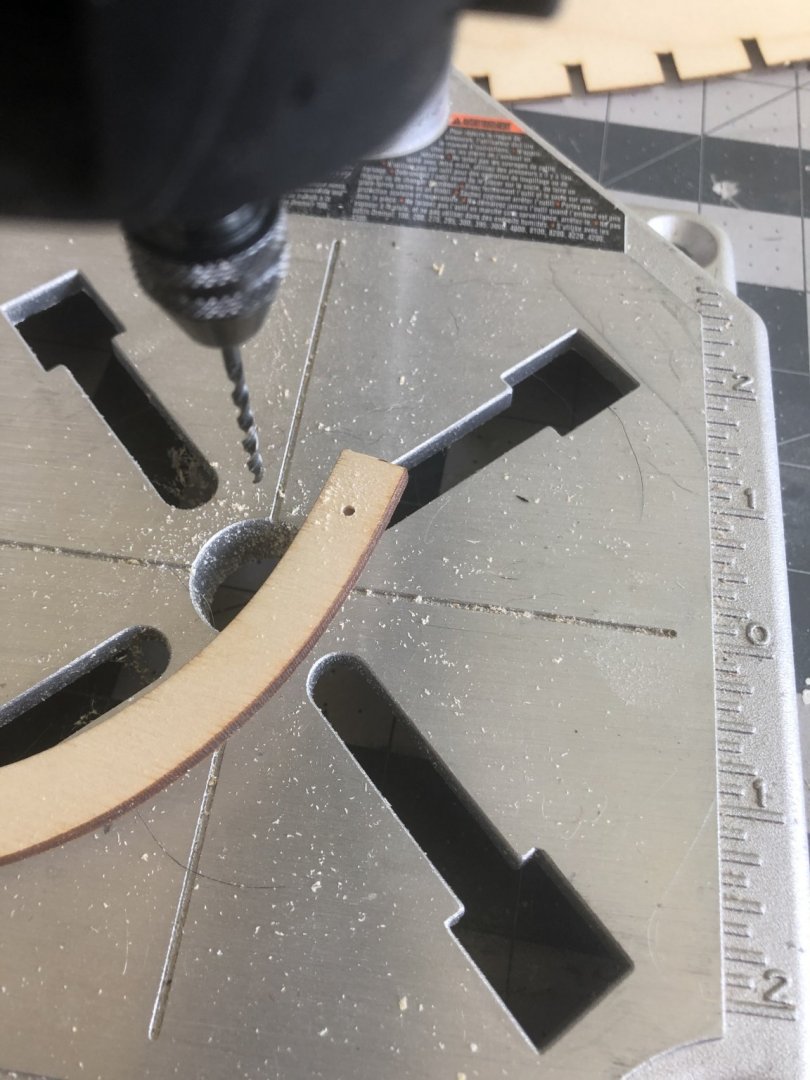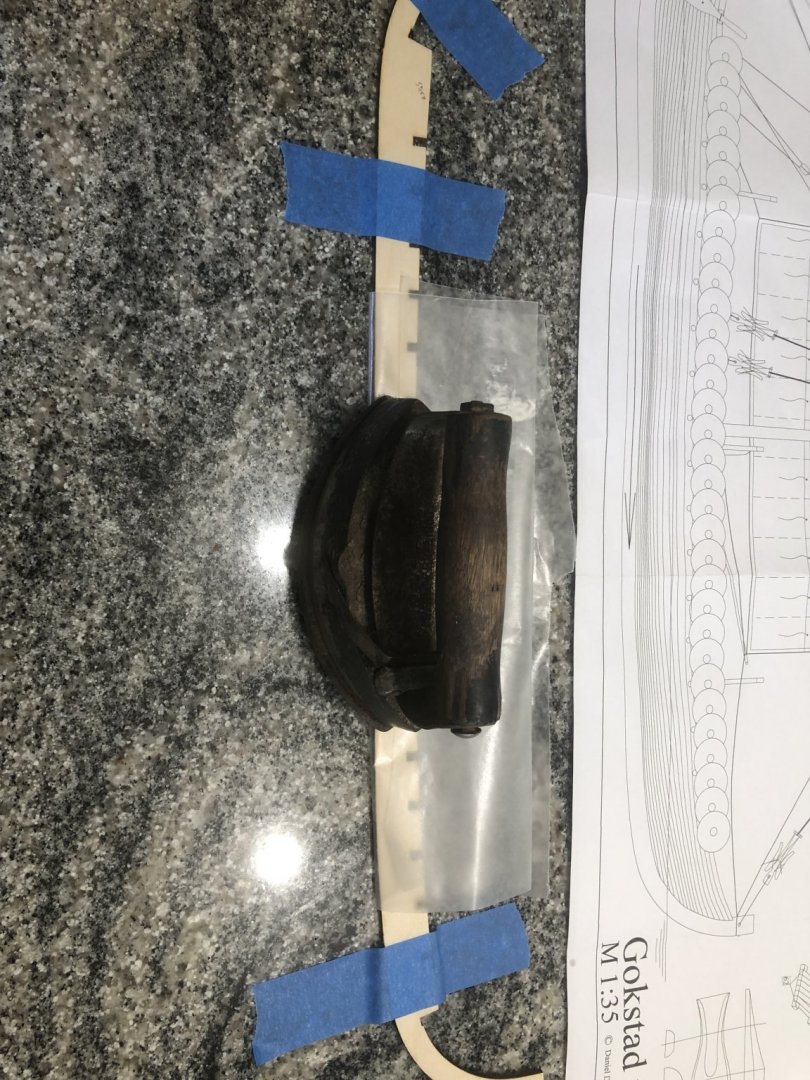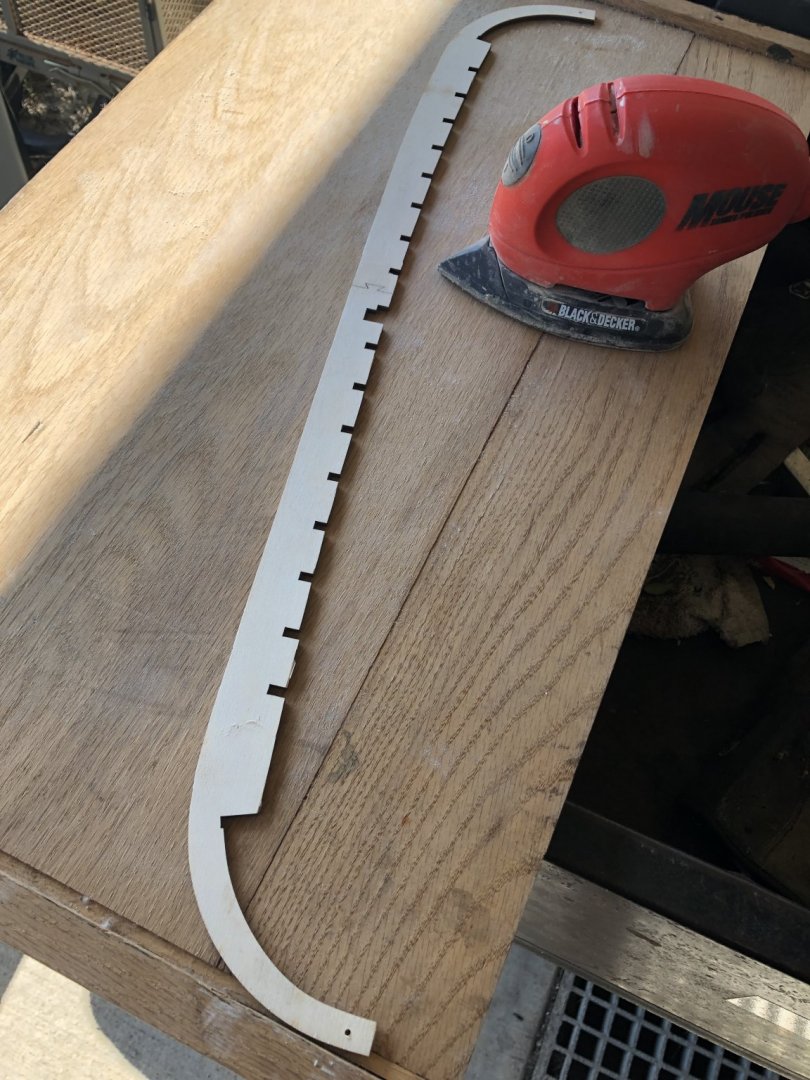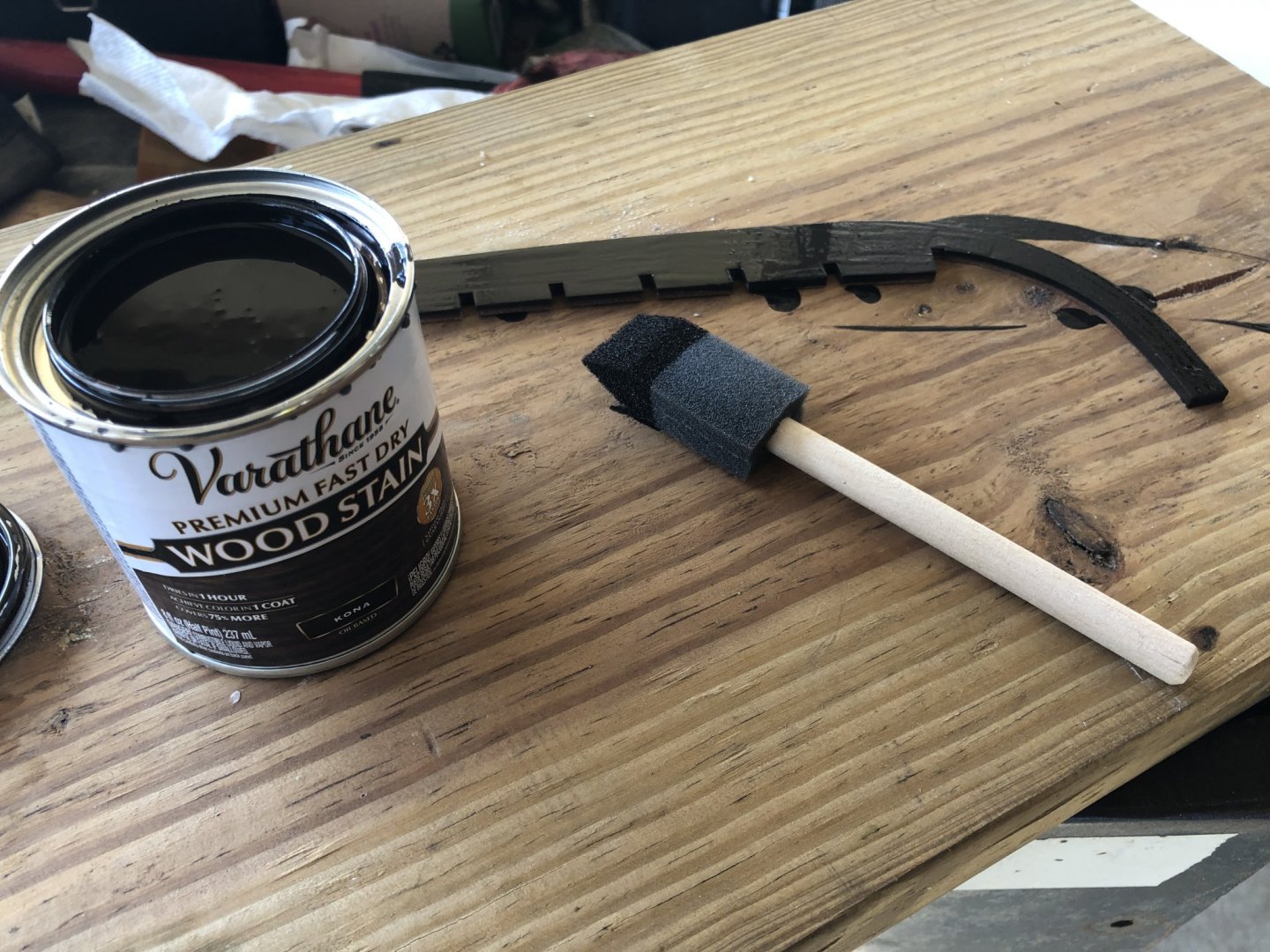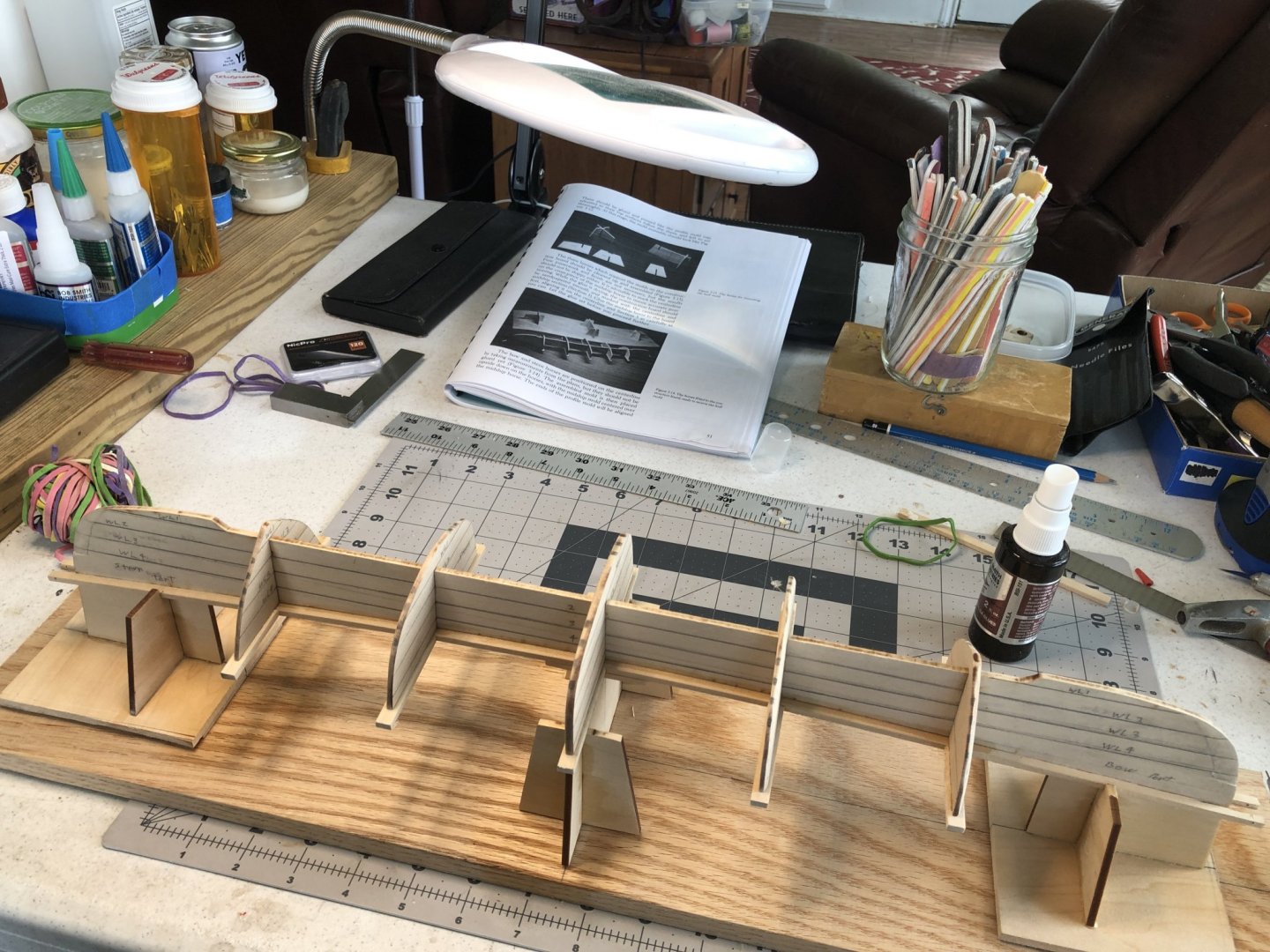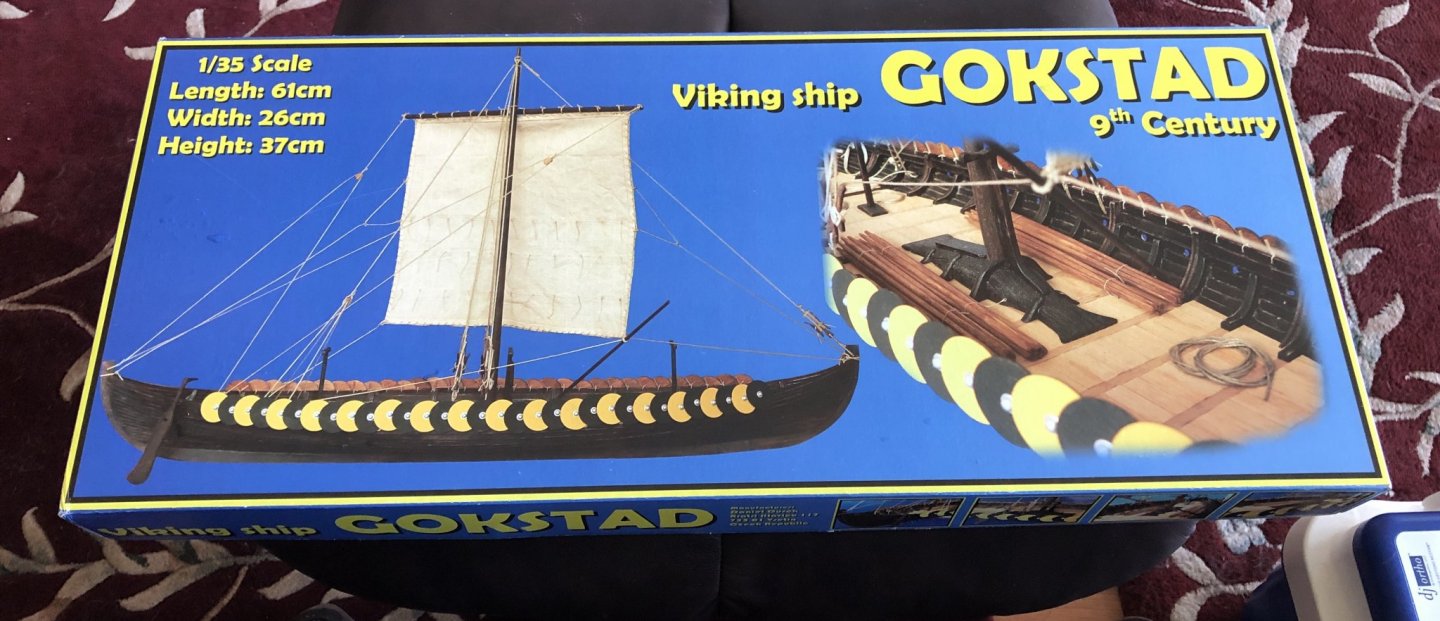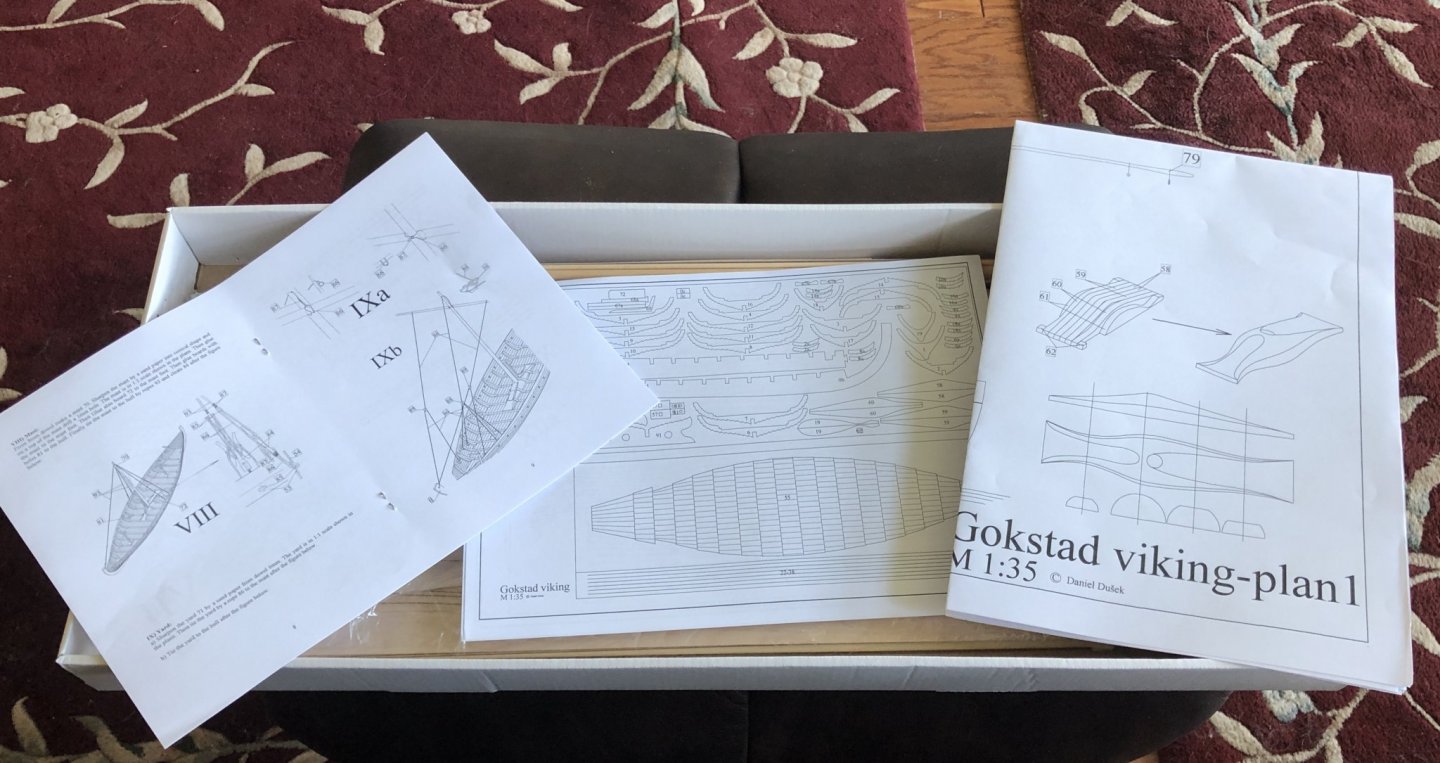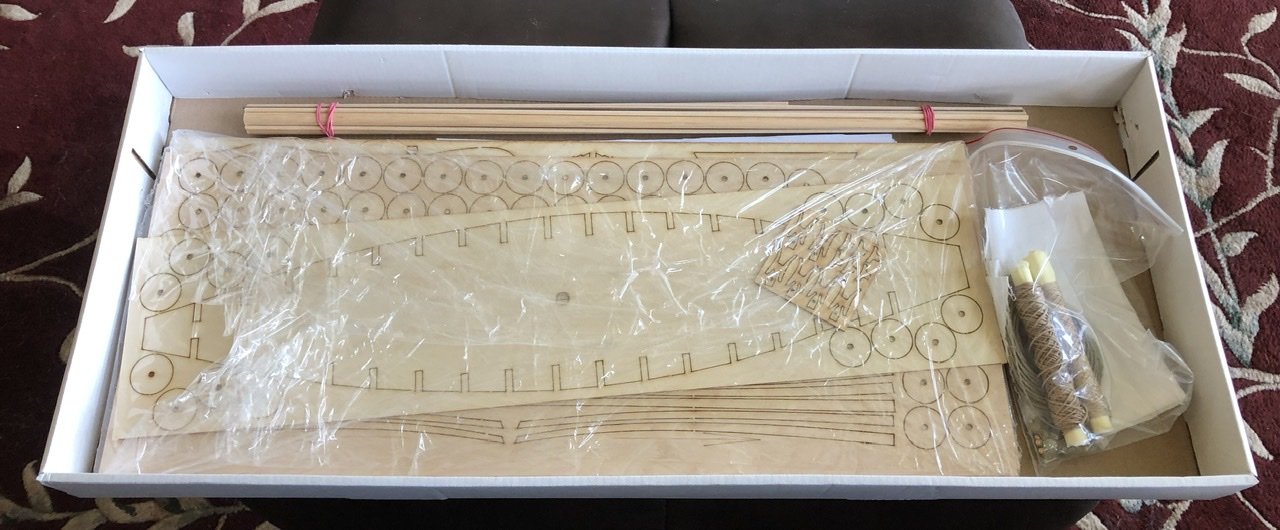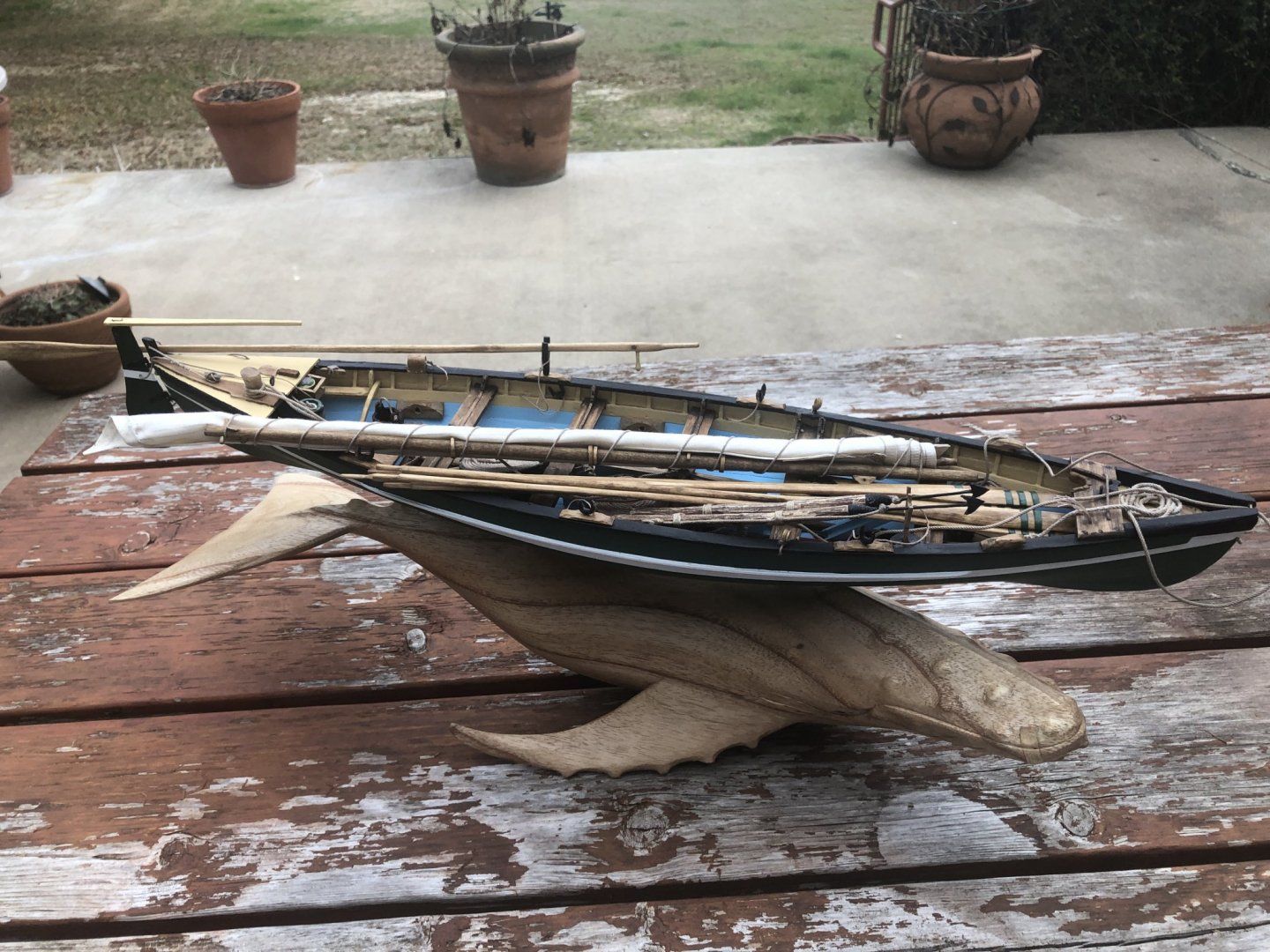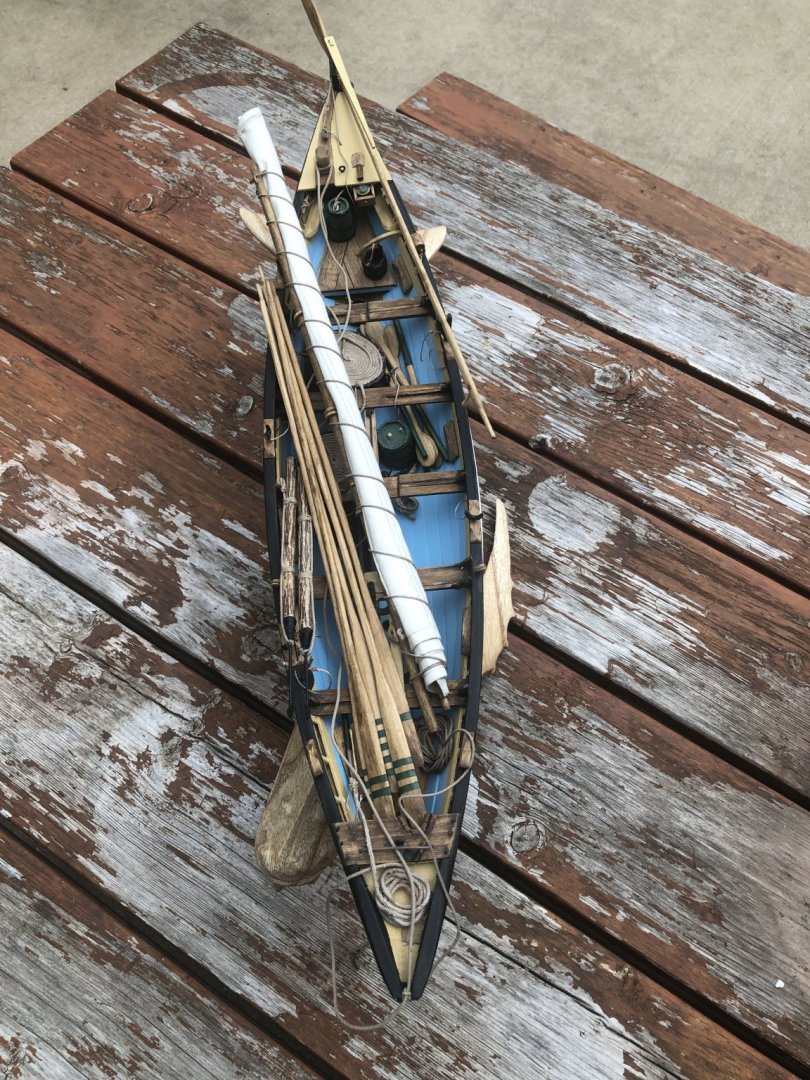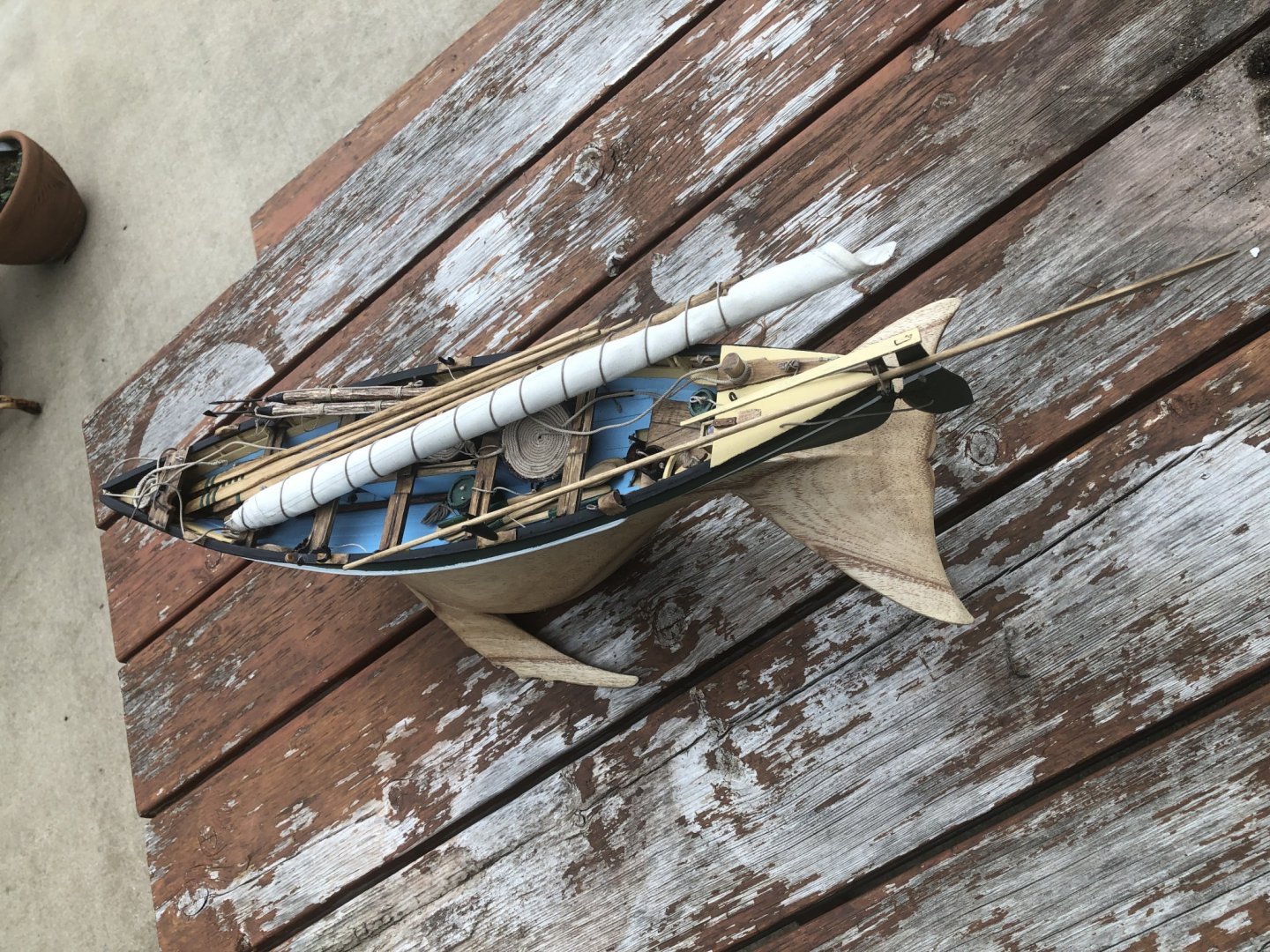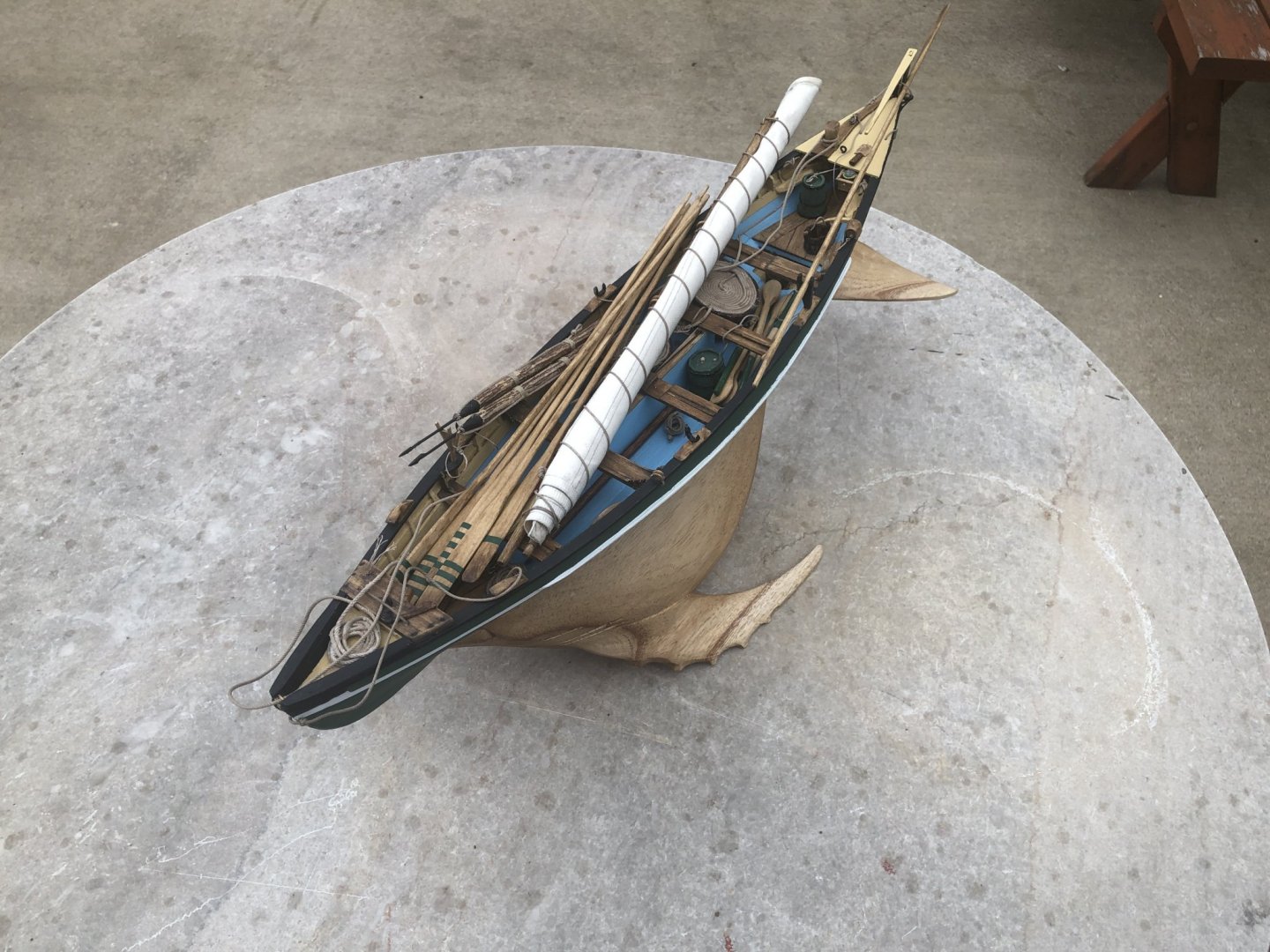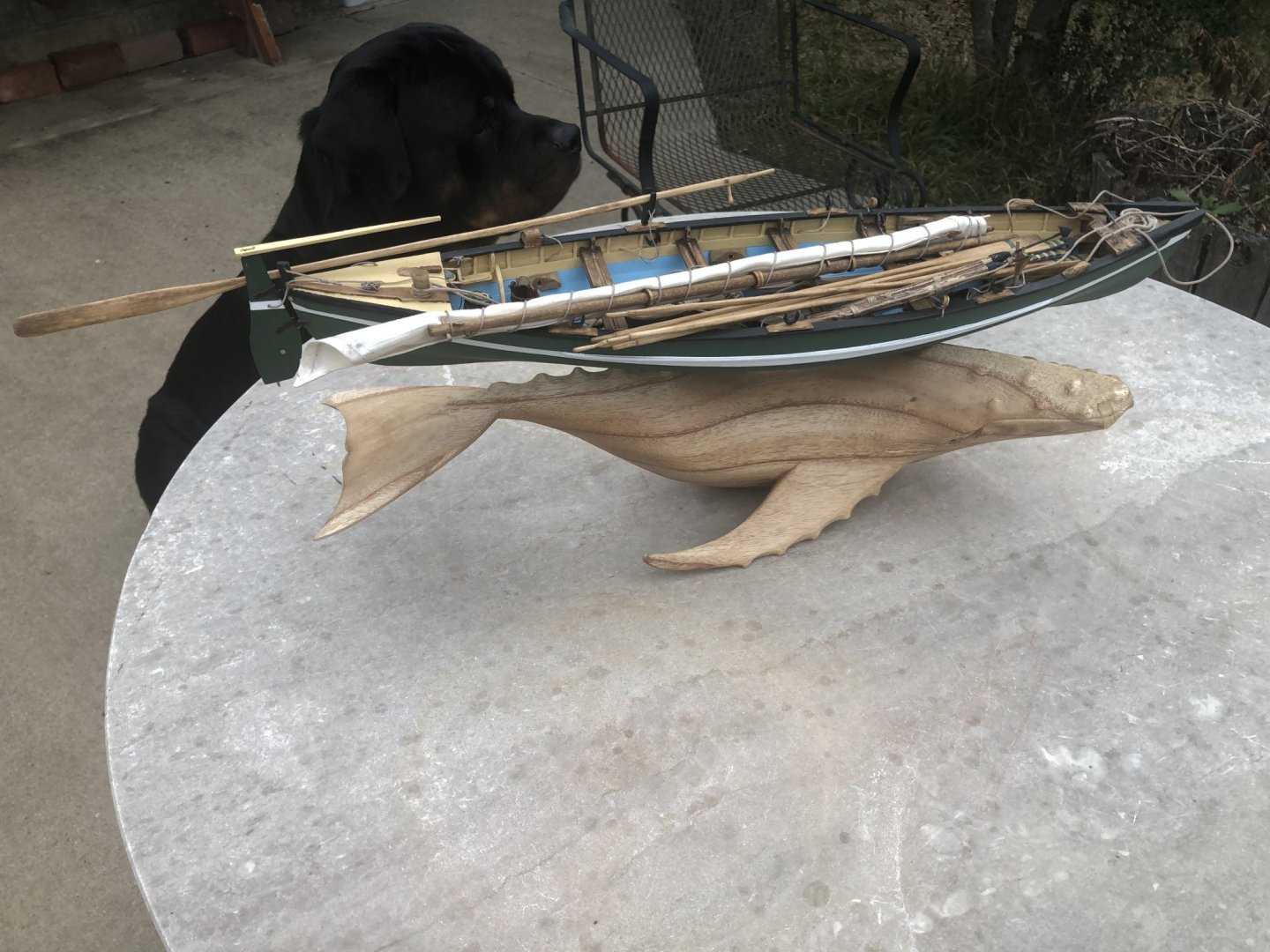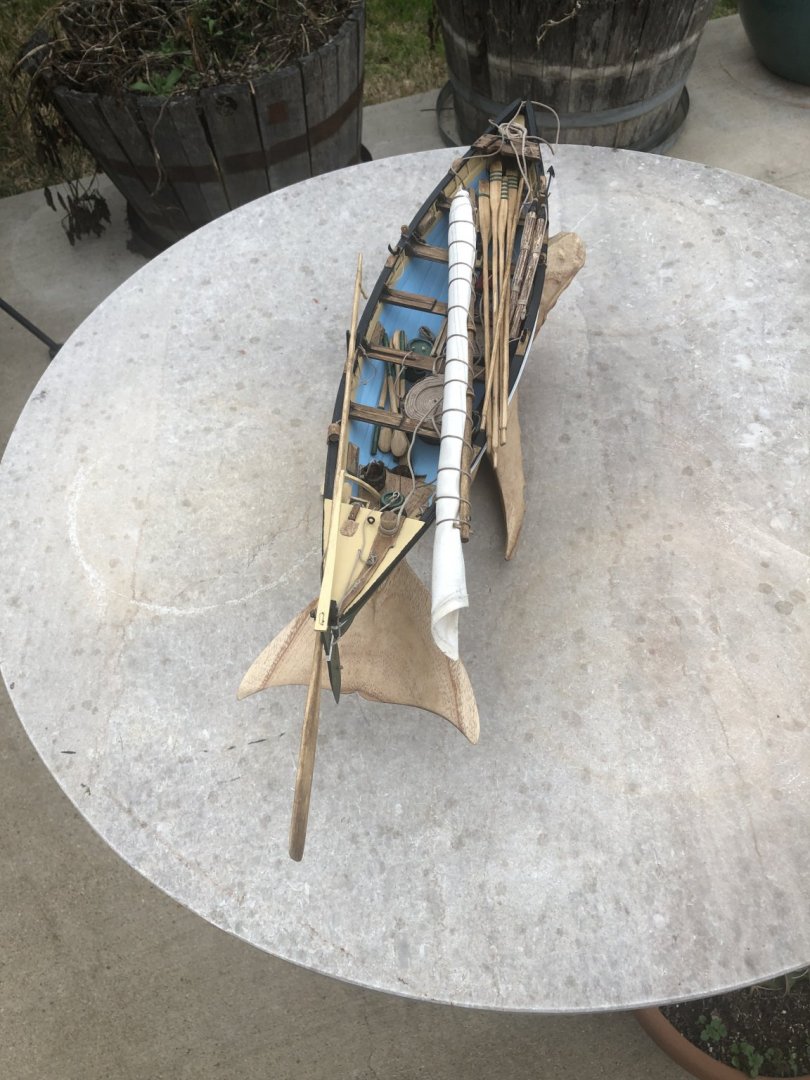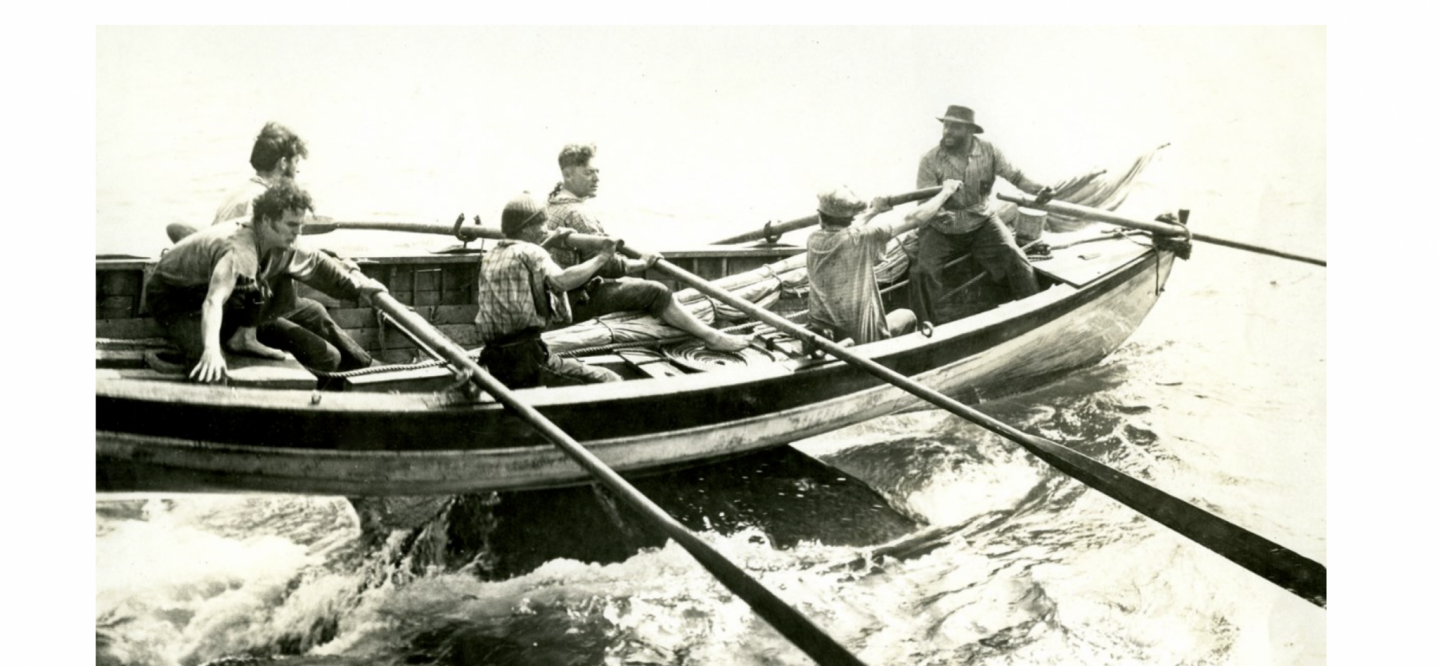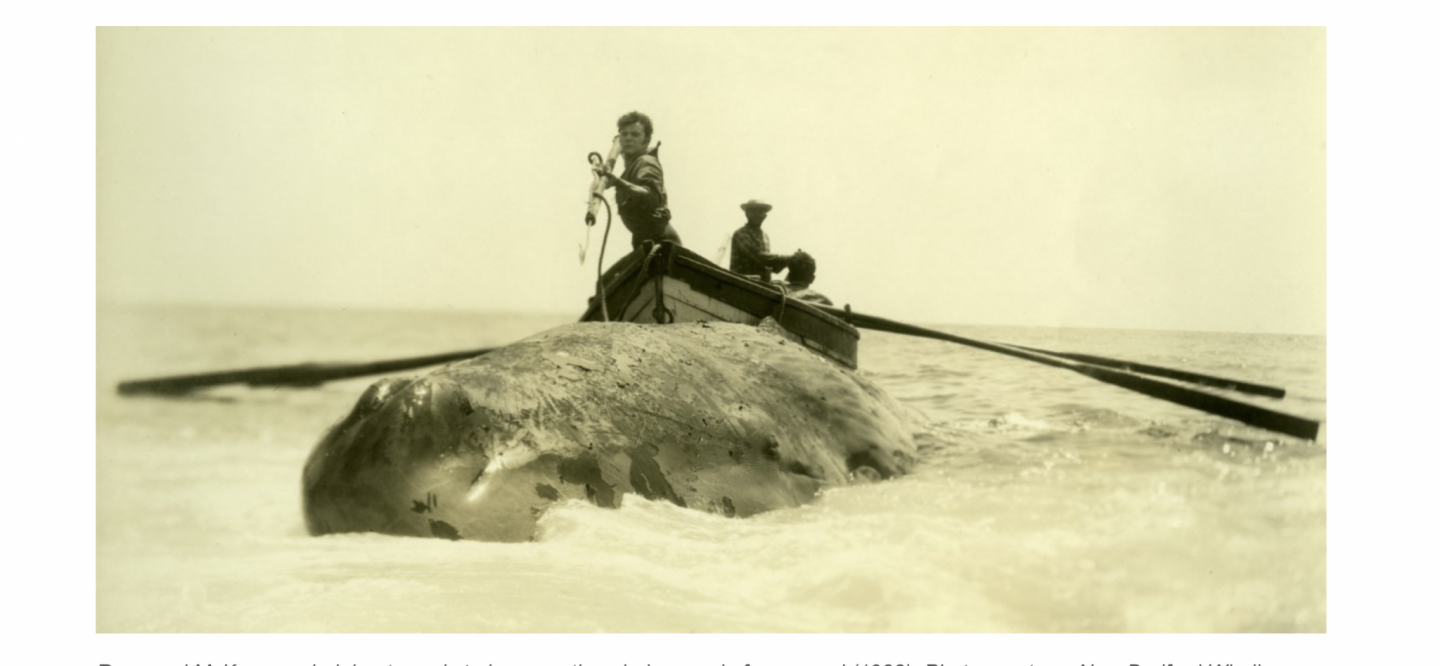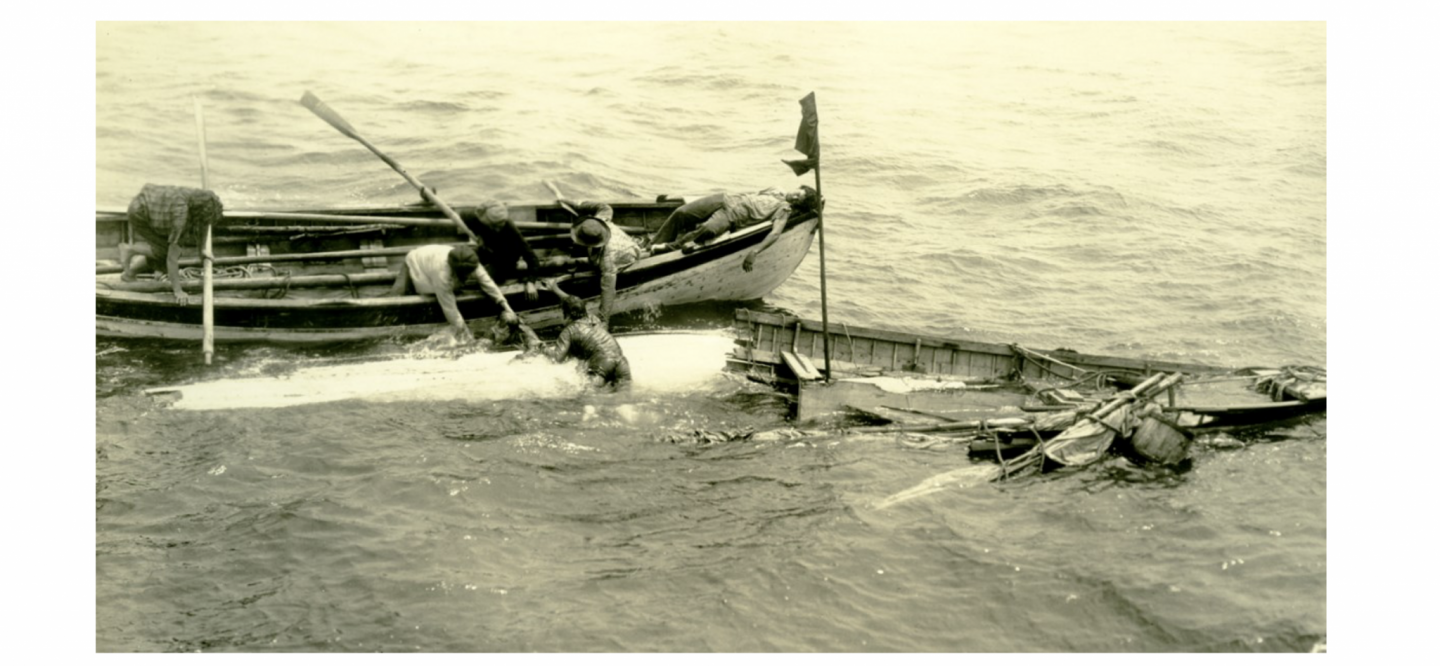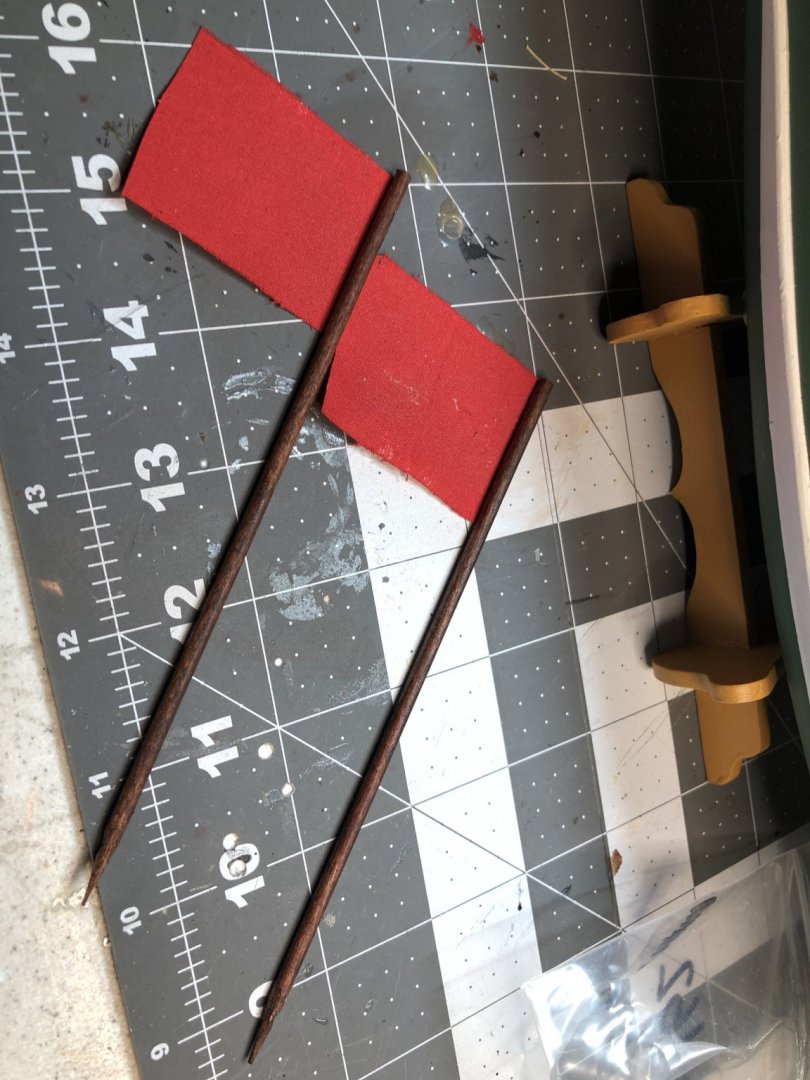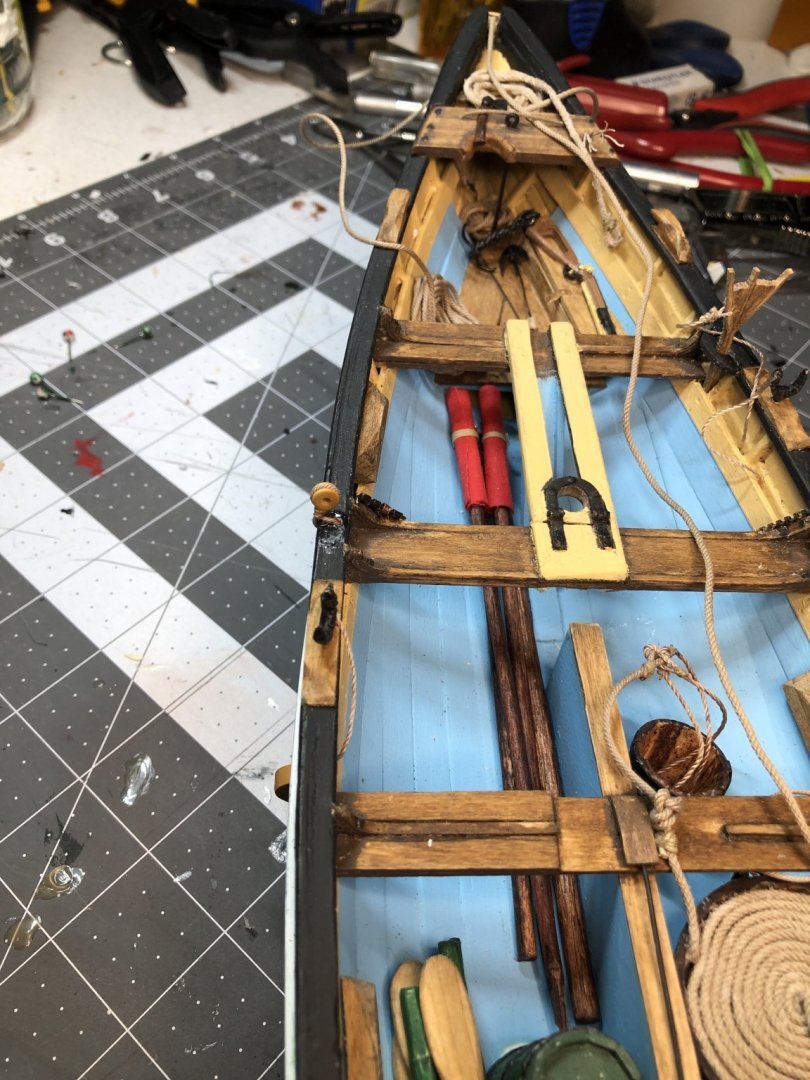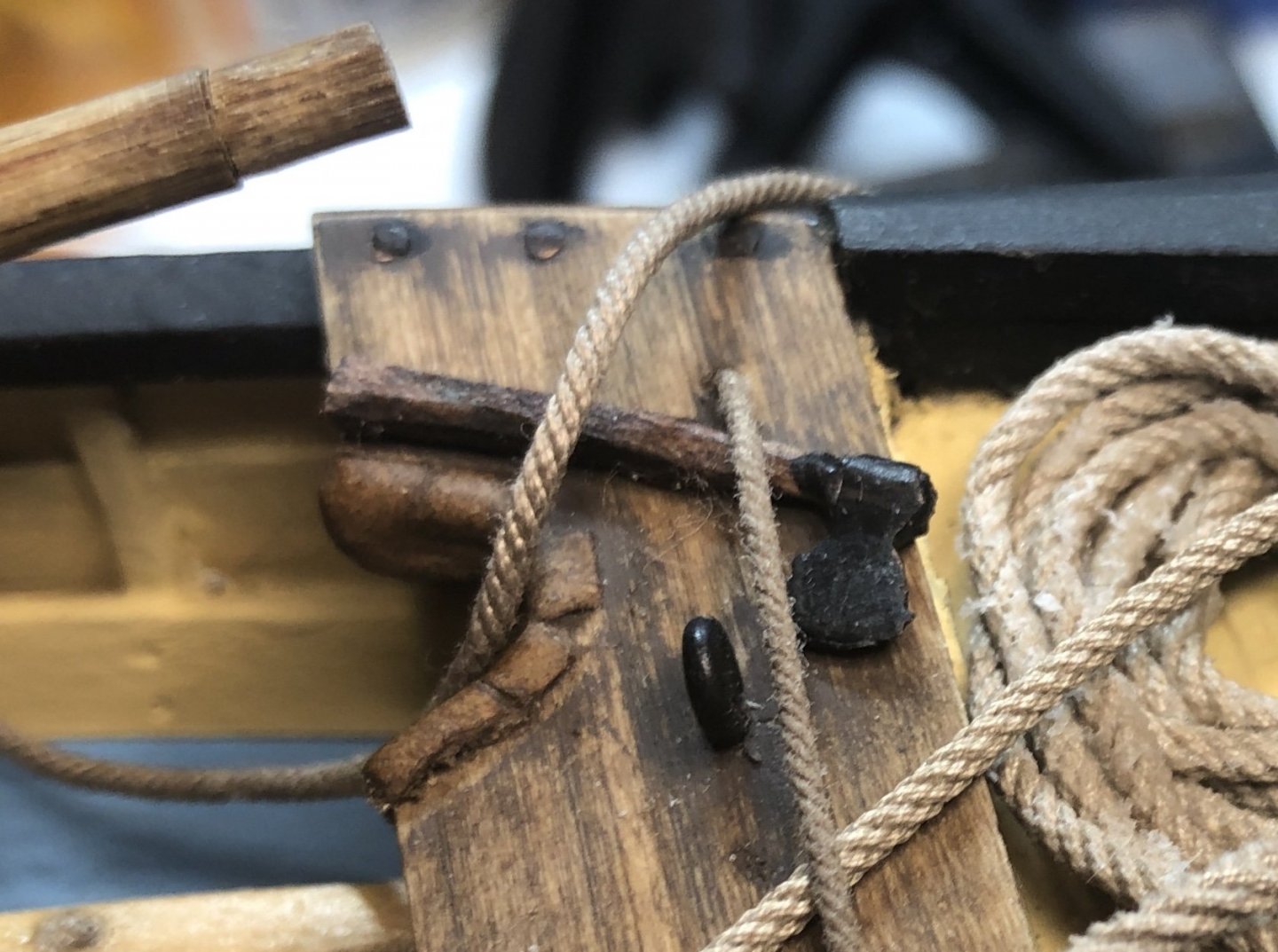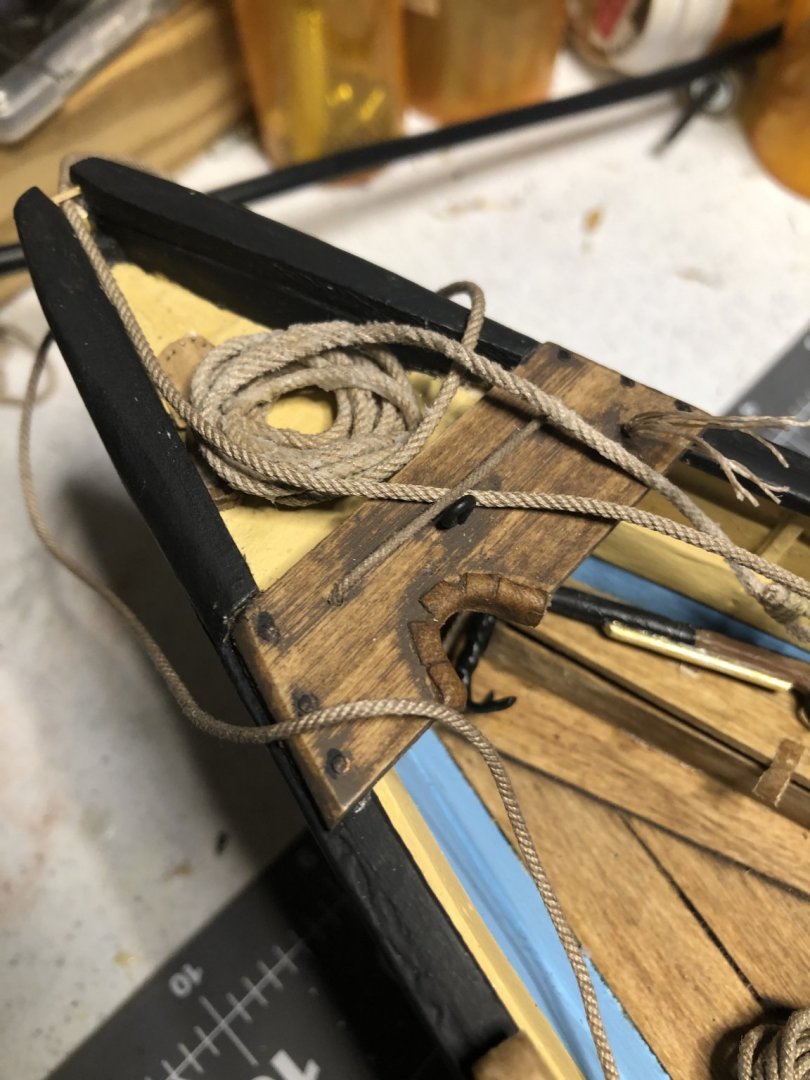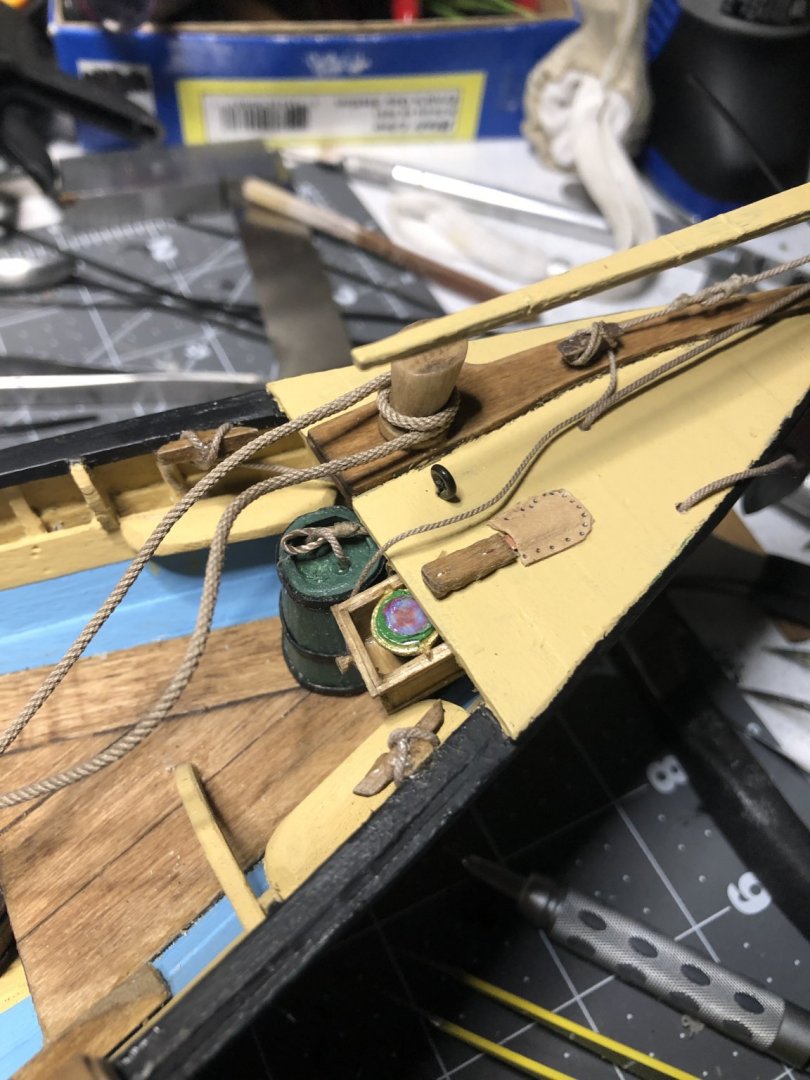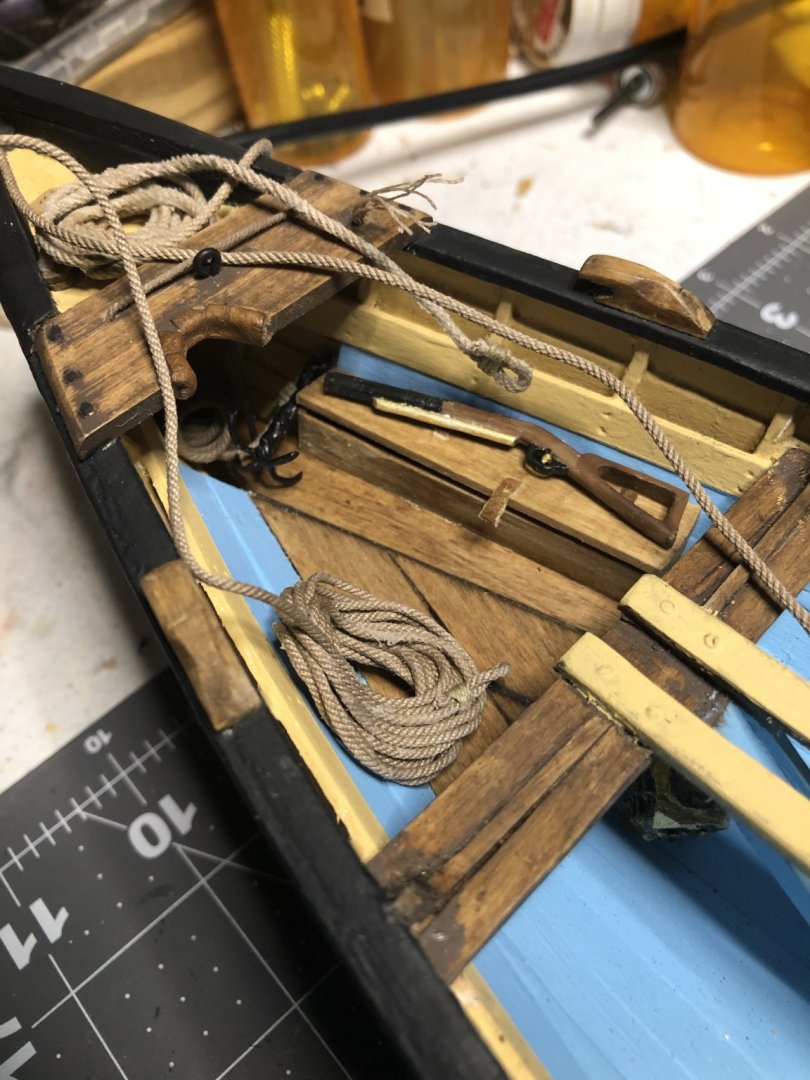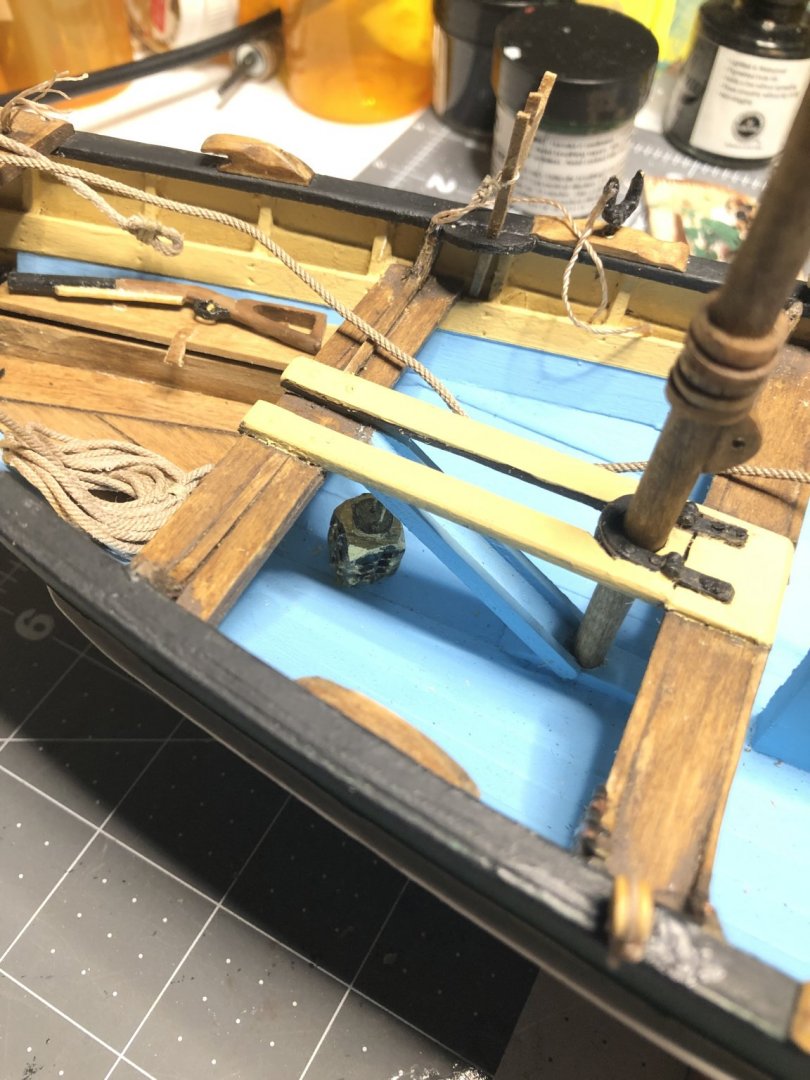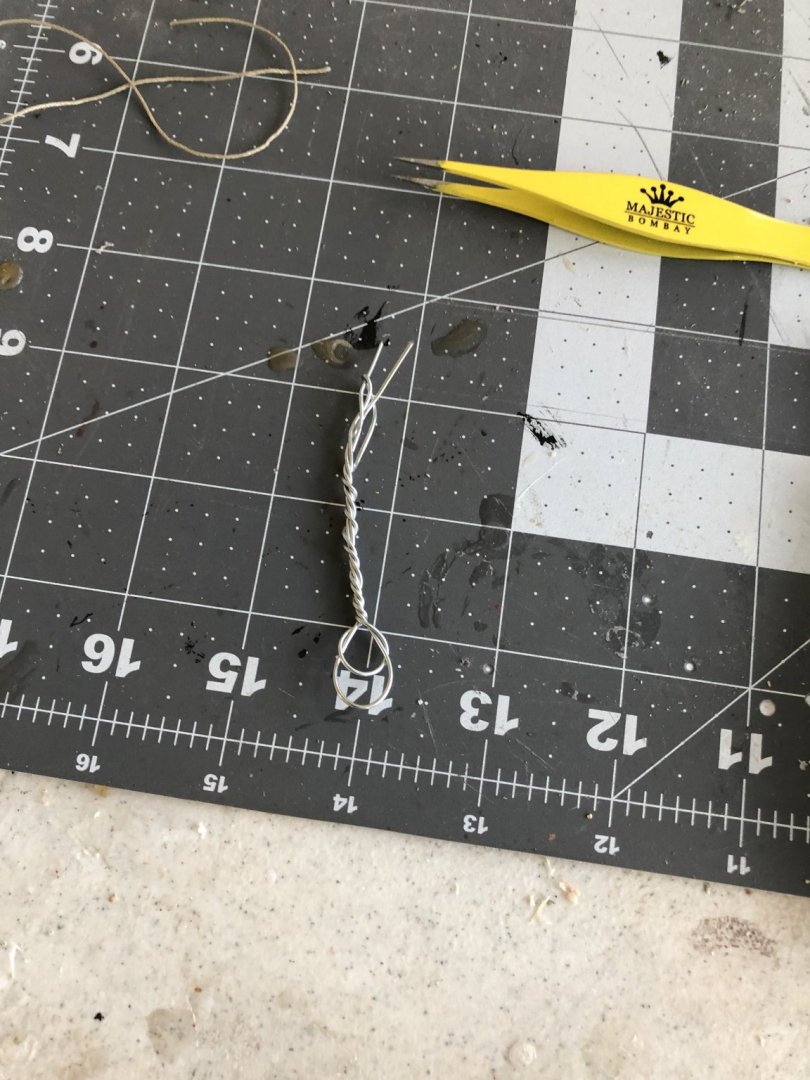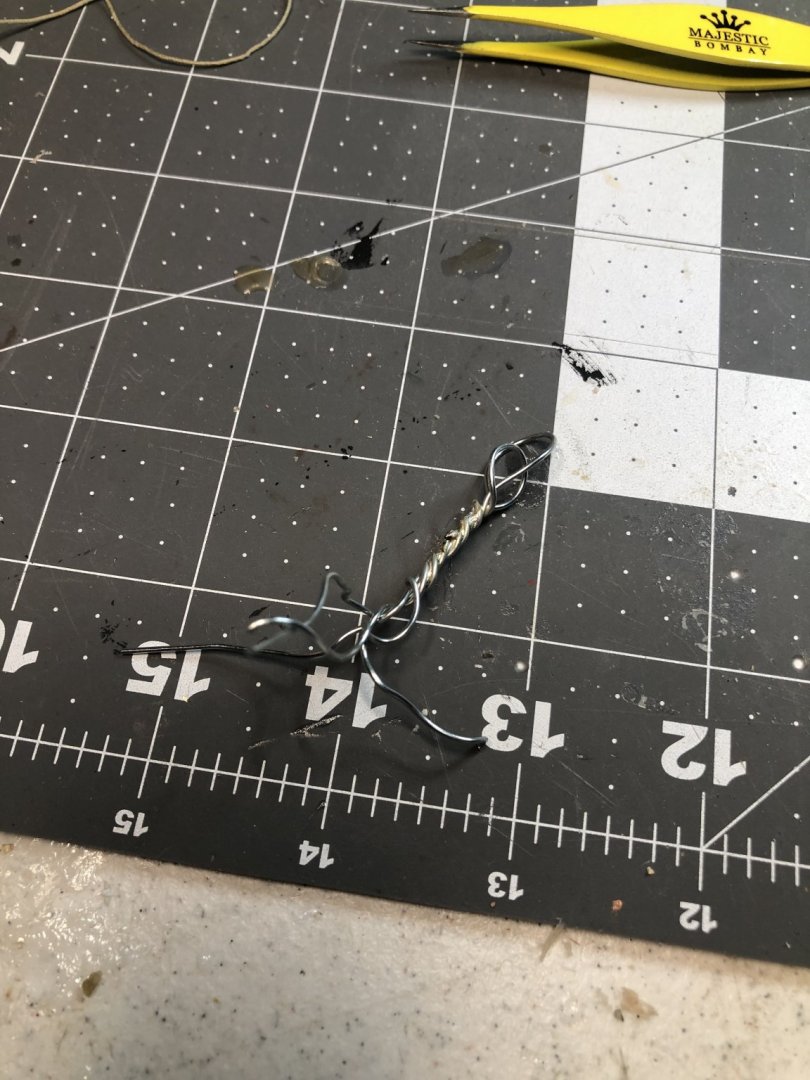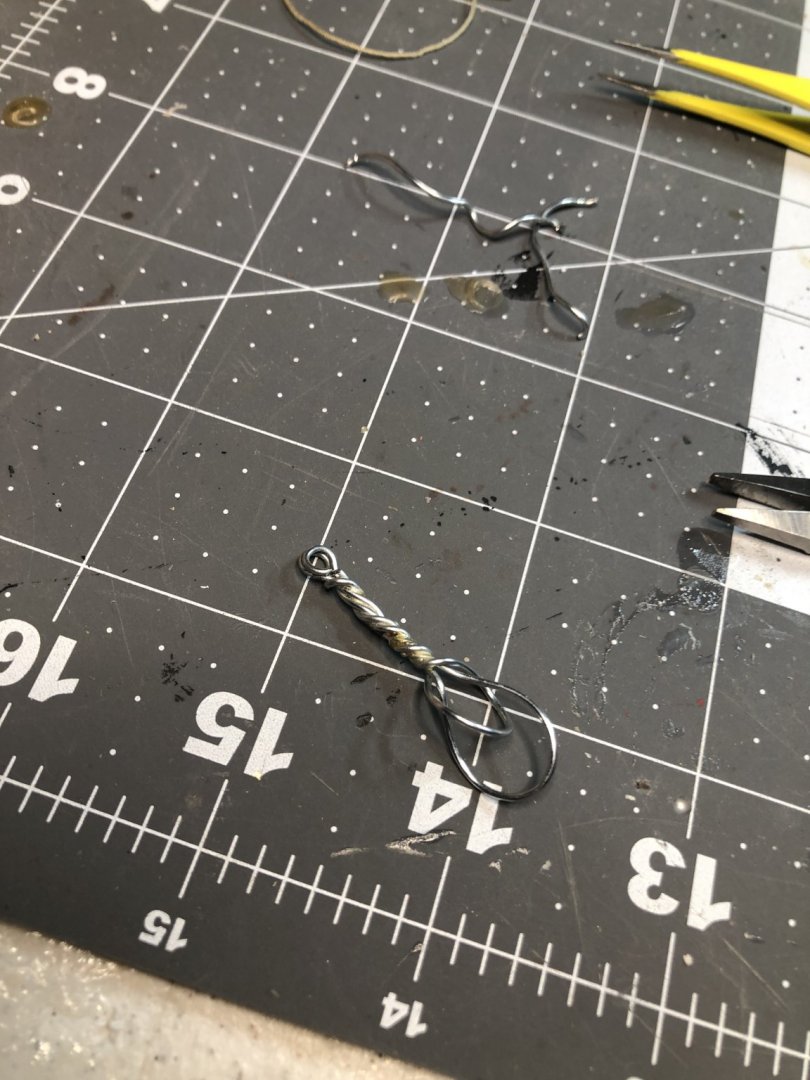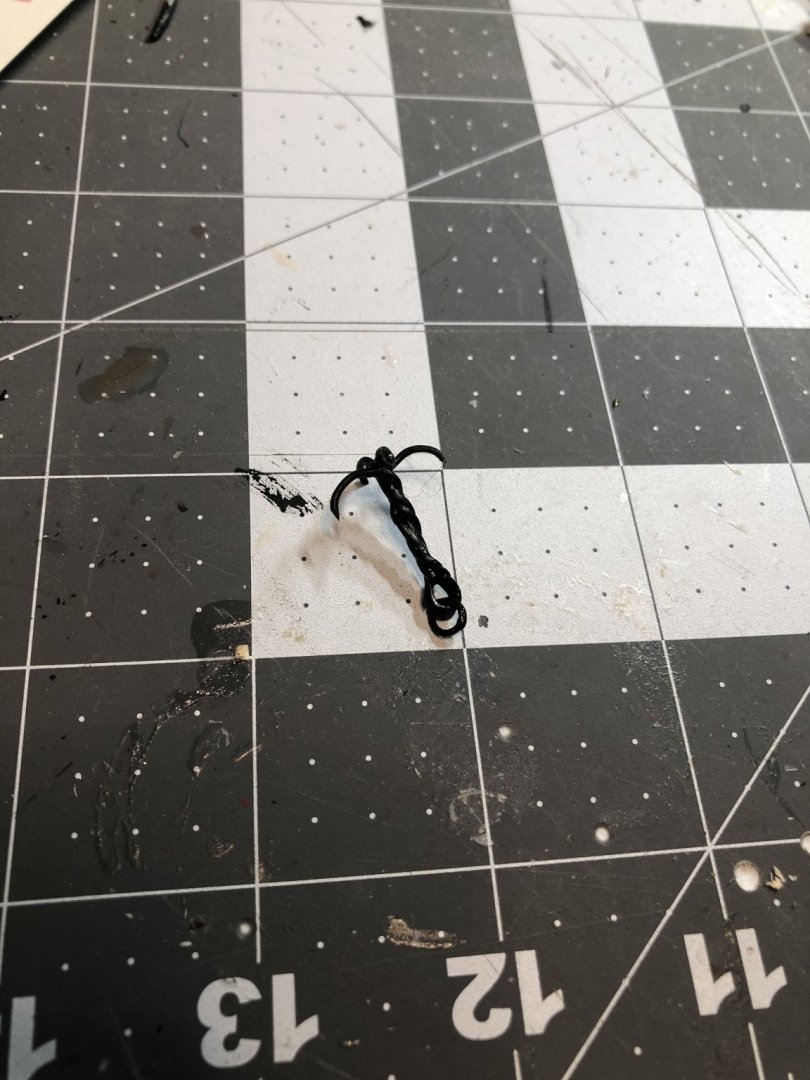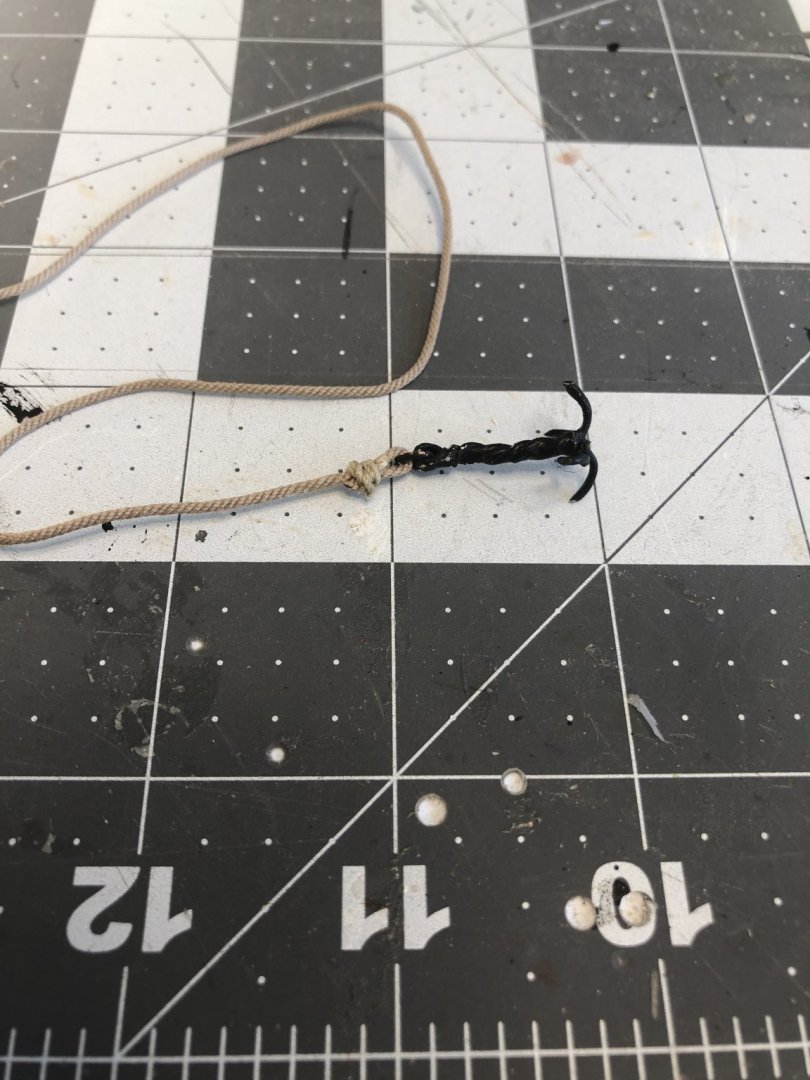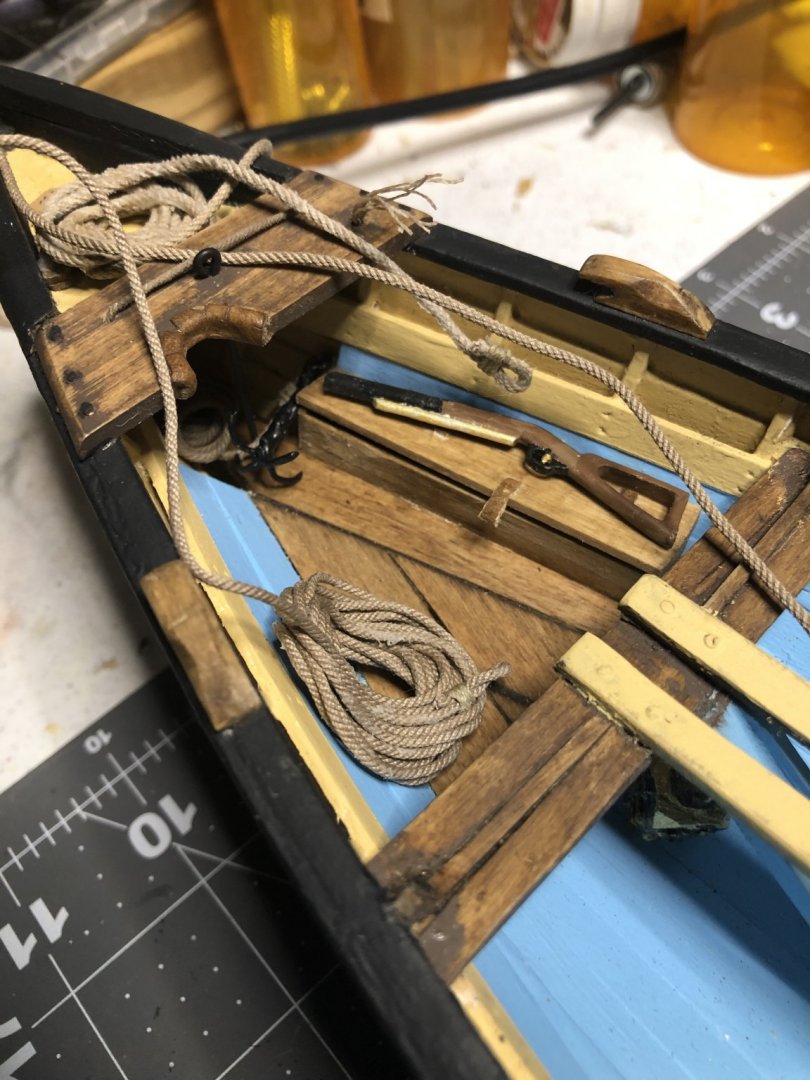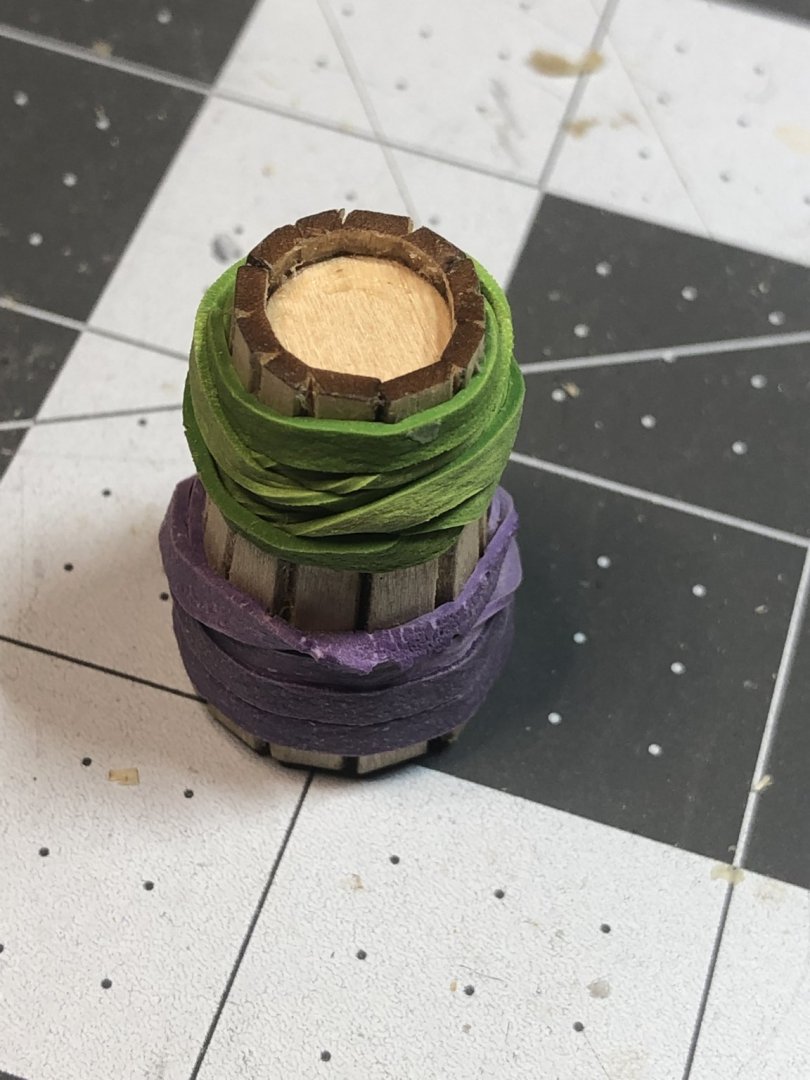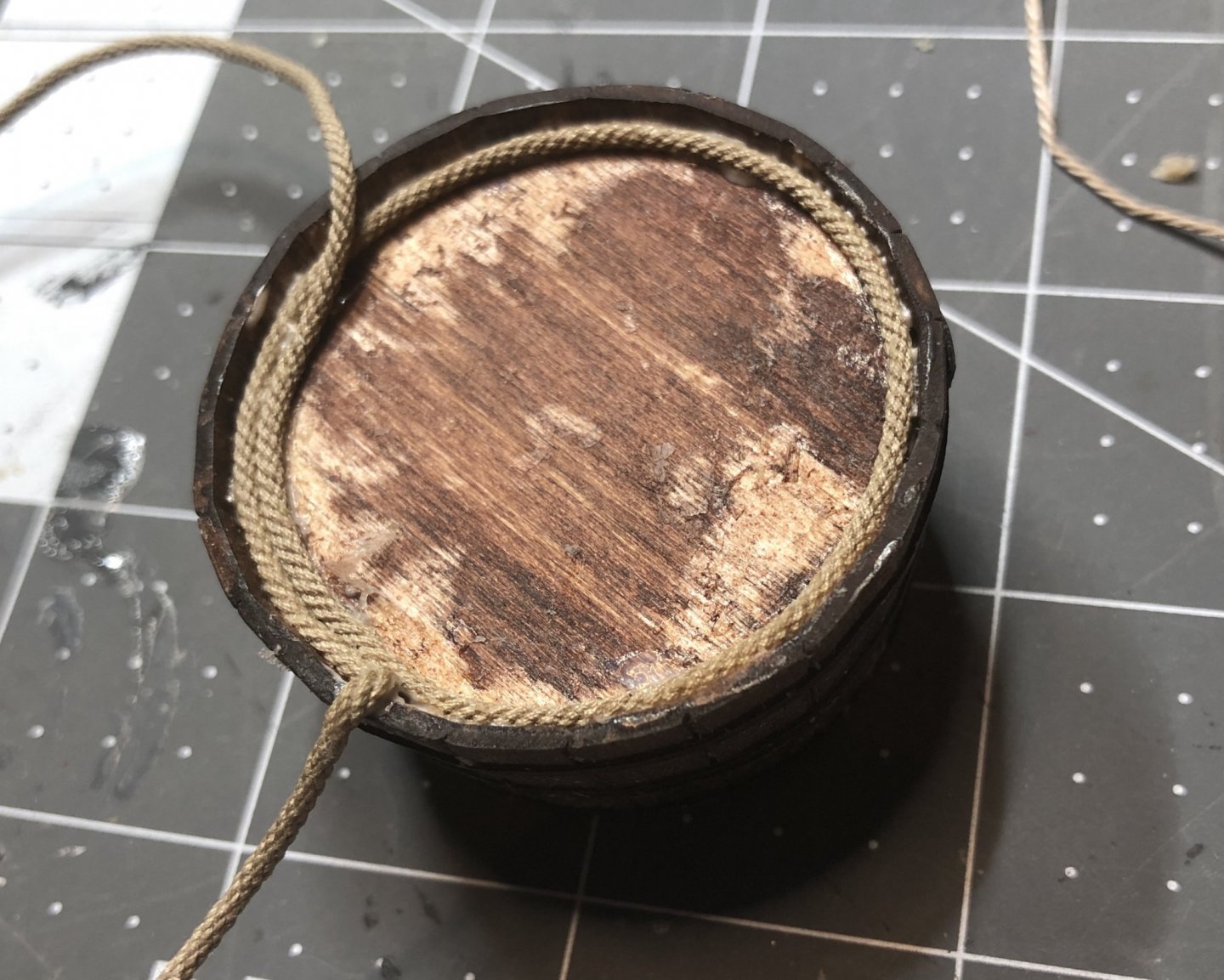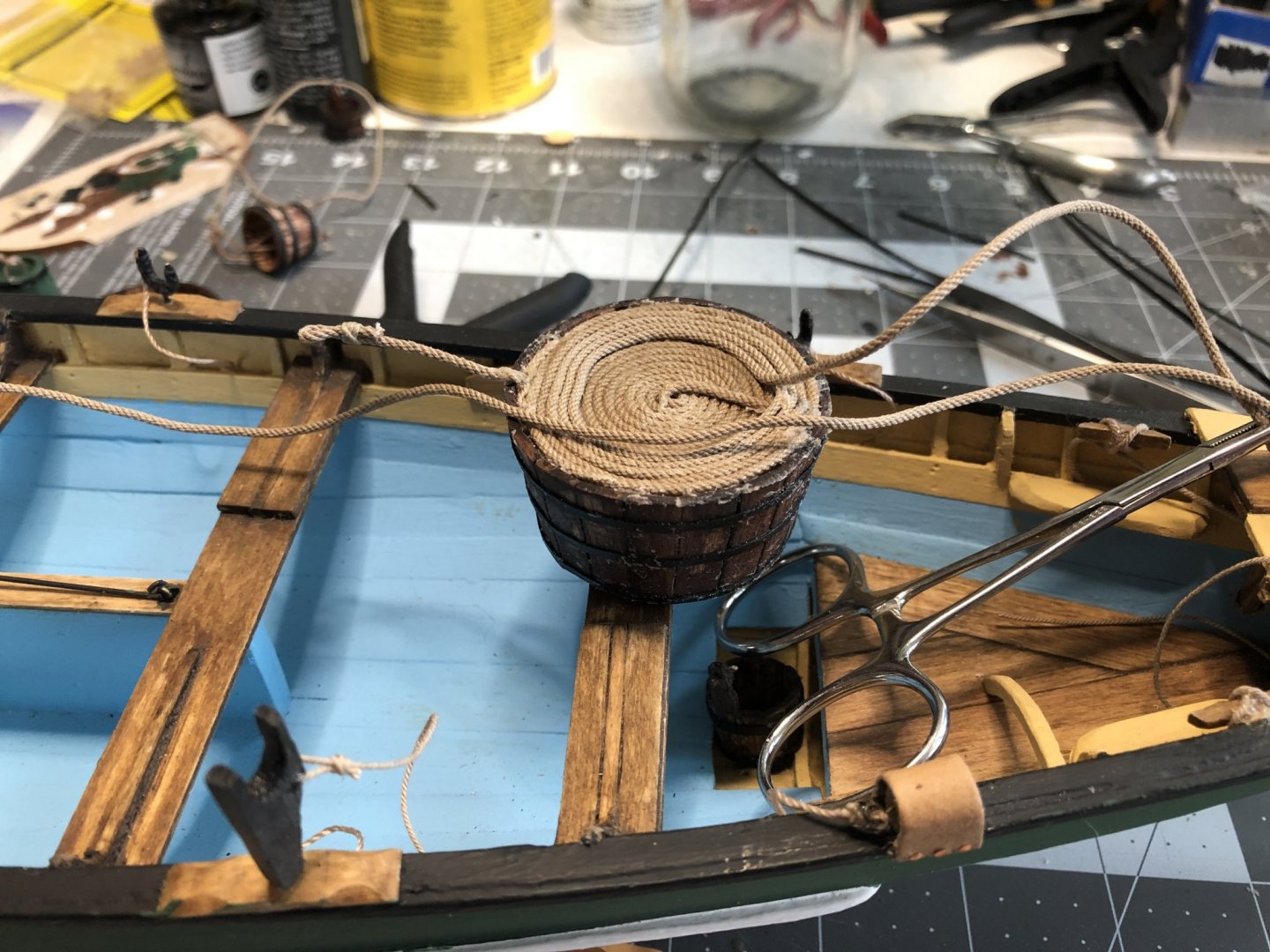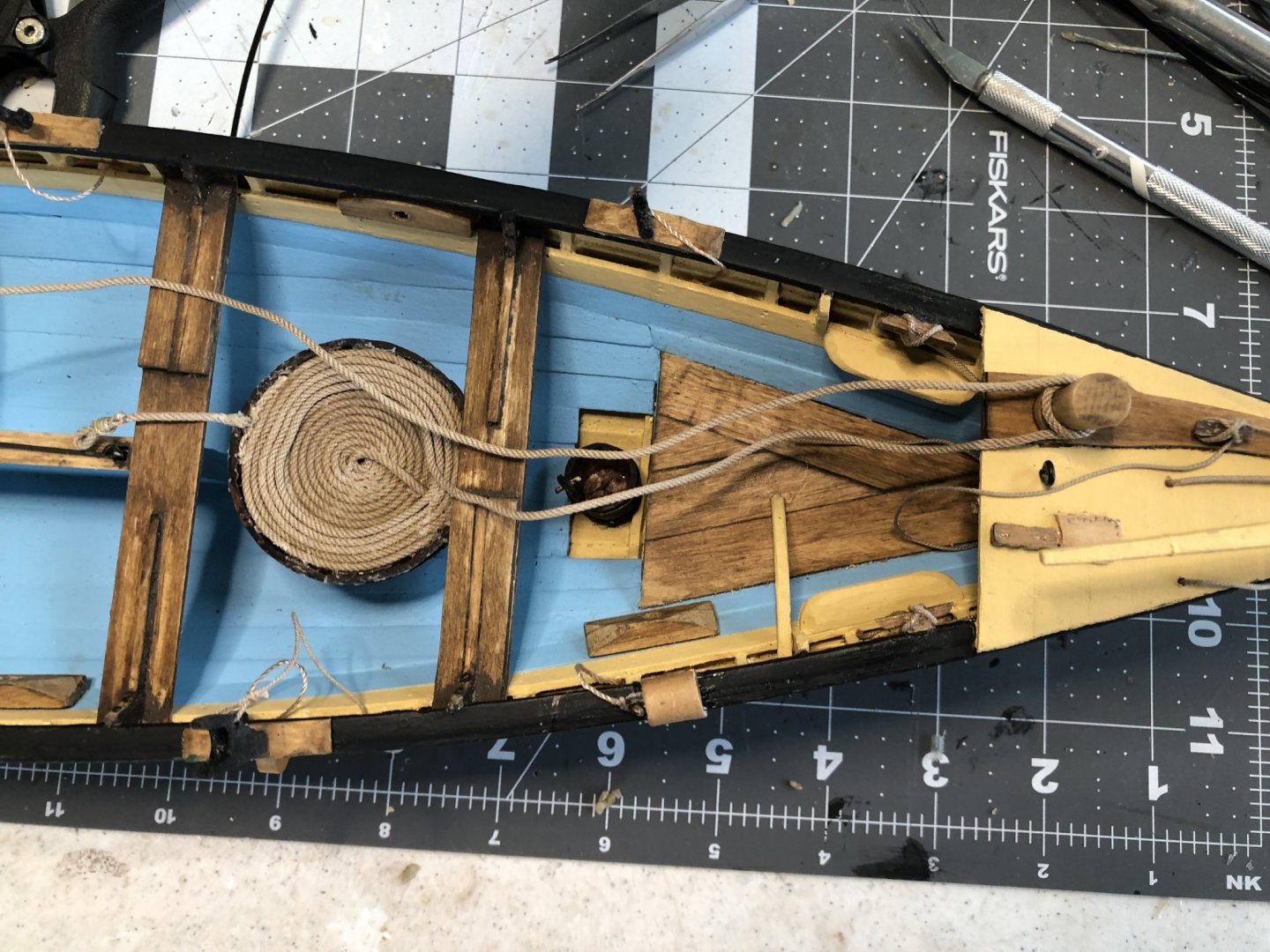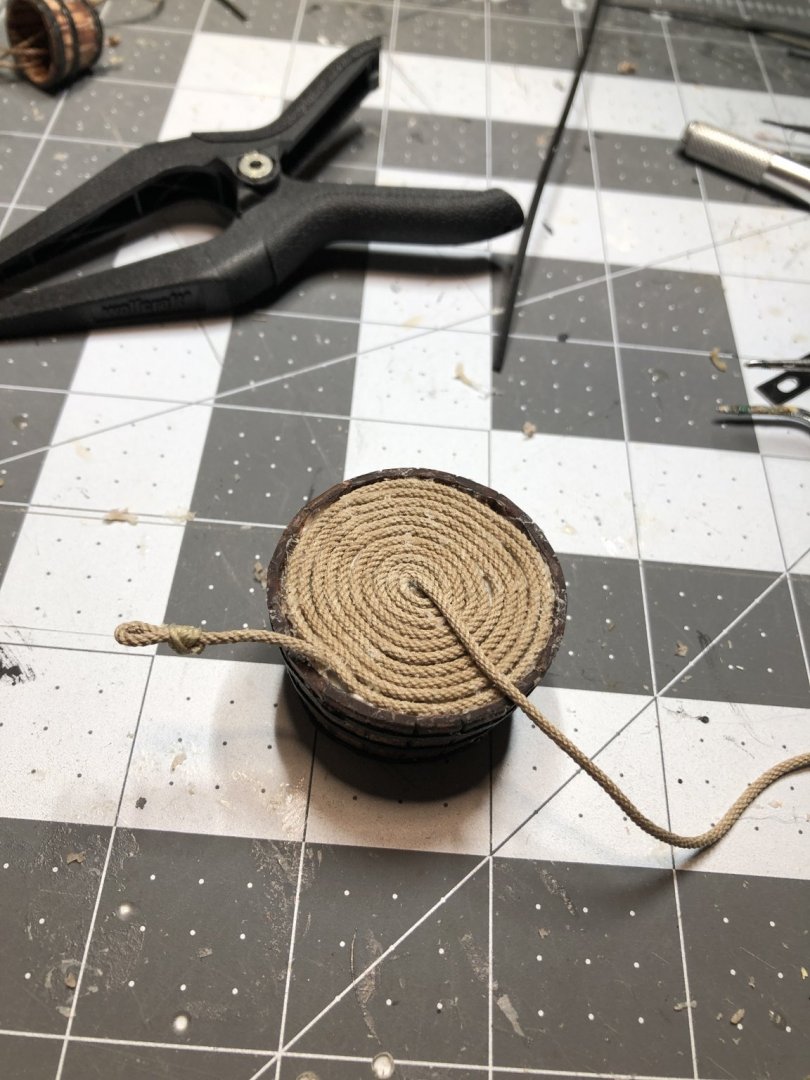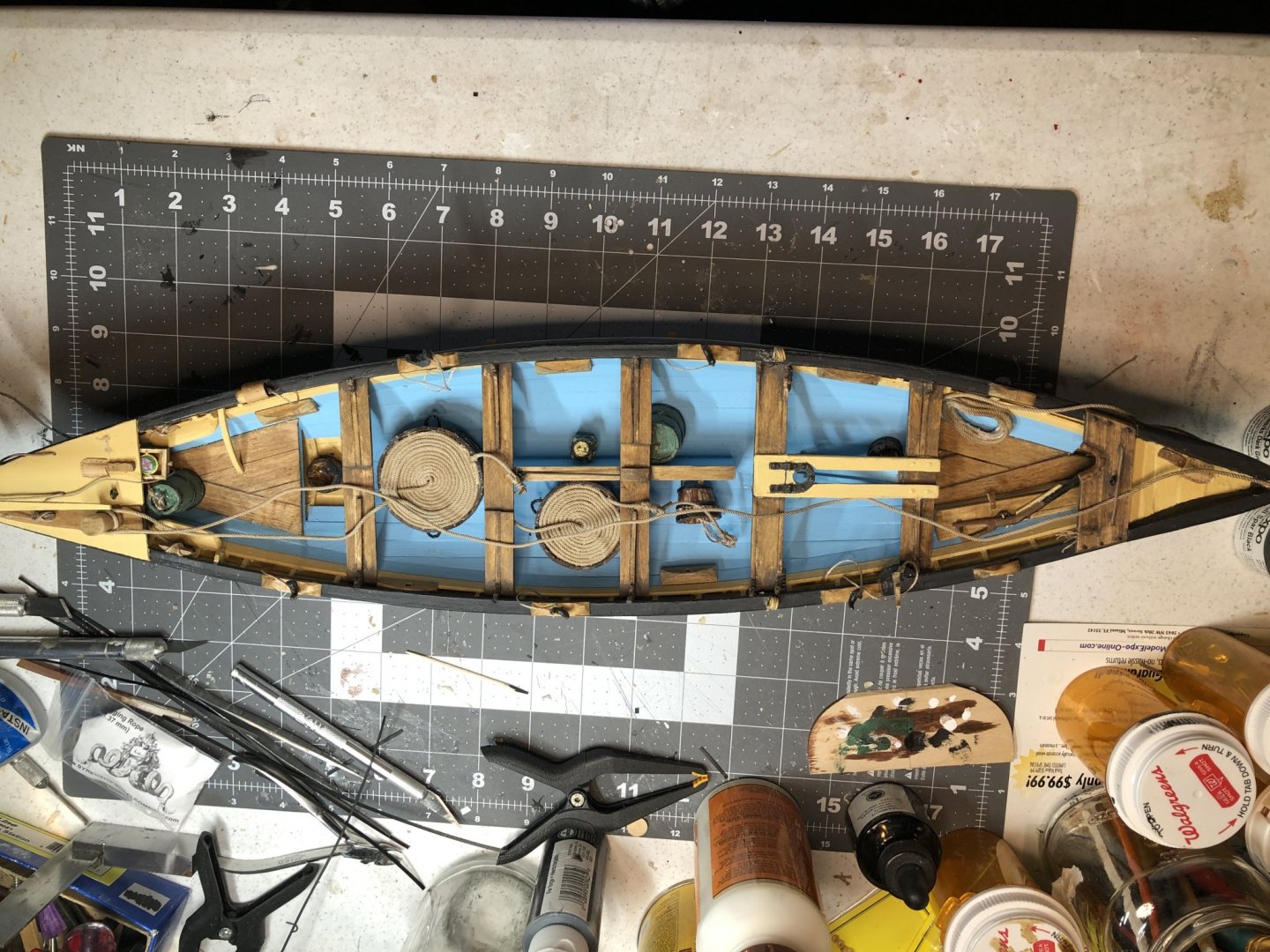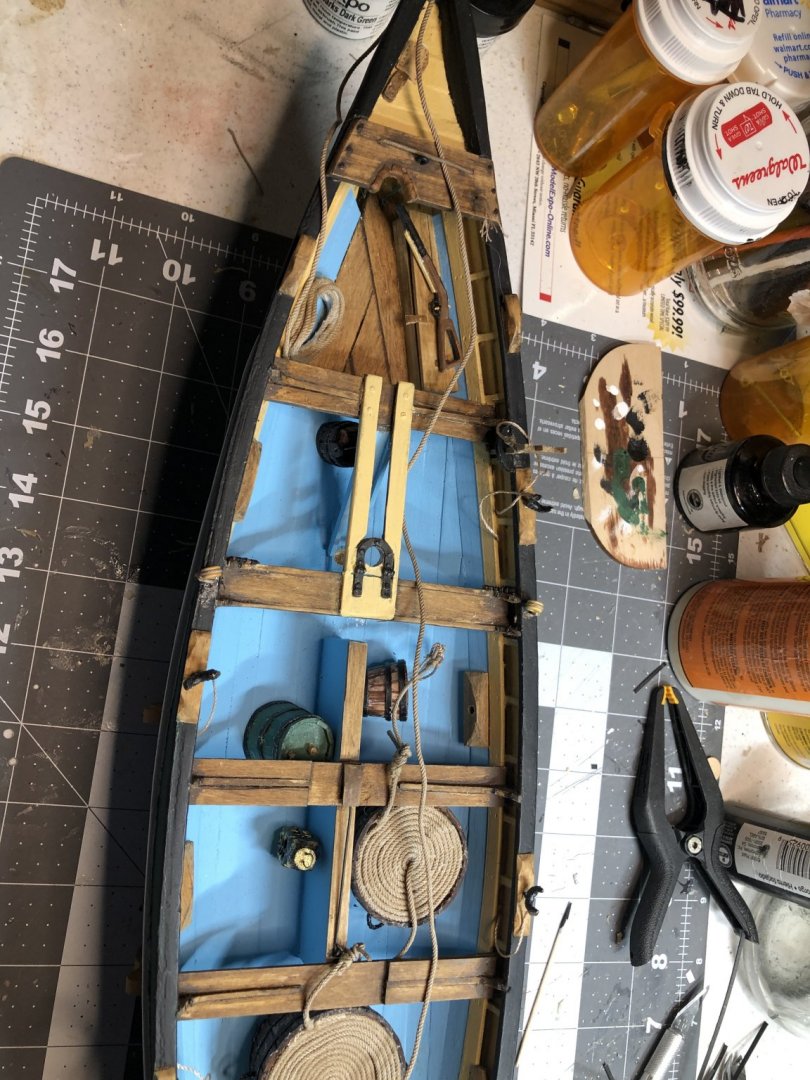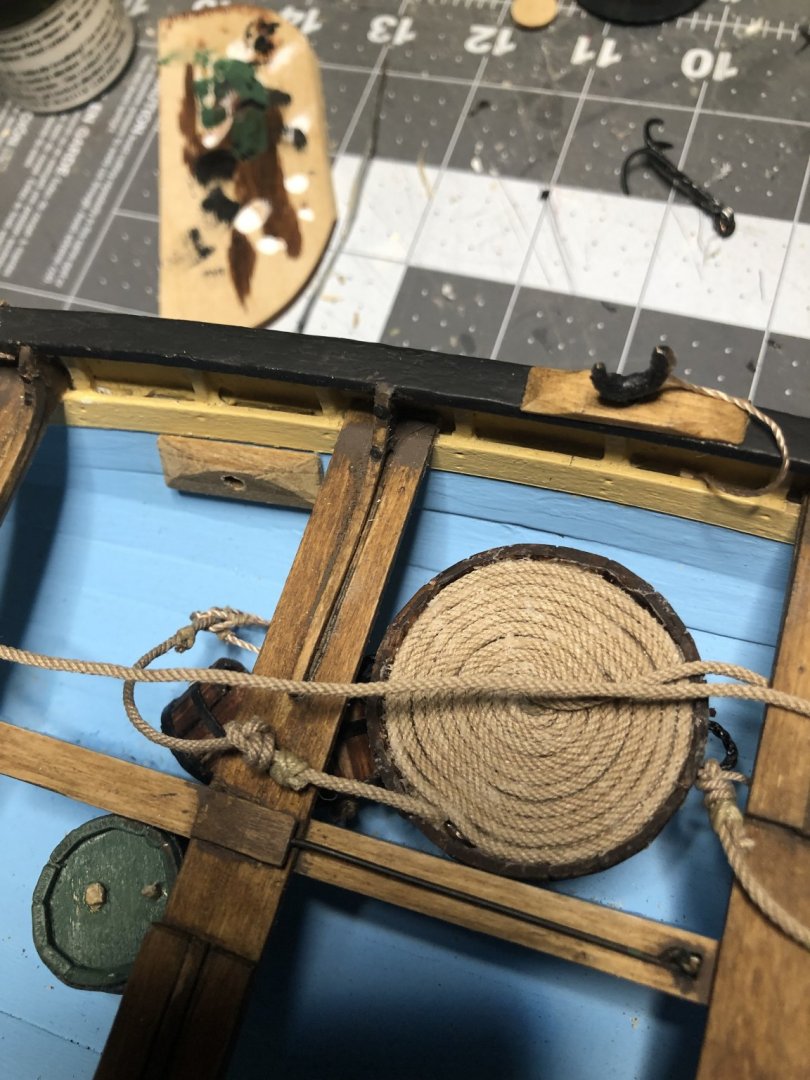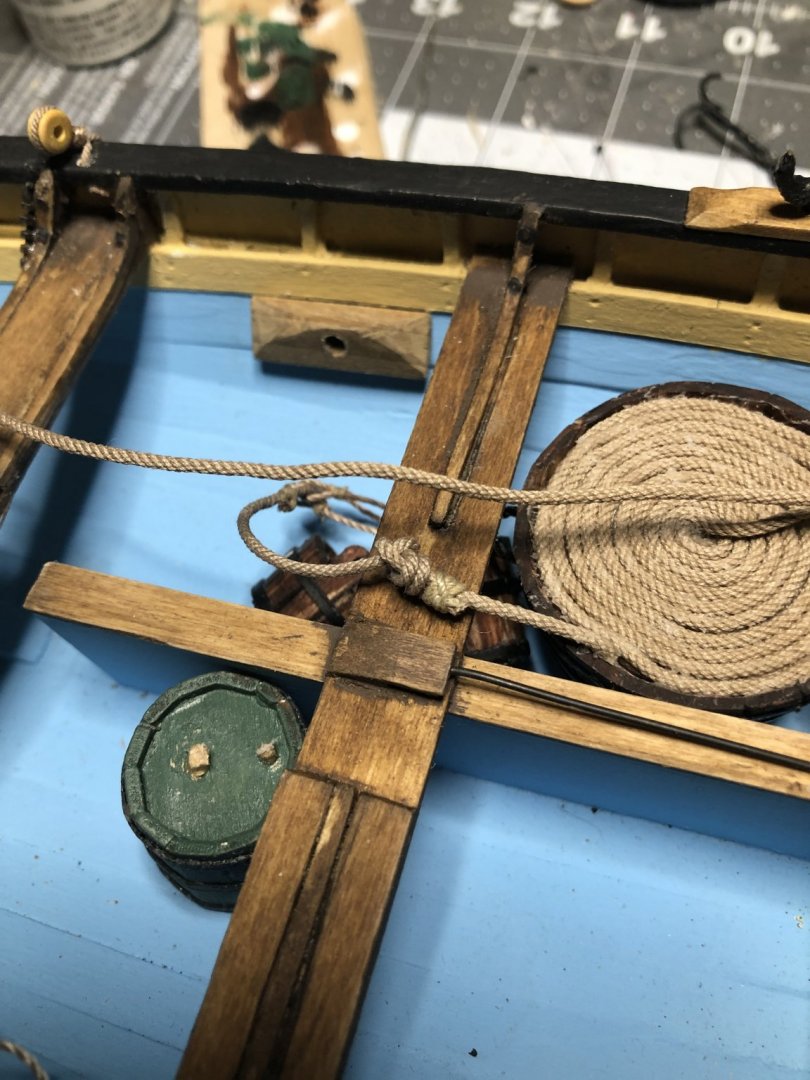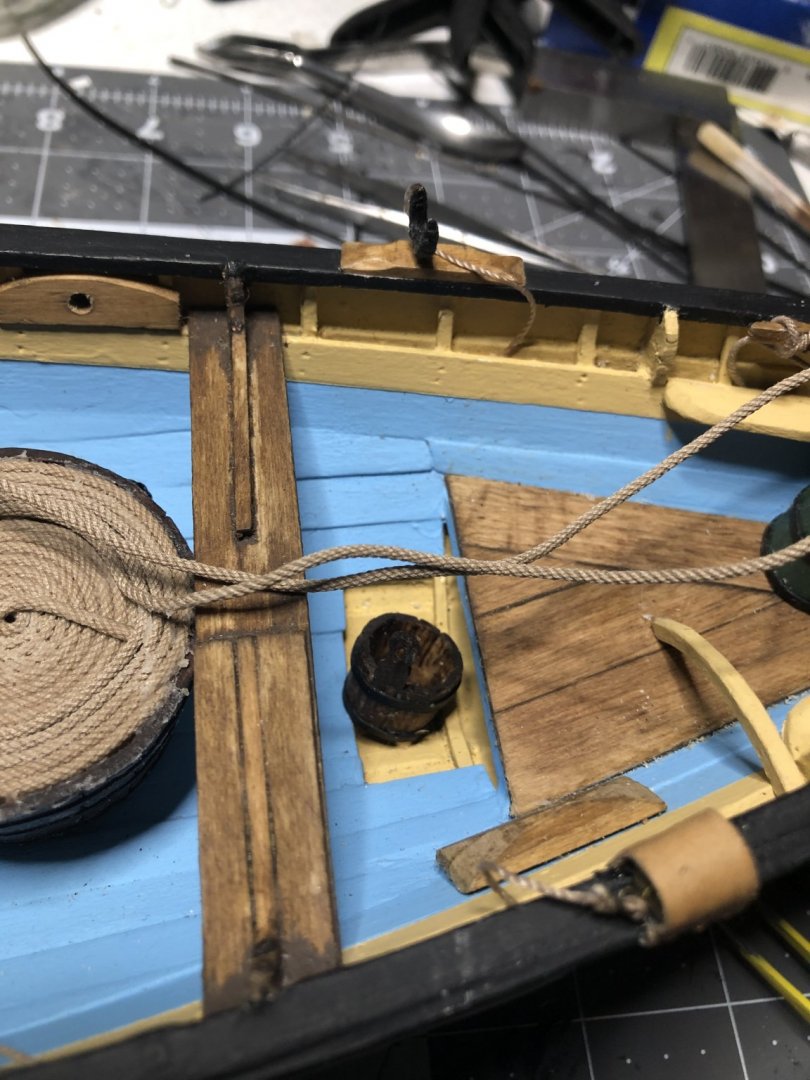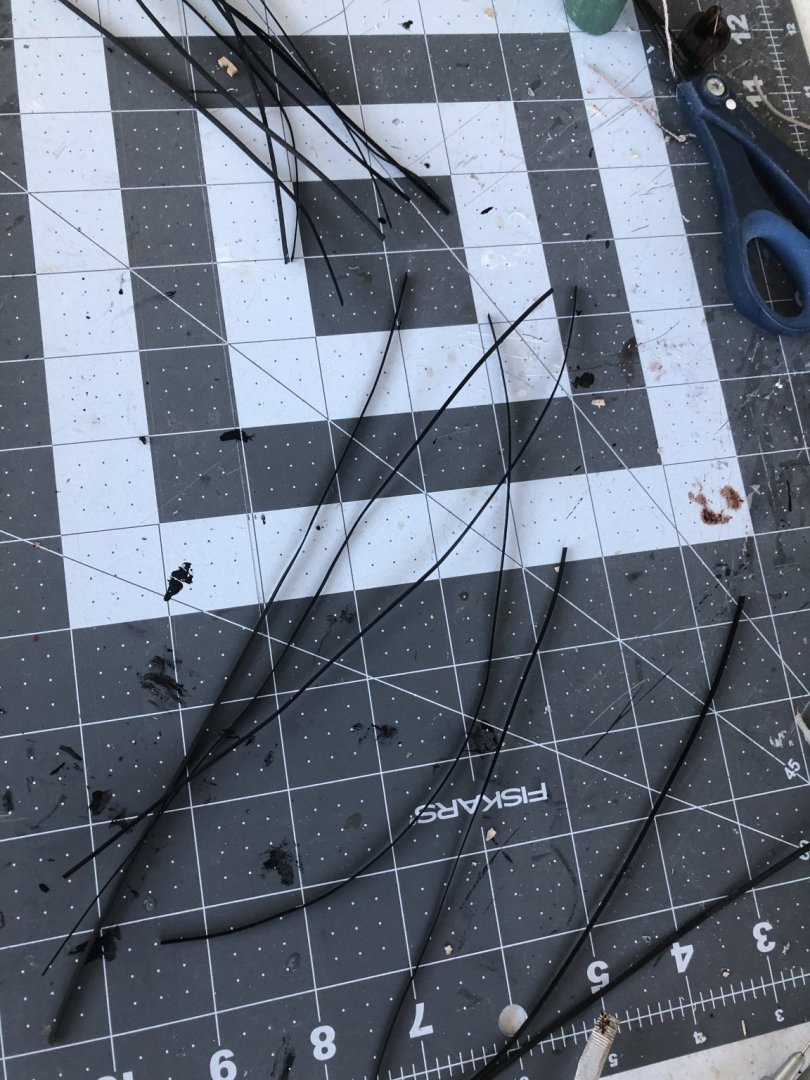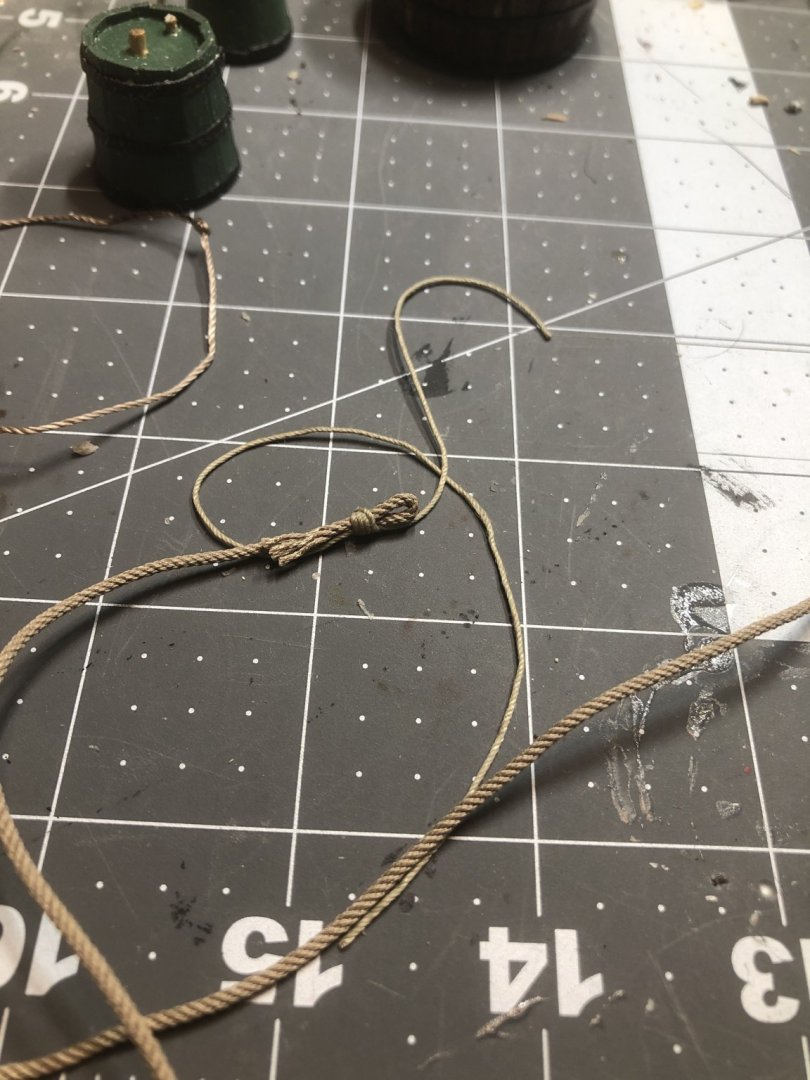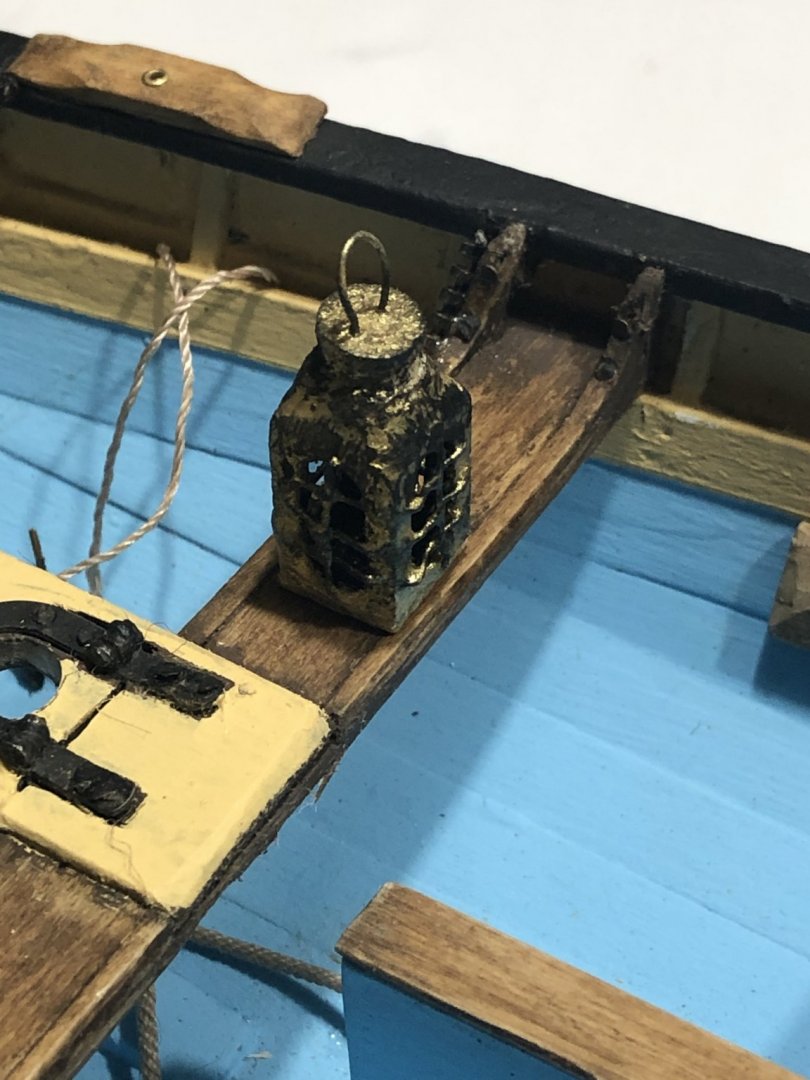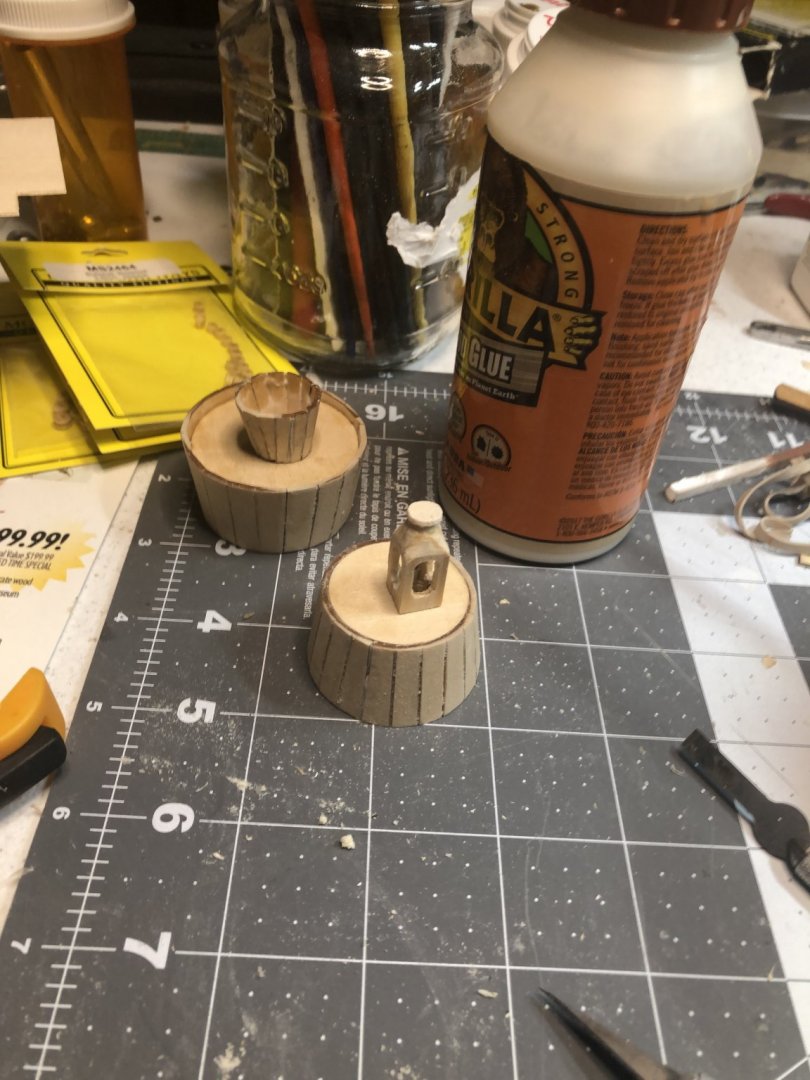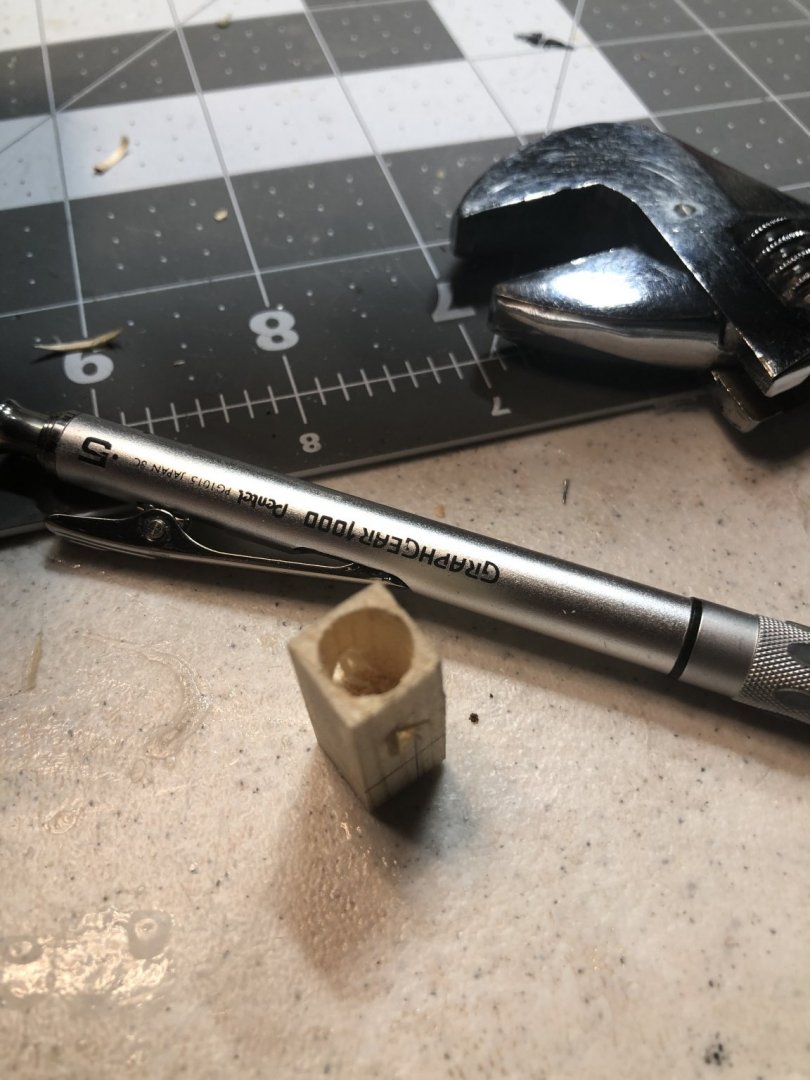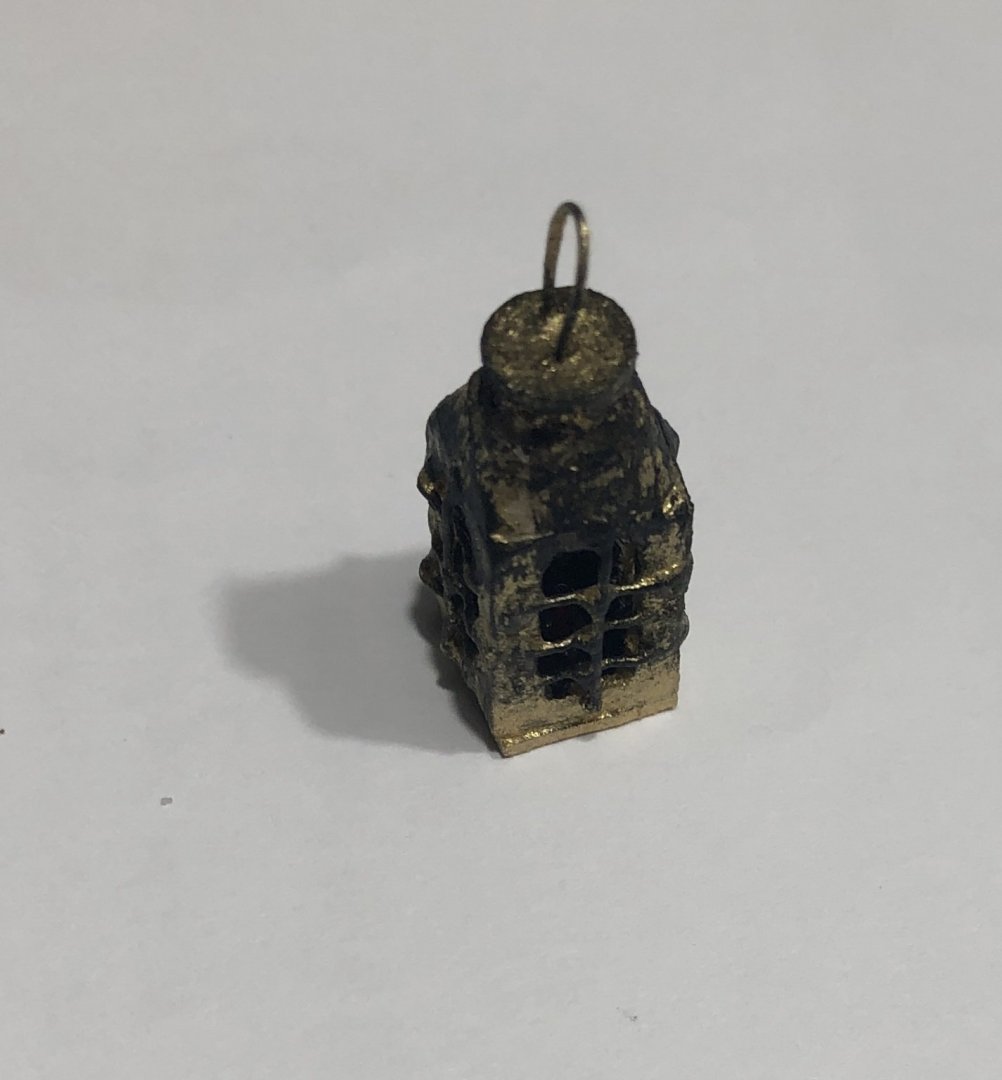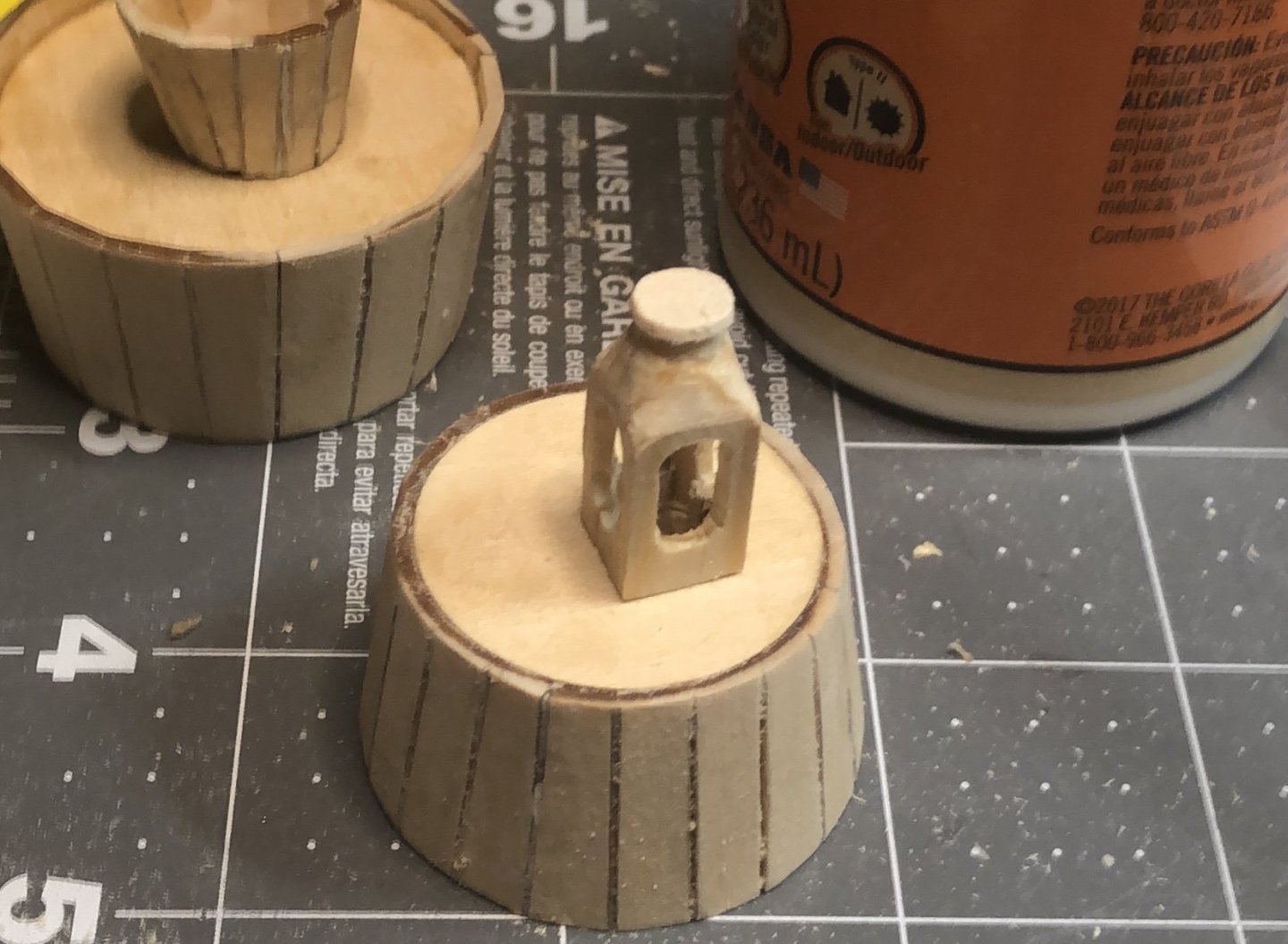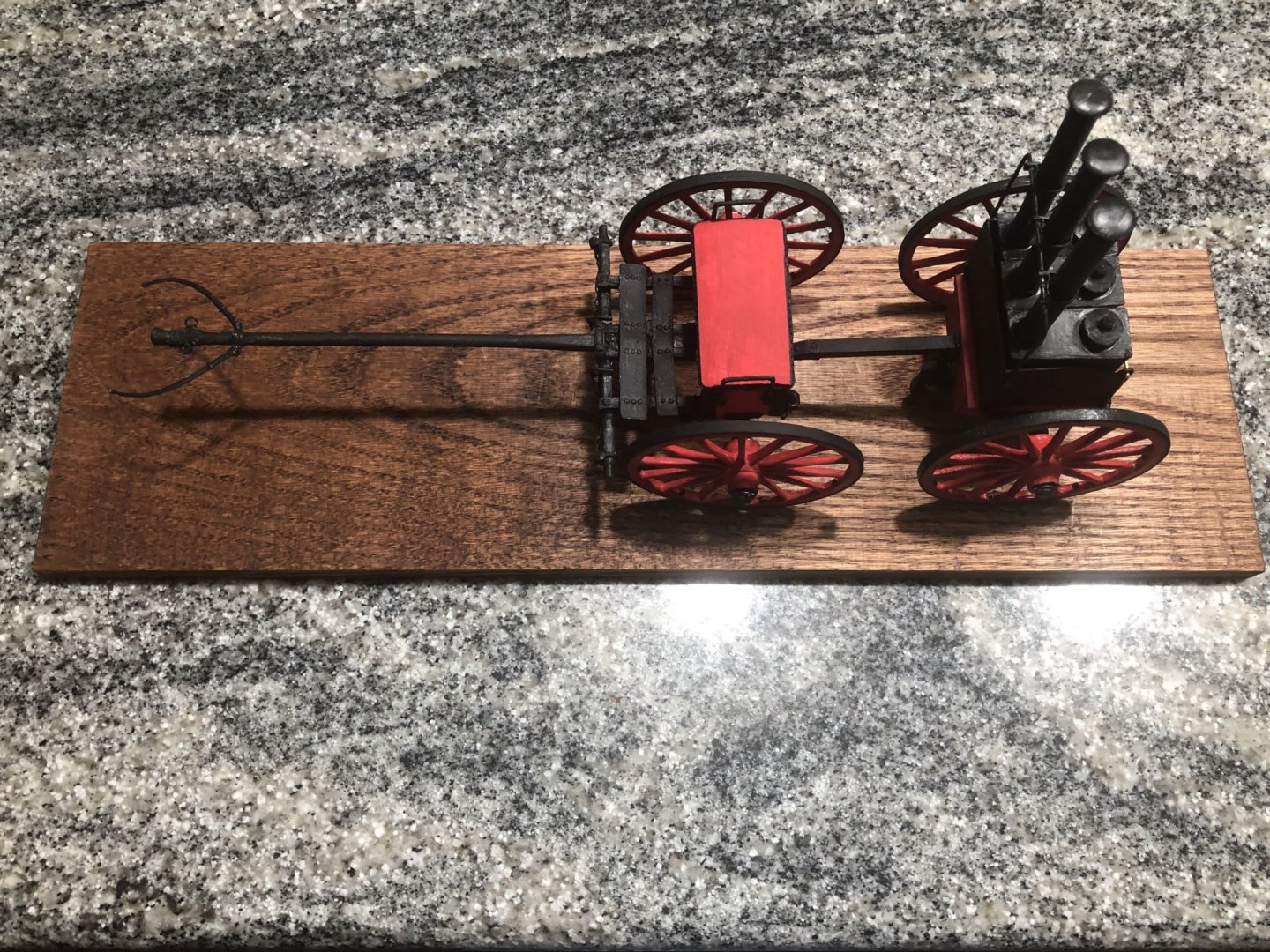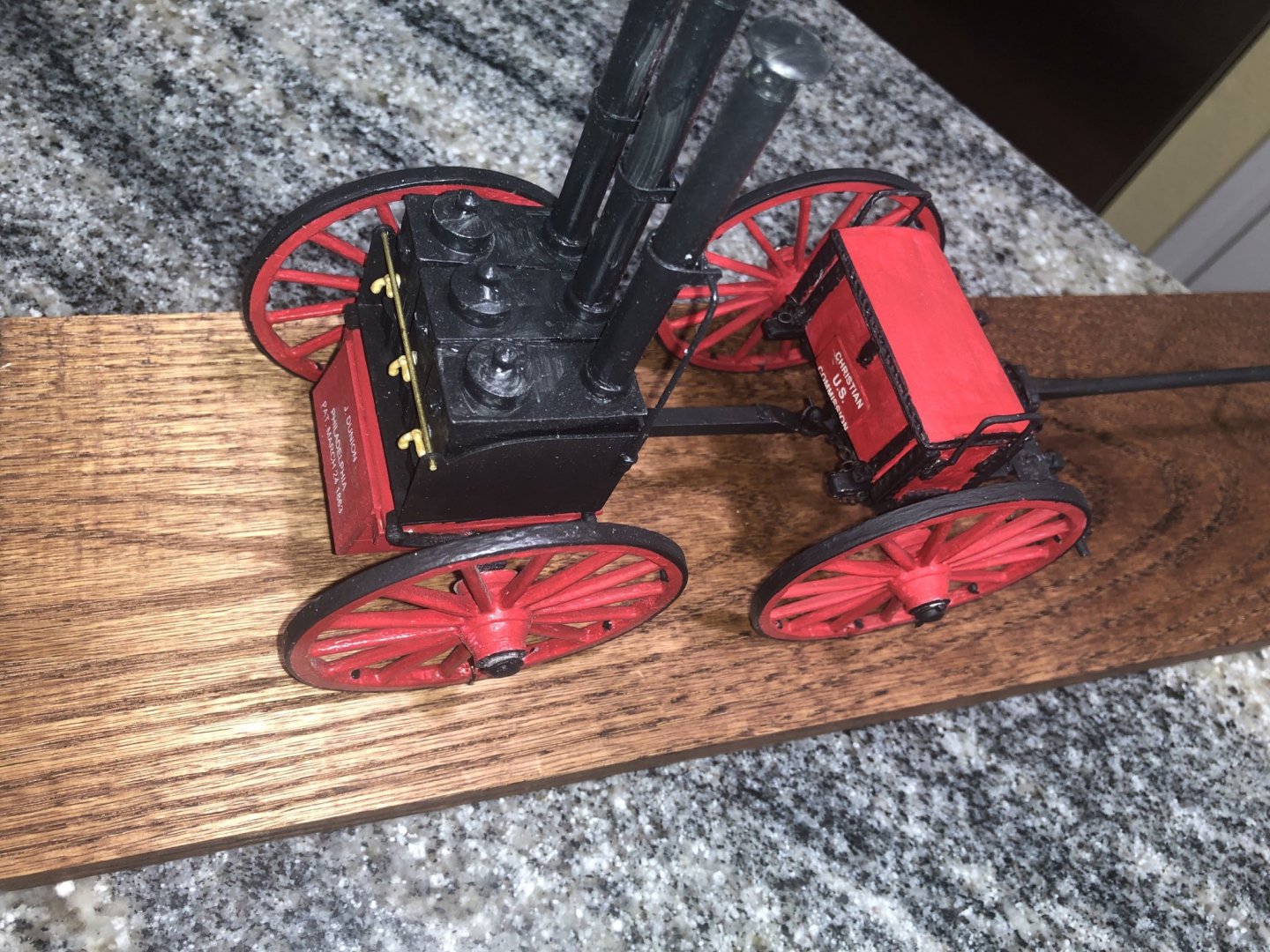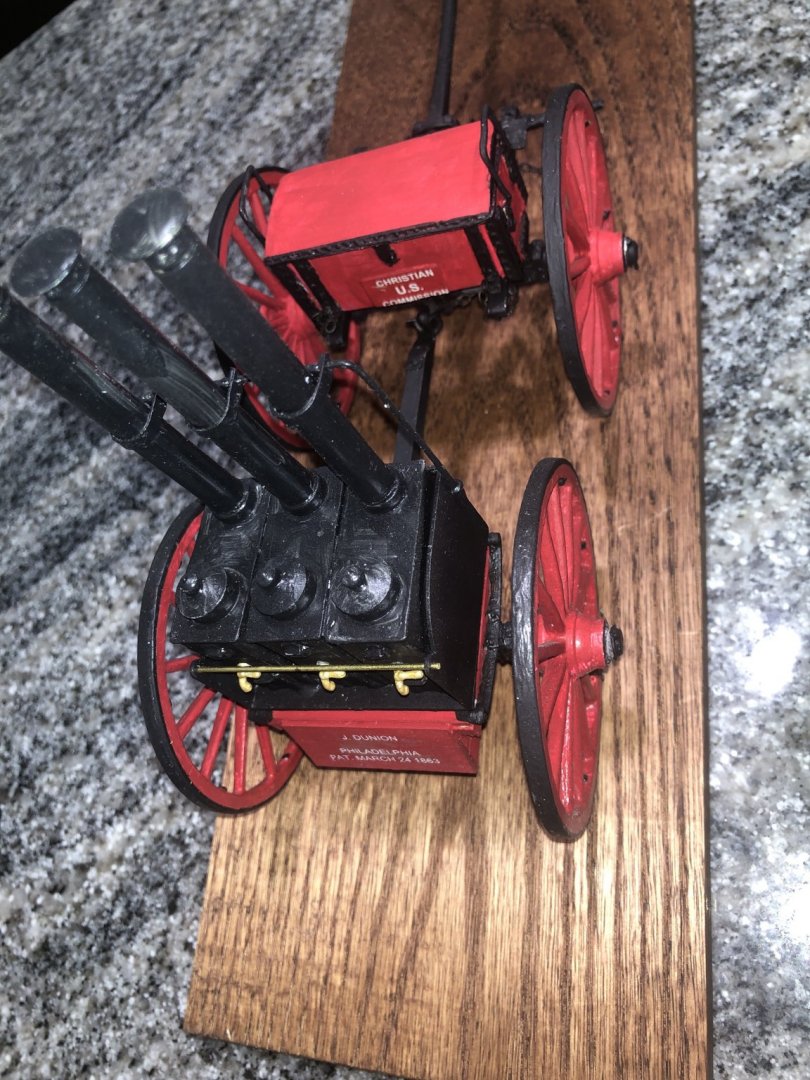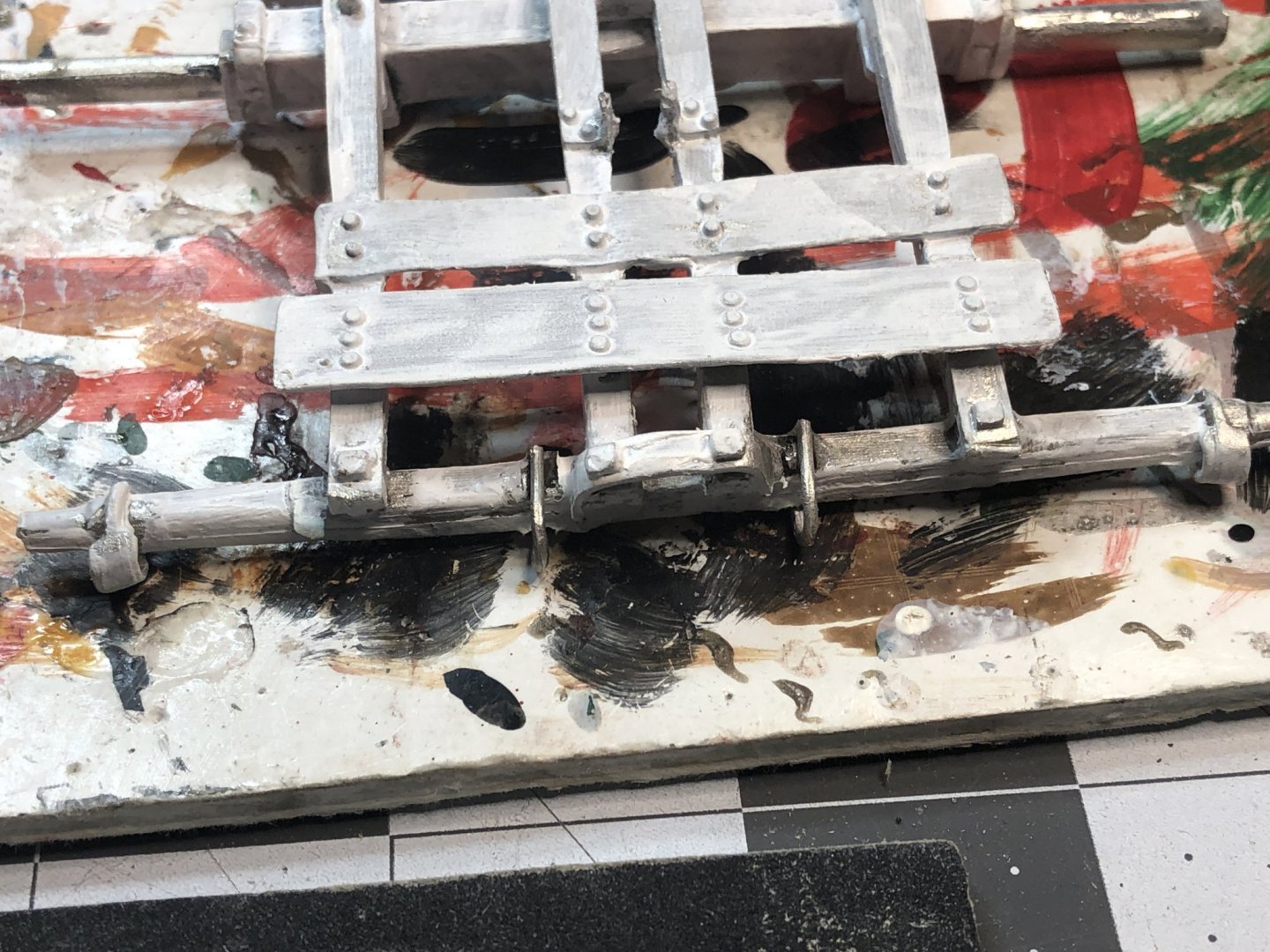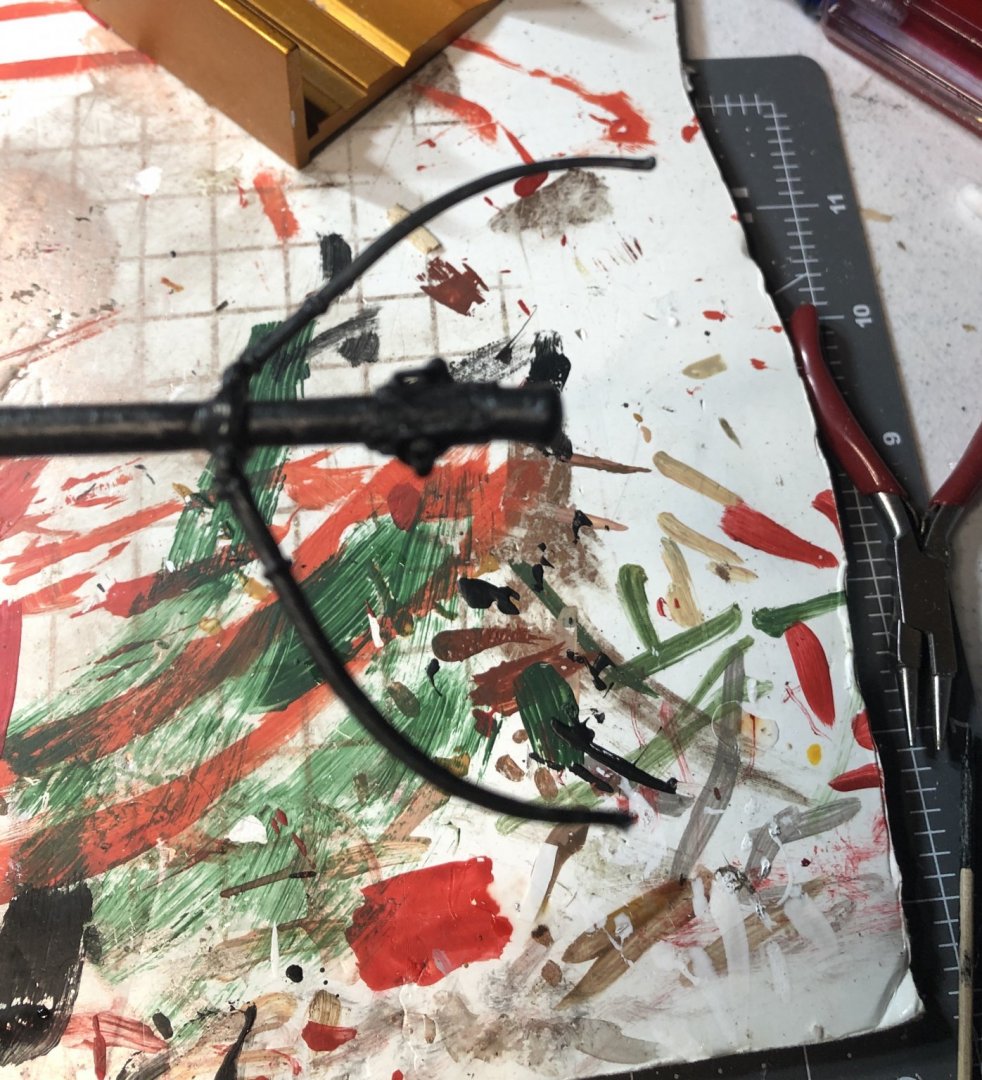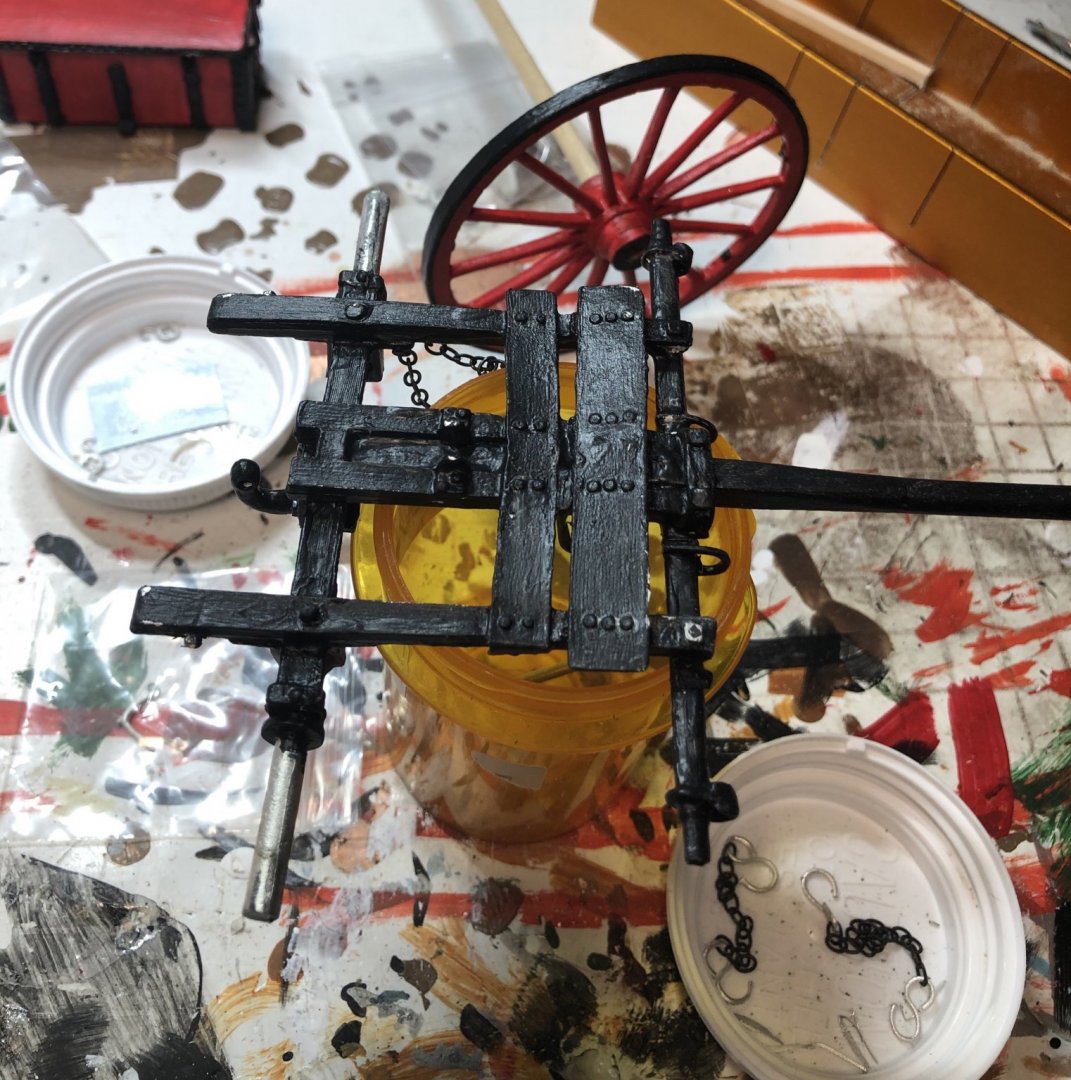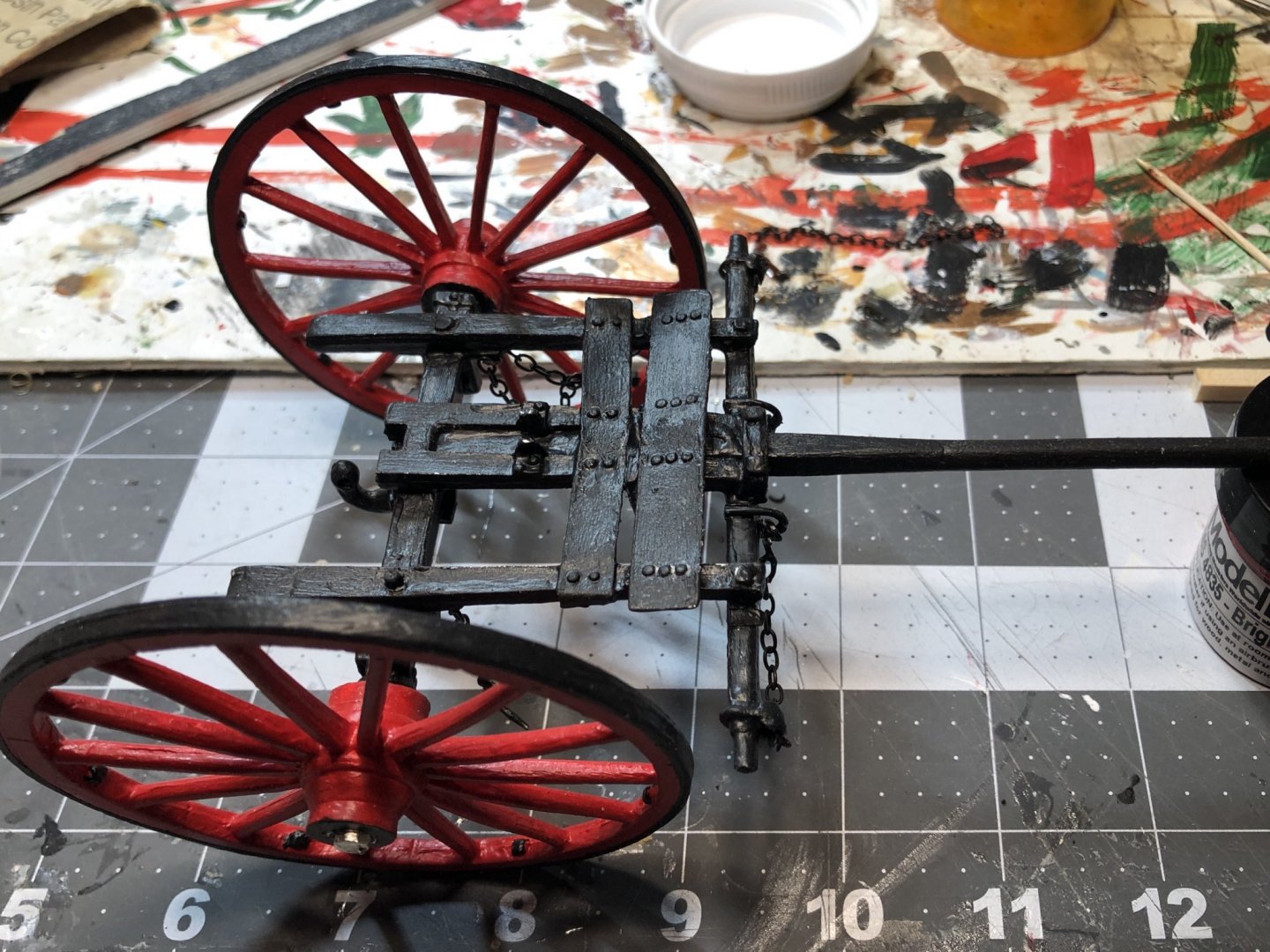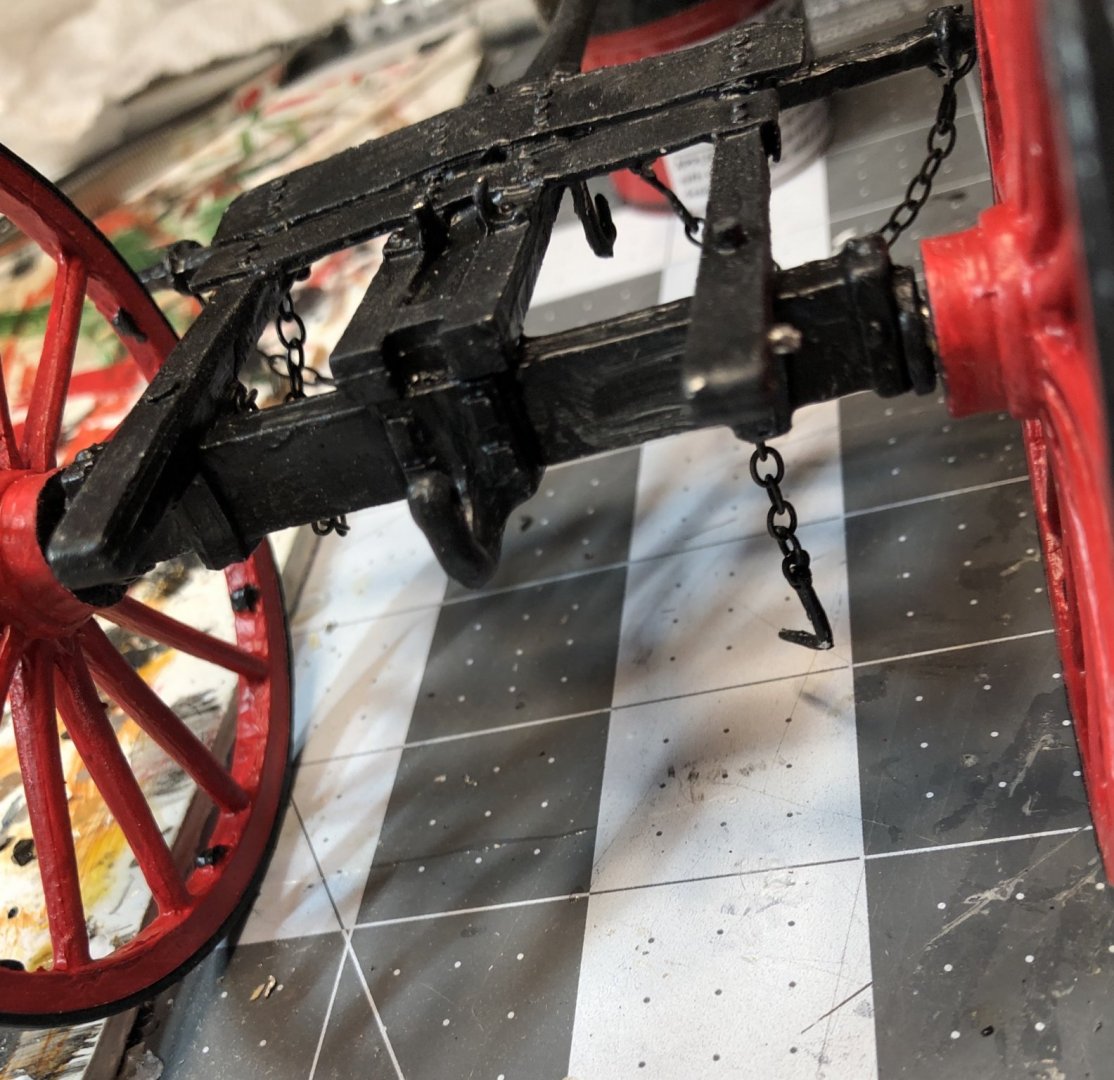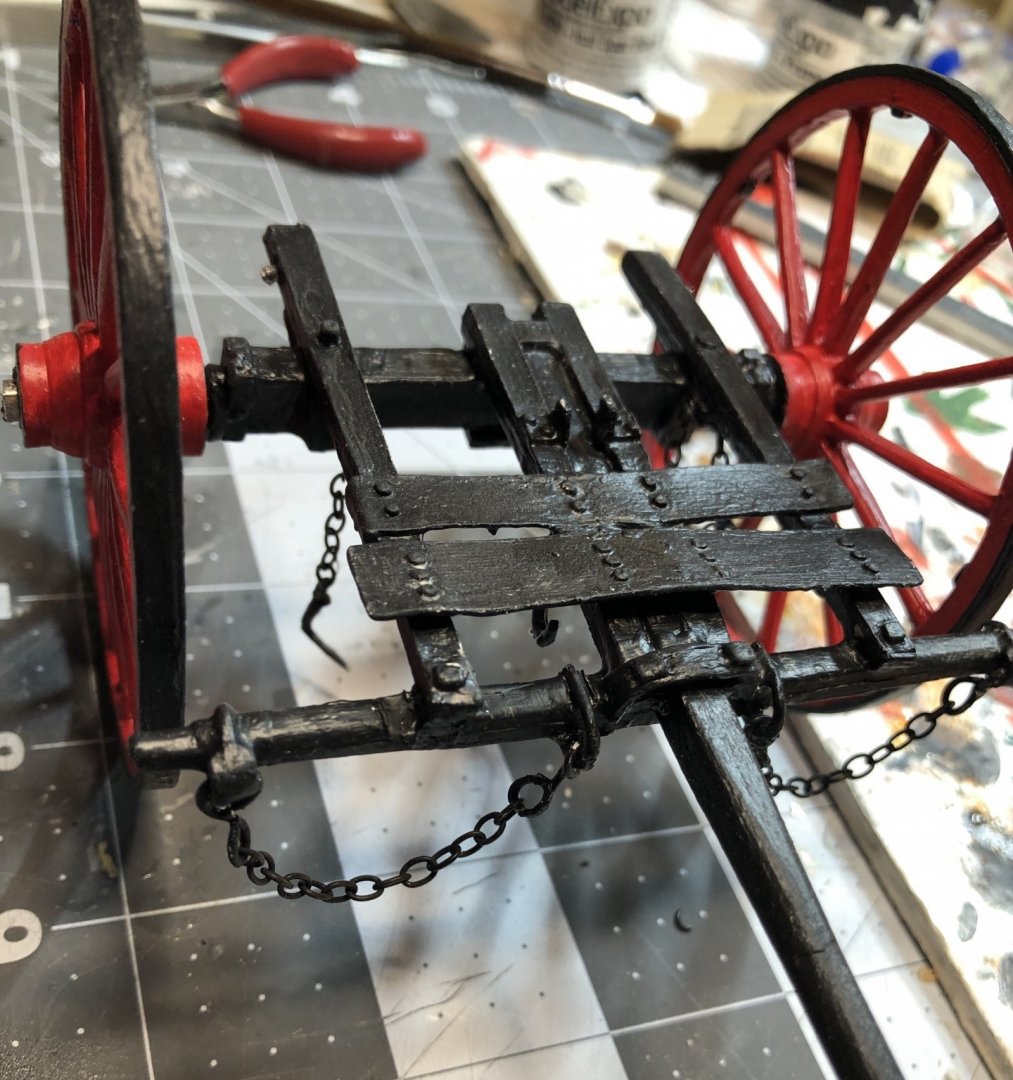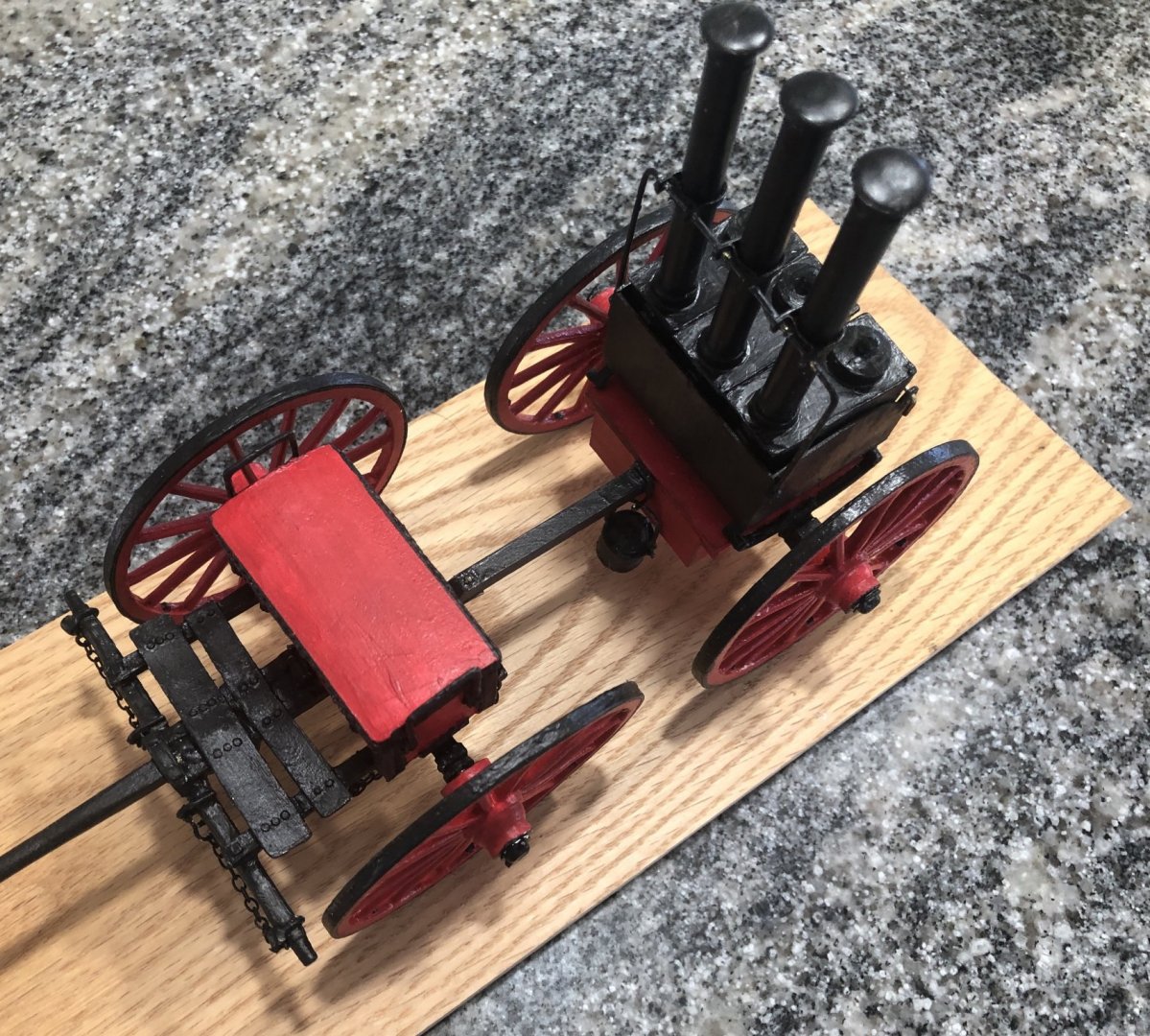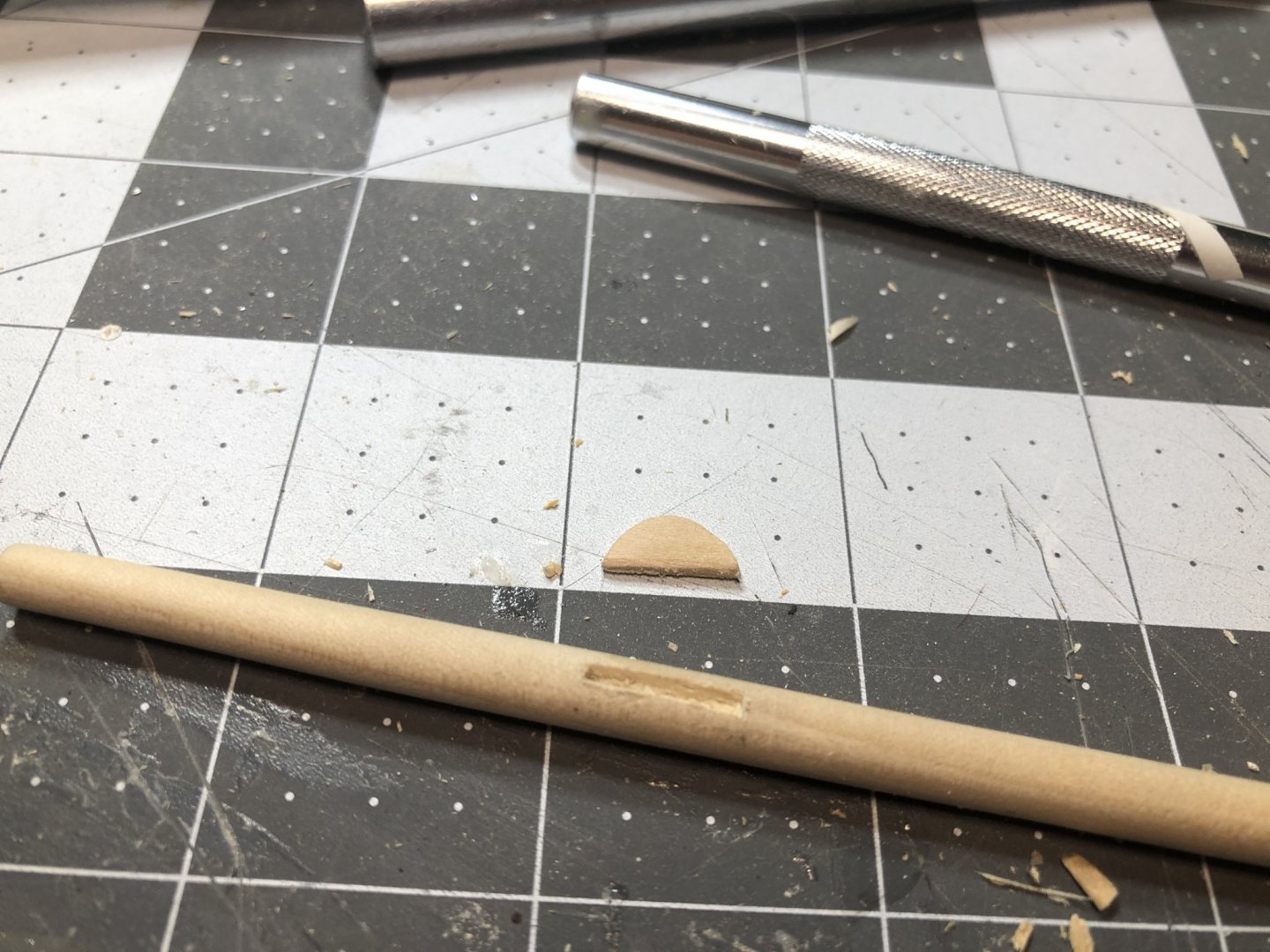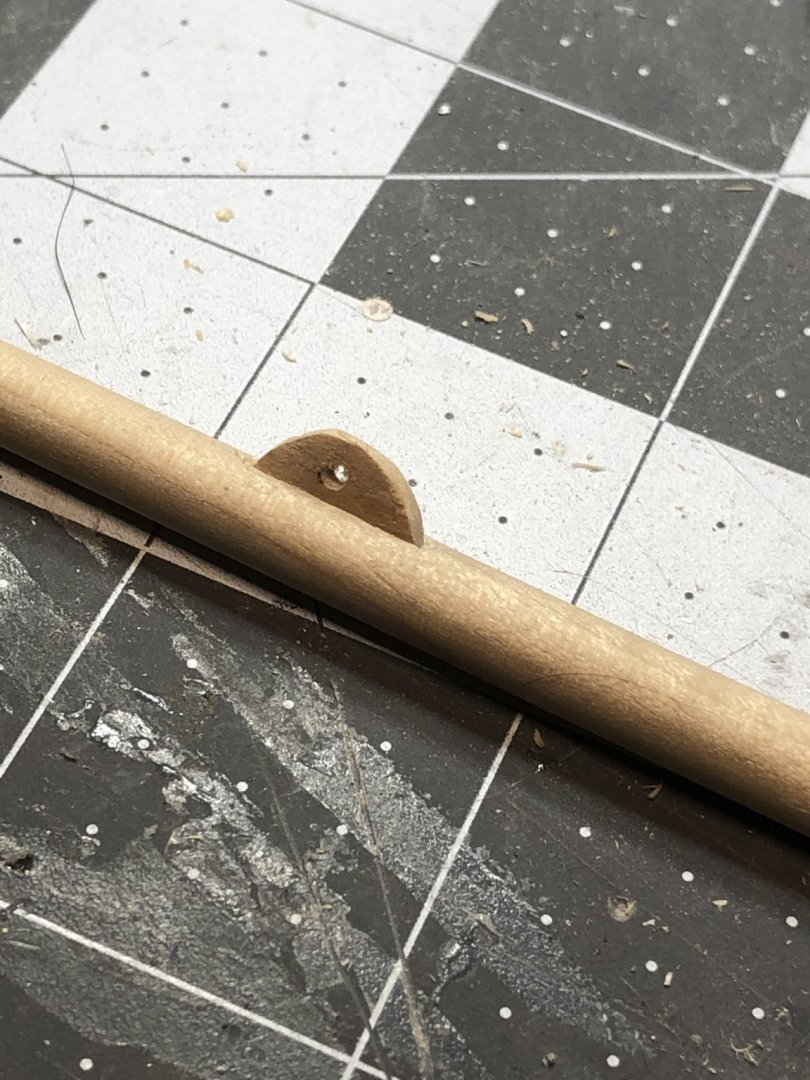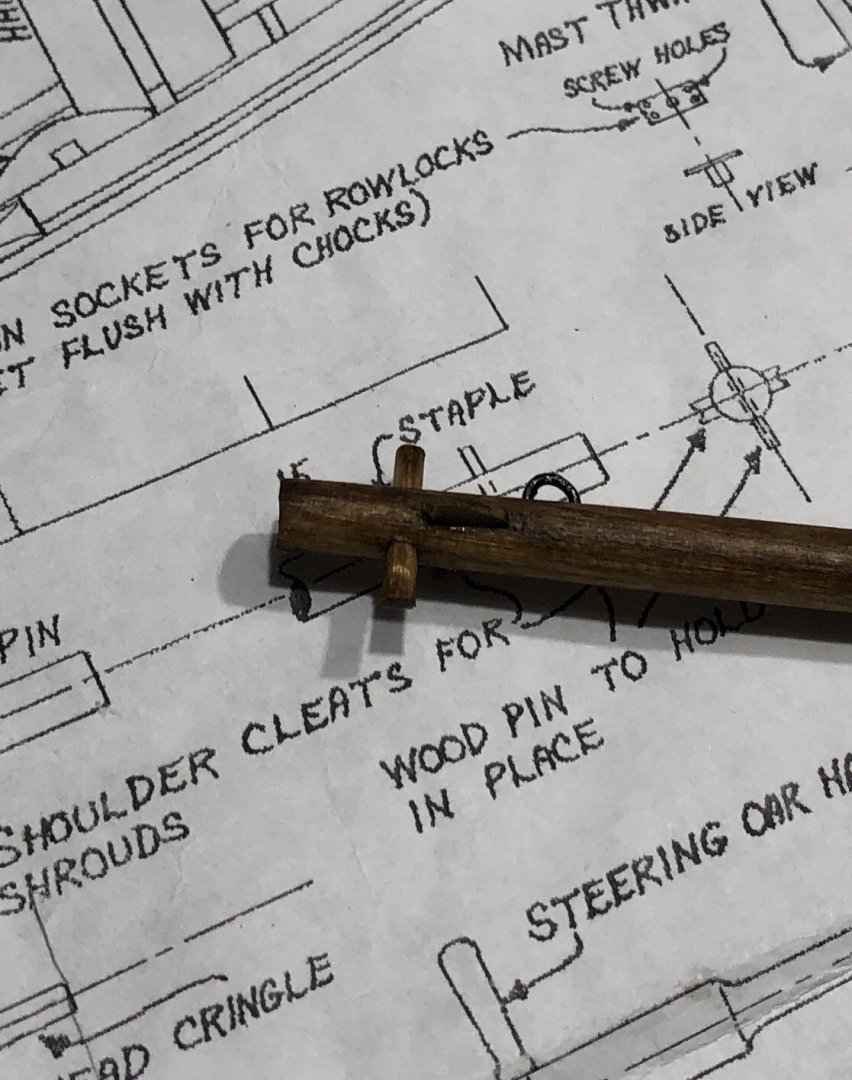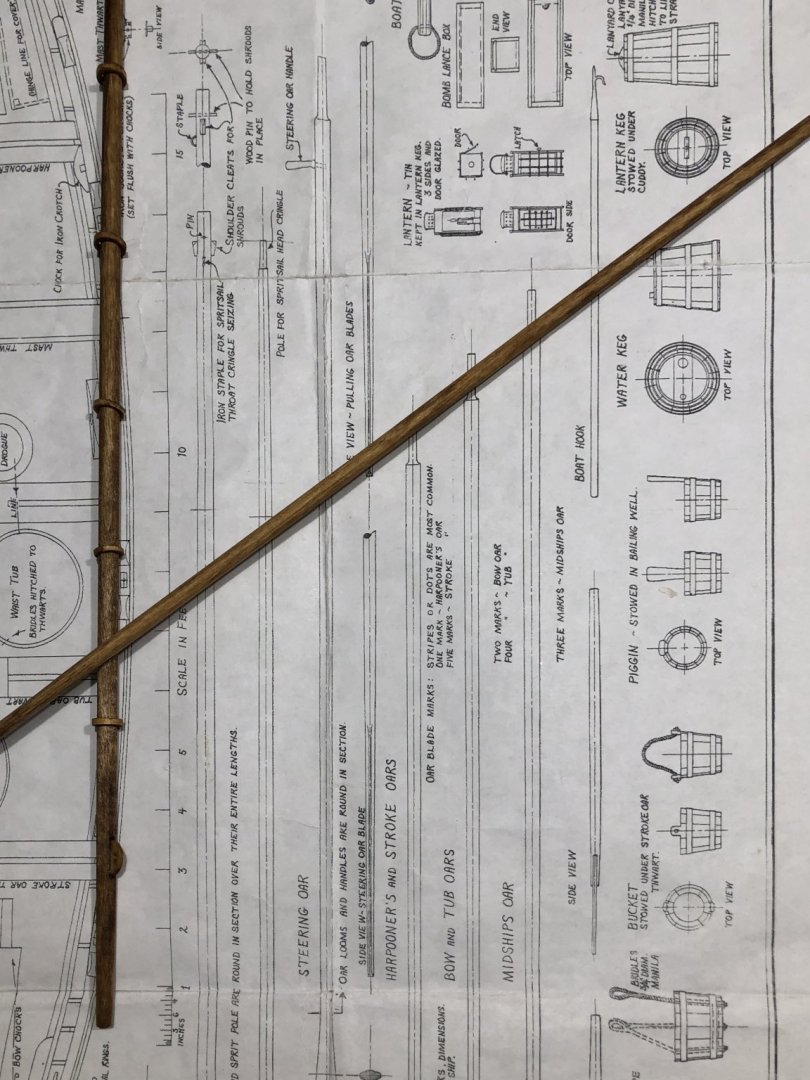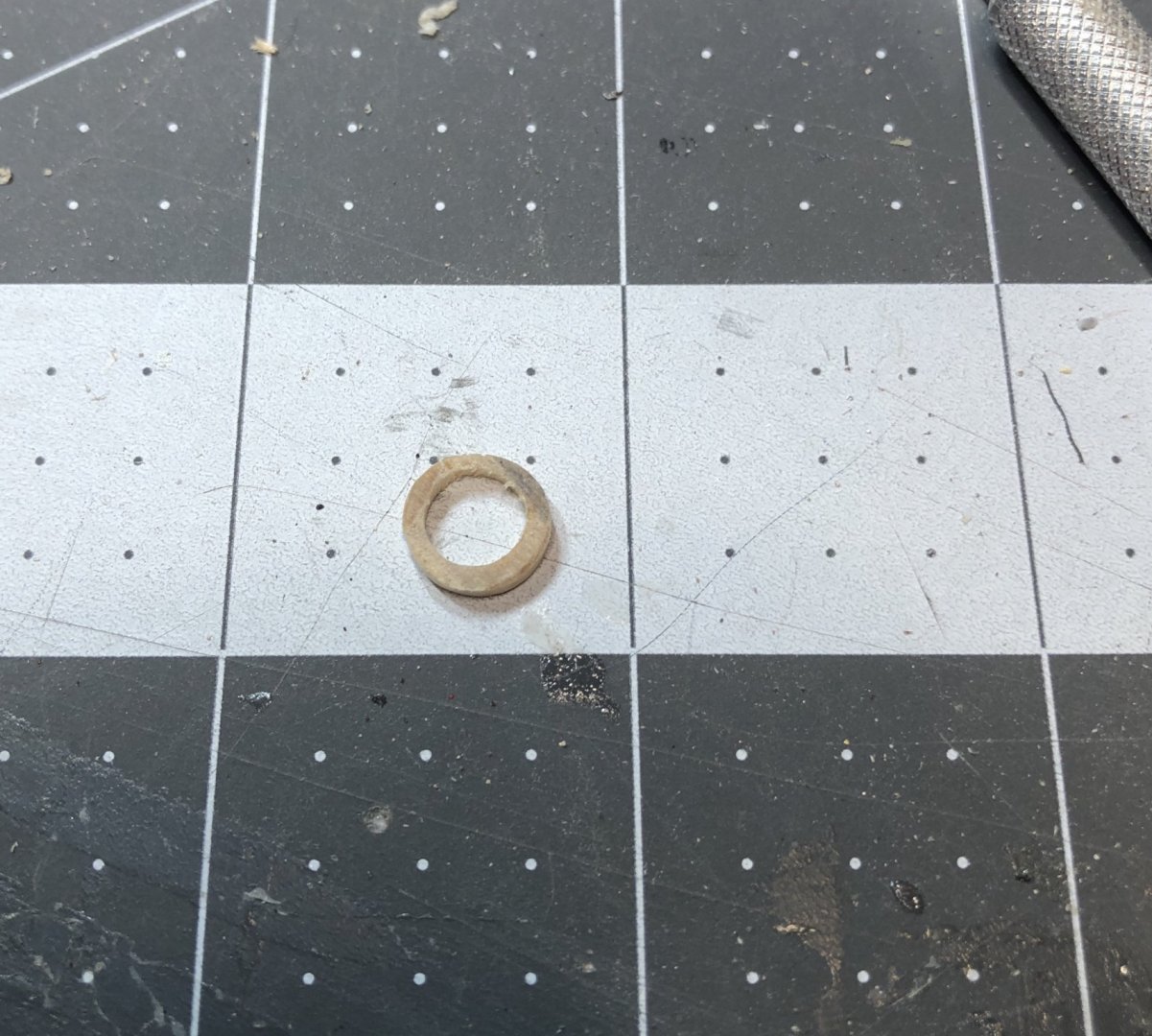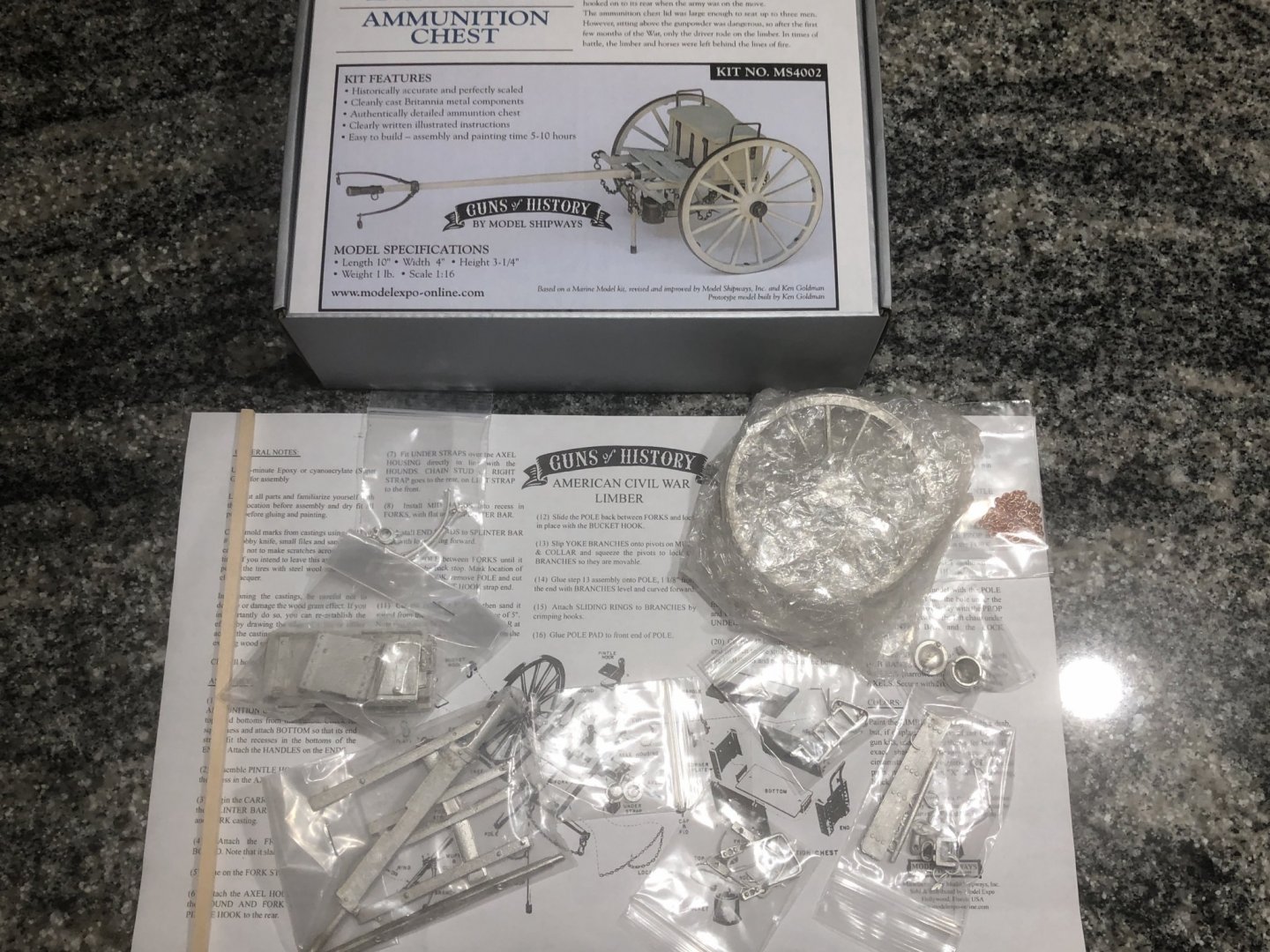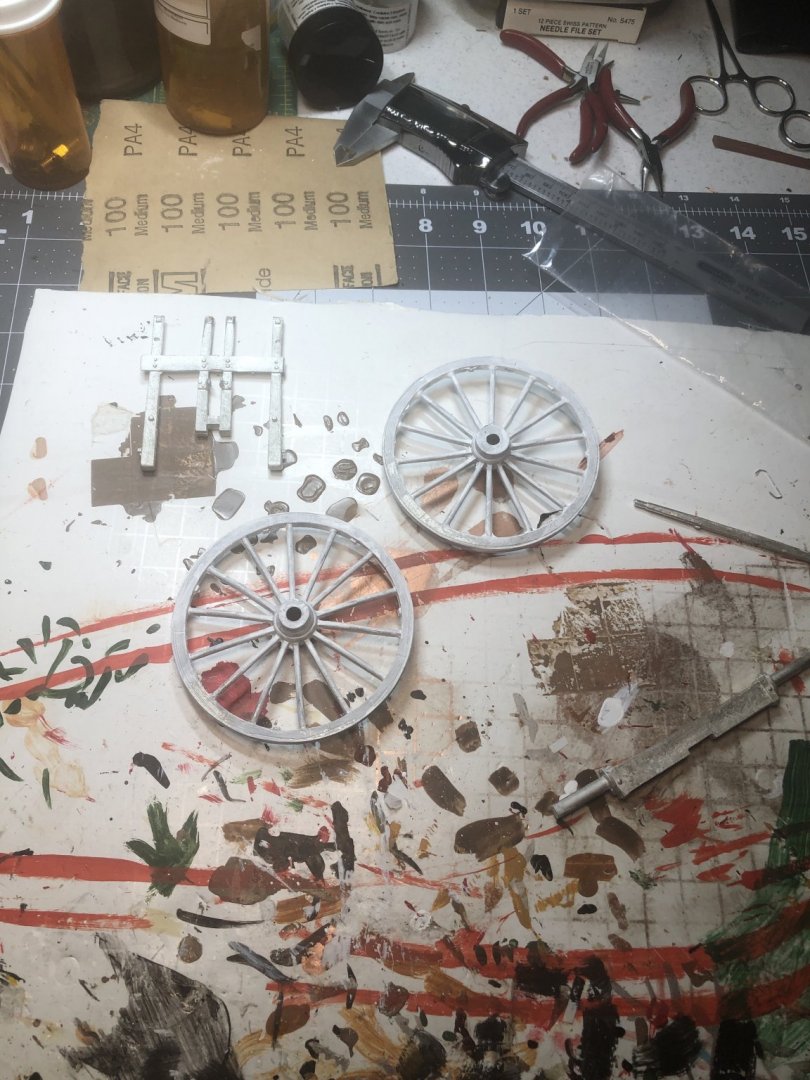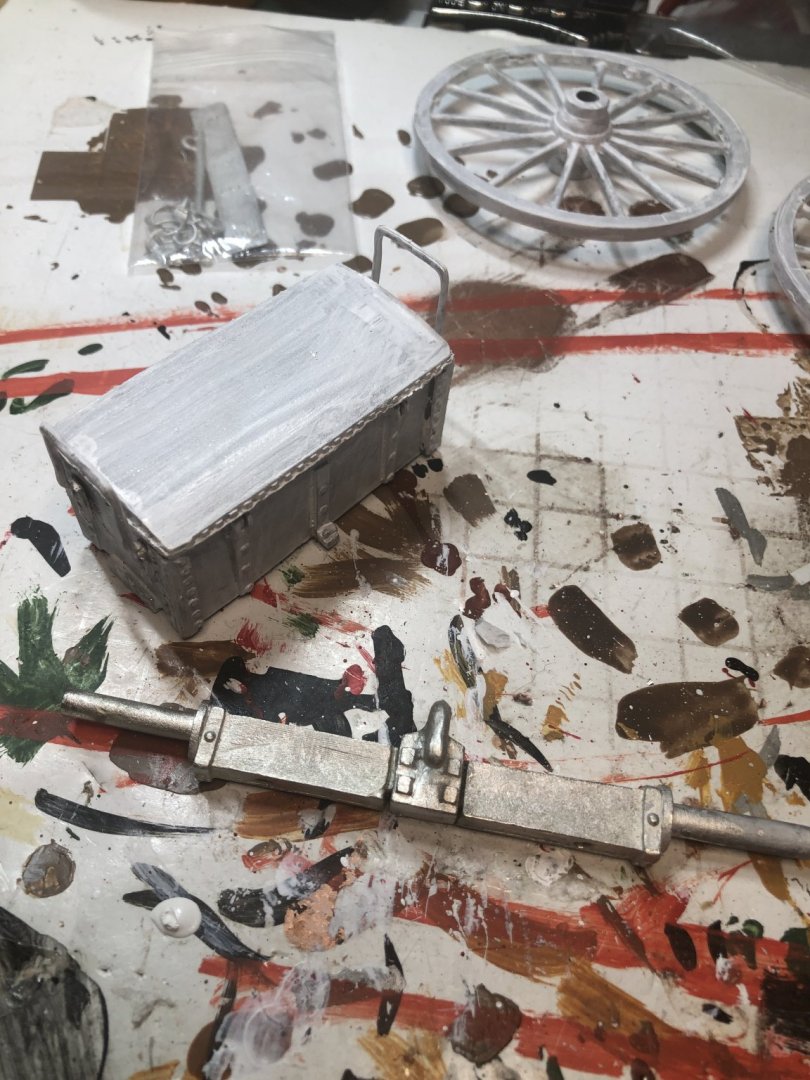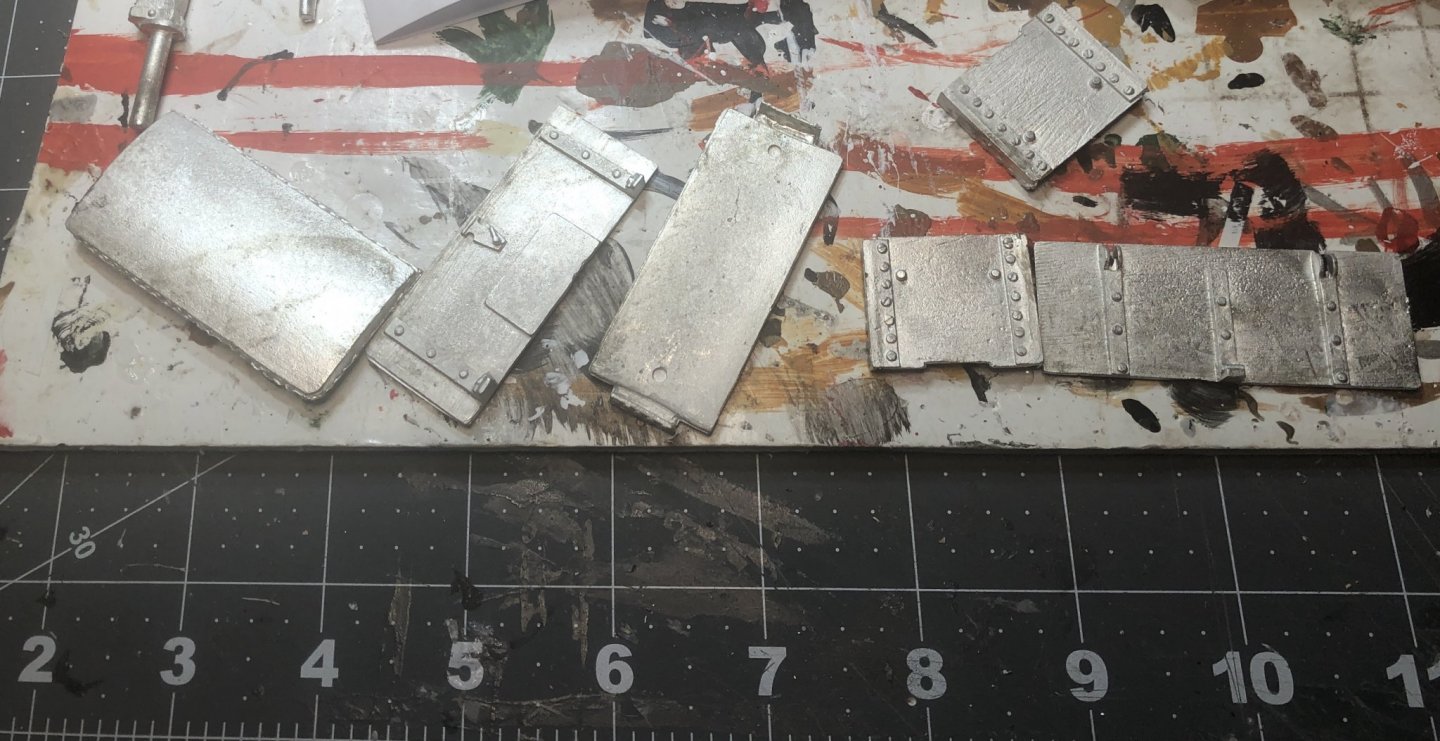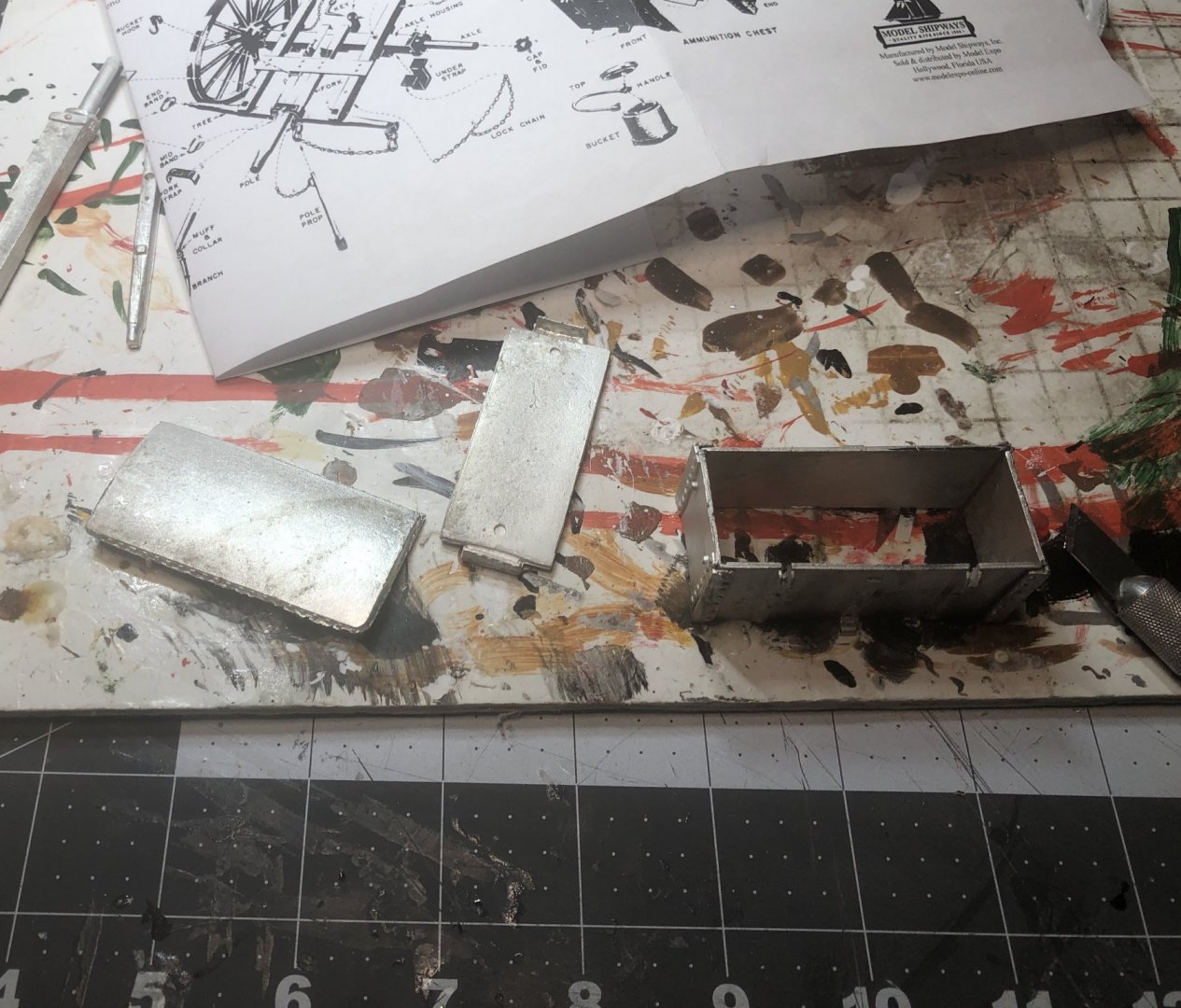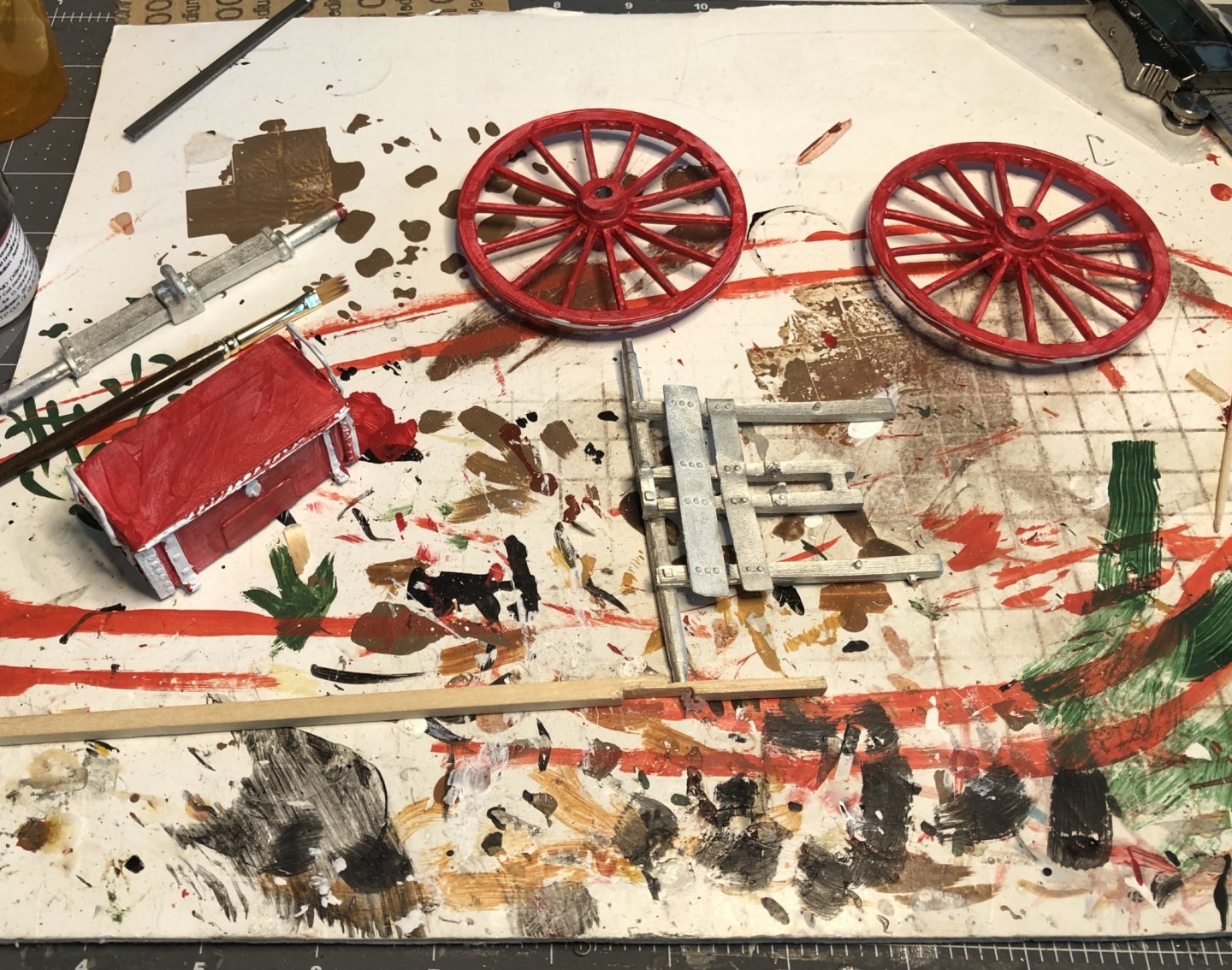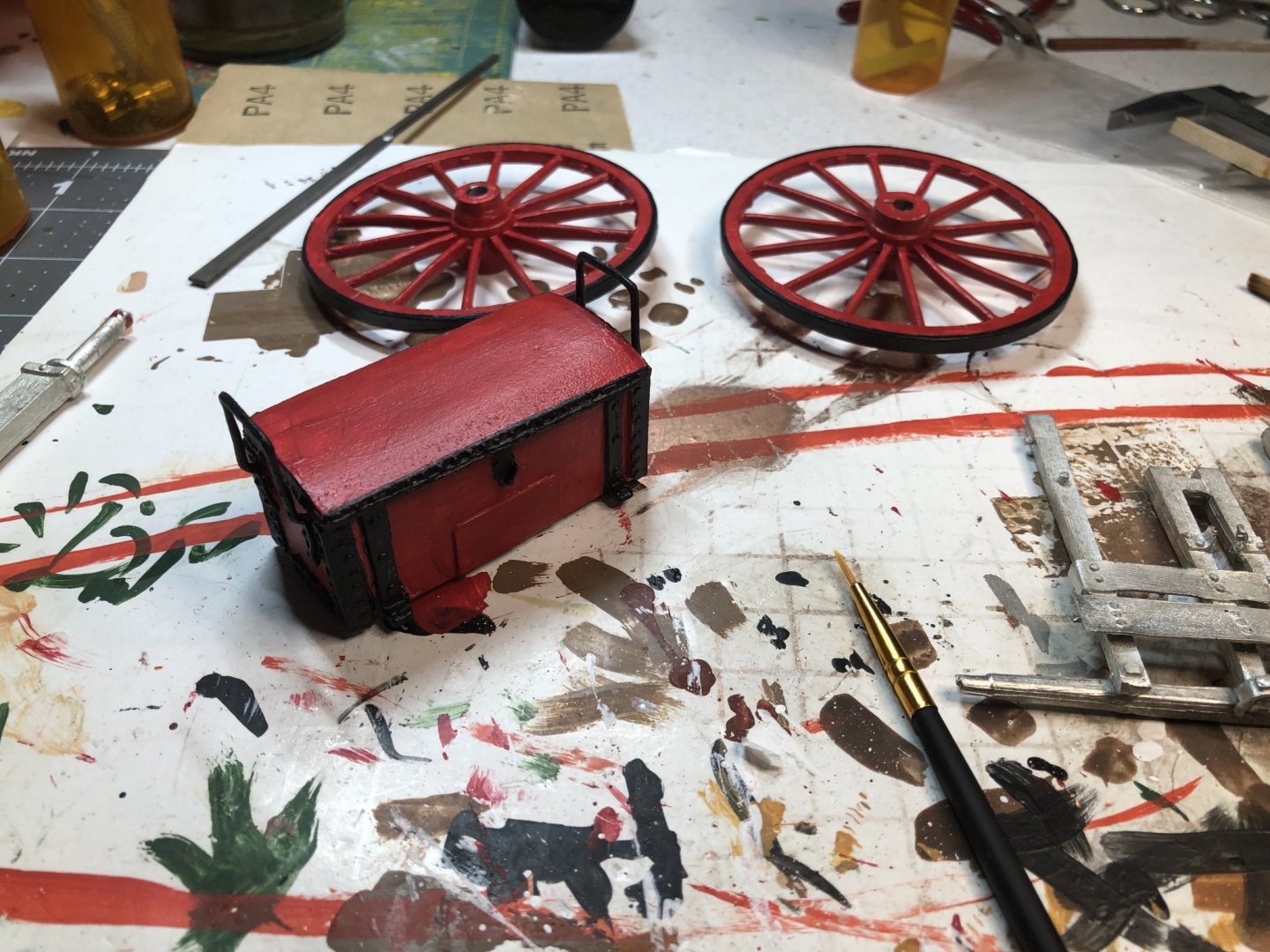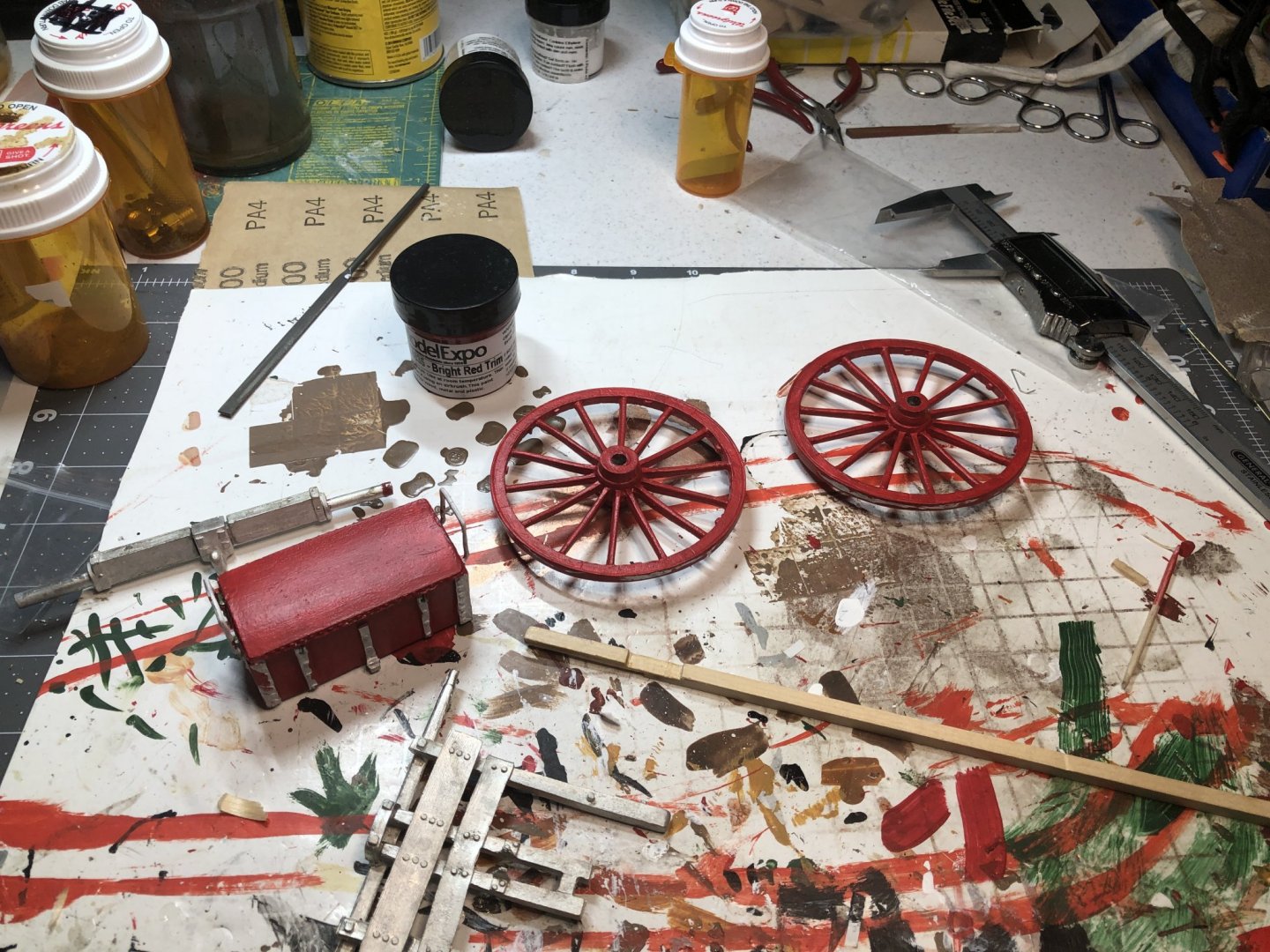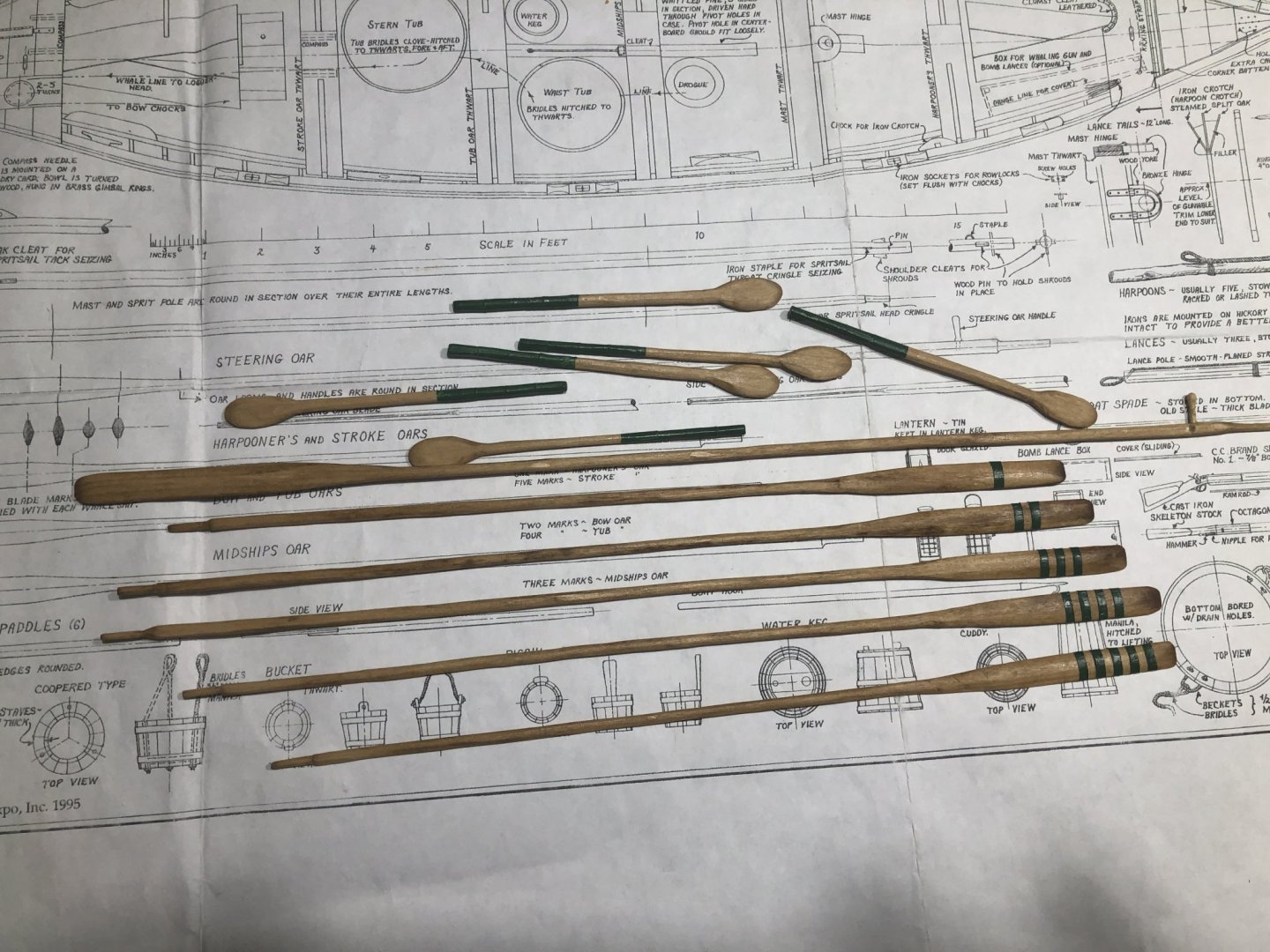-
Posts
304 -
Joined
-
Last visited
Content Type
Profiles
Forums
Gallery
Events
Everything posted by Dr PS - Paul Schulze
-
Well, I have finally started the build. After reading the instructions, I have decided to follow them for assembling the keel, frames and false deck. I think the false deck should properly align the frames. Some others have found success building jigs to aid in frame installation and alignment. First I drilled the required holes in the stem and stern posts. Next, I glued the two keel pieces together between wax paper held down by a “sad” iron. Sad irons were fire heated clothes irons. Then the finished piece was stained Kona color
-
Ah Colorado Springs one of my old stomping grounds. I grew up in Denver and I love the Rockies. I hope you get your move and house soon. Right now I’m working on my N scale railroad layout and have a project going which I want to finish before starting the Gokstad. BTW, I just finished a Model-Expo Gatling Gun for my son-in-law. These are quick and fun projects.
-
Hey Tiger, have you started a new build yet? If not, you might want to look at the Dusek models. They look like good kits. I am going to give a try at one of the Viking models as I am not really wanting to start a two or three year project.
-
Hello John, I just got my Dusek Gokstad and plan to start on it soon. I will be following your build with interest. 😎 Paul
- 38 replies
-
- finished
- marine model company
-
(and 1 more)
Tagged with:
-
I will be starting my third ship build log. Gokstad Viking Ship, a Dusek Ship Kits - 1:35 Scale The model is based on a find near Gokstad Norway in 1880. The prototype was built in mid ninth century. The ship was shown to be very seaworthy by Magnus Anderson in 1893. The ship had 32 oars and a square sail. I will be starting the actual building in a couple weeks but I would like to post the usual kit pictures.
-
Thanks I will. 😎. Thanks to all for your wonderful comments.
- 103 replies
-
- new bedford whaleboat
- model shipways
-
(and 1 more)
Tagged with:
-
I have finally finished the New Bedford Whaleboat. In line with the pictures in my last post, I have mounted my whaleboat on a whale 🐋 The picture of whalers in a whaleboat on a whale with sail tucked away was excellent inspiration for my final display. Thanks for looking and for all your comments. This has been a fun build and one which added more to my skill and confidence bag. My next project will be Model Shipways Gatling Gun.
- 103 replies
-
- new bedford whaleboat
- model shipways
-
(and 1 more)
Tagged with:
-
I made two waifs using a visible red color. I painted some “sail” cloth and rolled them onto the poles. I forgot to mention the making of the hatchet in my last post. The waifs and hatchet can be seen in the following pictures. The last item in completing the Whaleboat was the sail. I was in a quandary whether to have a raised sail or a wrapped sail as shown on the kit box (see post #1). I decided on the latter as it will fit my display (to be shown later when completed) as well as the following pictures which I found on the internet (no source was found). My finished sail is shown below.
- 103 replies
-
- new bedford whaleboat
- model shipways
-
(and 1 more)
Tagged with:
-
- 103 replies
-
- new bedford whaleboat
- model shipways
-
(and 1 more)
Tagged with:
-
I delete photos from text, not download area and some pop up in text. I cannot seem to delete them unless I trash them from download area which I don’t want to do if the.photo is used elsewhere in the text. Any suggestions?
- 103 replies
-
- new bedford whaleboat
- model shipways
-
(and 1 more)
Tagged with:
-
The Grapnel was made from 20 gauge galvanized wire. A length was folded twice yielding four strands. The strands were twisted tightly and soldered to form the shank. The end loops were cut open and the resulting tines were bent into an eye at one end and four prongs at the other. Grapnel painted black with line attached Grapnel stowed under Thigh Board in bow.
- 103 replies
-
- new bedford whaleboat
- model shipways
-
(and 1 more)
Tagged with:
-
I completed the “bucket “ drogue, bucket, piggin, water and lantern kegs, waist tub and line tub. The stave sheets were scored and bent to fit the plugs. After gluing and drying, all items were stained with a dark oak stain except the water and lantern kegs which were painted the green hull color. The hoops were made from 1/16” slices of Bristol paper darkened with India ink and glued on last. Eye splices on the end of the whale line. Hoop strips Each tub was completed by coiling two flakes or layers on each. Lines connecting the two tubs and drogue are shown. The line goes around Logger Head to the bow. Excess line is coiled in the box at the bow. The Painter or towing line is shown coiled on the port side behind the thigh board. The drogue is attached to the whale line with a Double Becket Hitch. Piggin Cannot get rid of following photos. Deleted them but they keep appearing. 😳
- 103 replies
-
- new bedford whaleboat
- model shipways
-
(and 1 more)
Tagged with:
-
Finished the Rowlocks, TubOar Lock and harpoon racks a while back and started on the lantern. I bored a hole in a 1/4” square rod, carved out the “windows,” mounted 28 gauge wire in place for grills and painted it brass color with some black streaks. The grill bars were bent at each end and put into holes drilled into the wood. Next was/is to finish the cooperage which I started before finishing the lantern.
- 103 replies
-
- new bedford whaleboat
- model shipways
-
(and 1 more)
Tagged with:
-
I finished the Civil War Coffee Wagon and Limber. I am working very slowly on the New Bedford Whaleboat but realize that making the sail is going to take me to another whole skill level. I need to learn how to sew. I will be doing some practicing with the help of my wife and her Bernina sewing machine. After the first of the year, I hope to start up again. In the meanwhile, Merry Christmas and Happy New Year.
- 103 replies
-
- new bedford whaleboat
- model shipways
-
(and 1 more)
Tagged with:
-
The Tree is attached to the Hound and the Fork Strap to the Fork. The The Muff Collar, Branches, Pad and Irons were attached to the Pole and painted black. The Pole, Axel and Under Straps were attached to the carriage and painted black. Chains were added. In the above three photos the wheels were not attached yet but only serving as props. The next photo shows the nearly finished models sitting on an unfinished mounting board. The wagon and limber will be attached to the board for display after it has been finished.
-
I am now working on a Civil war Limber to go with my finished Coffee Wagon. However, I did get the mast and sprit pole finished and ready for the sail. I have not decided how I want to do the sail. This will be a challenge no matter what I do. Rings for attaching the sail to the mast were made by drilling a hole in a dowel larger than the mast and then sectioning it. Mast and Sprit pole.
- 103 replies
-
- new bedford whaleboat
- model shipways
-
(and 1 more)
Tagged with:
-
Just received the Civil War Limber to add to the Coffee Wagon. This kit should not take very long. First the kit pics - I first tackled the wheels and ammunition chest. Most of this kit consists of parts made from Britannia metal. As a result of this, I will be using only CA glue. Below is shown a primed wheel, the primed chest and axel housing with the Pintle Hook attached. Britannia metal needs to be primed before painting. Next I painted the chest and wheels red with black trim. Normally the limber would be painted army colors but the Coffee Wagon was painted with red color to differentiate it from regular army use. Above and below are also shown the unpainted carriage and wood pole. I had to carve the pole (tongue) to fit the carriage. Since the supplied wood was square, the pole had to be carved round most of its length. The rest of the wagon will be black.
-
- 103 replies
-
- new bedford whaleboat
- model shipways
-
(and 1 more)
Tagged with:
About us
Modelshipworld - Advancing Ship Modeling through Research
SSL Secured
Your security is important for us so this Website is SSL-Secured
NRG Mailing Address
Nautical Research Guild
237 South Lincoln Street
Westmont IL, 60559-1917
Model Ship World ® and the MSW logo are Registered Trademarks, and belong to the Nautical Research Guild (United States Patent and Trademark Office: No. 6,929,264 & No. 6,929,274, registered Dec. 20, 2022)
Helpful Links
About the NRG
If you enjoy building ship models that are historically accurate as well as beautiful, then The Nautical Research Guild (NRG) is just right for you.
The Guild is a non-profit educational organization whose mission is to “Advance Ship Modeling Through Research”. We provide support to our members in their efforts to raise the quality of their model ships.
The Nautical Research Guild has published our world-renowned quarterly magazine, The Nautical Research Journal, since 1955. The pages of the Journal are full of articles by accomplished ship modelers who show you how they create those exquisite details on their models, and by maritime historians who show you the correct details to build. The Journal is available in both print and digital editions. Go to the NRG web site (www.thenrg.org) to download a complimentary digital copy of the Journal. The NRG also publishes plan sets, books and compilations of back issues of the Journal and the former Ships in Scale and Model Ship Builder magazines.



